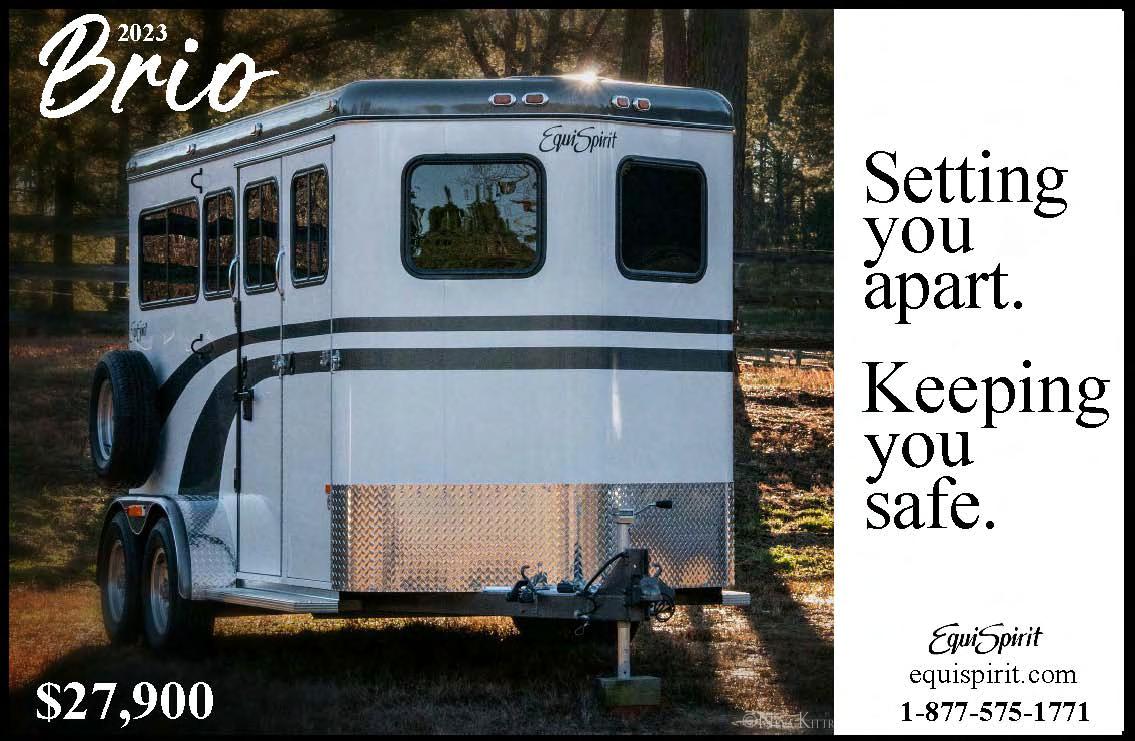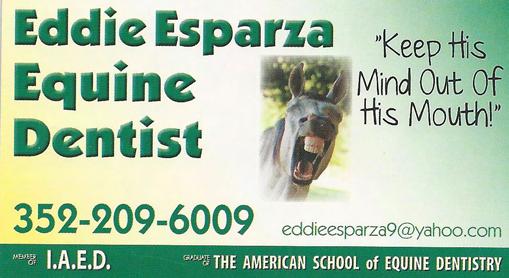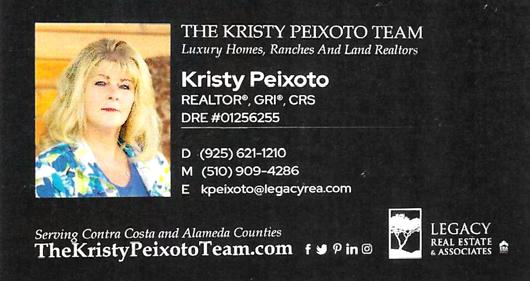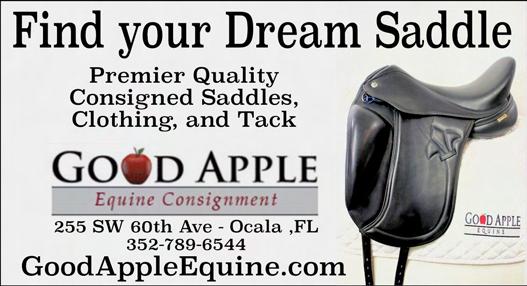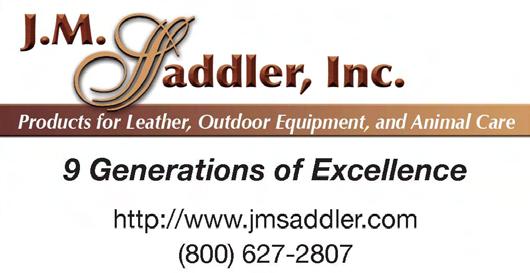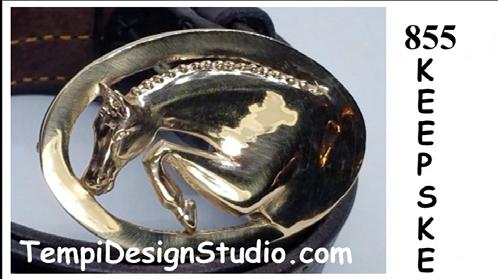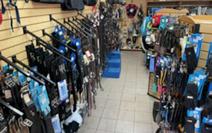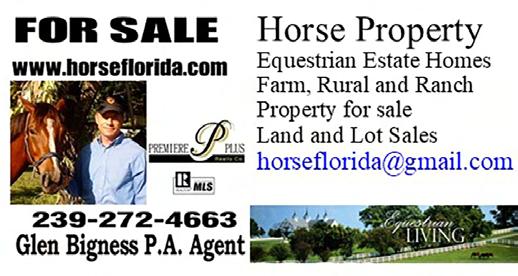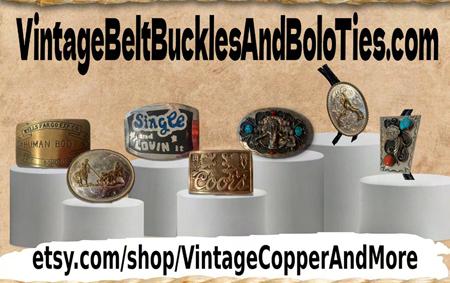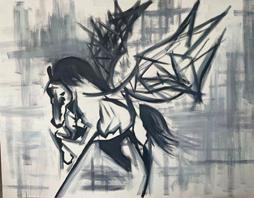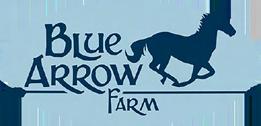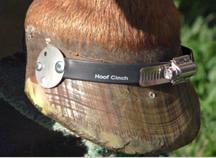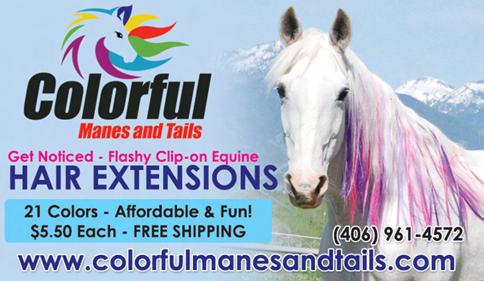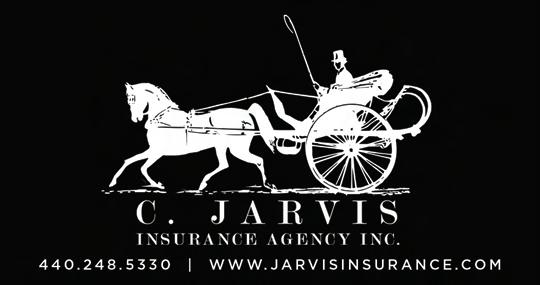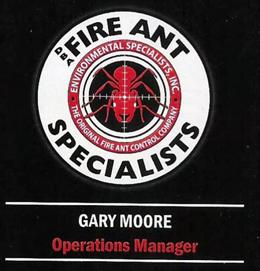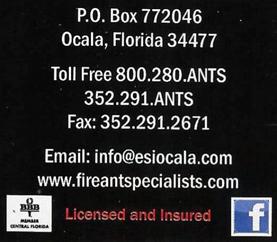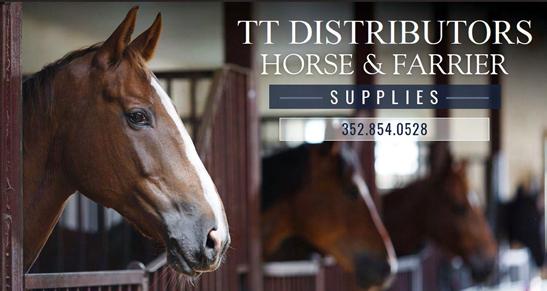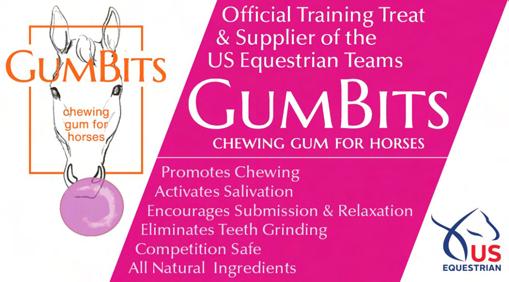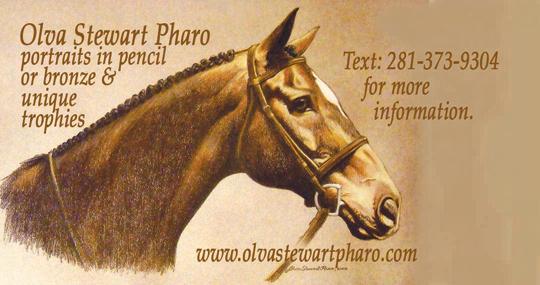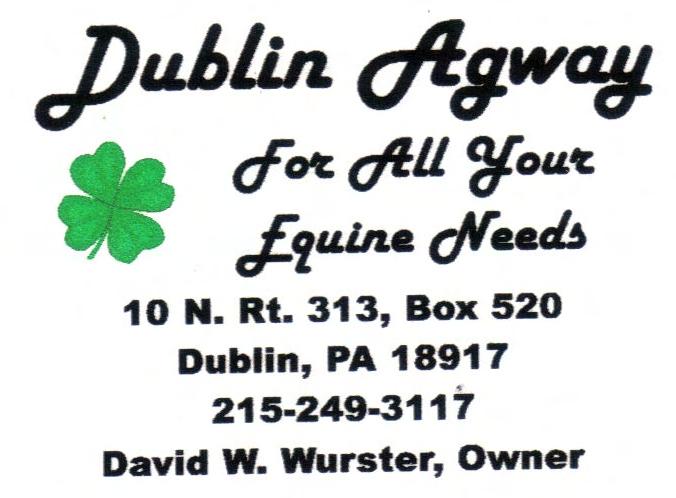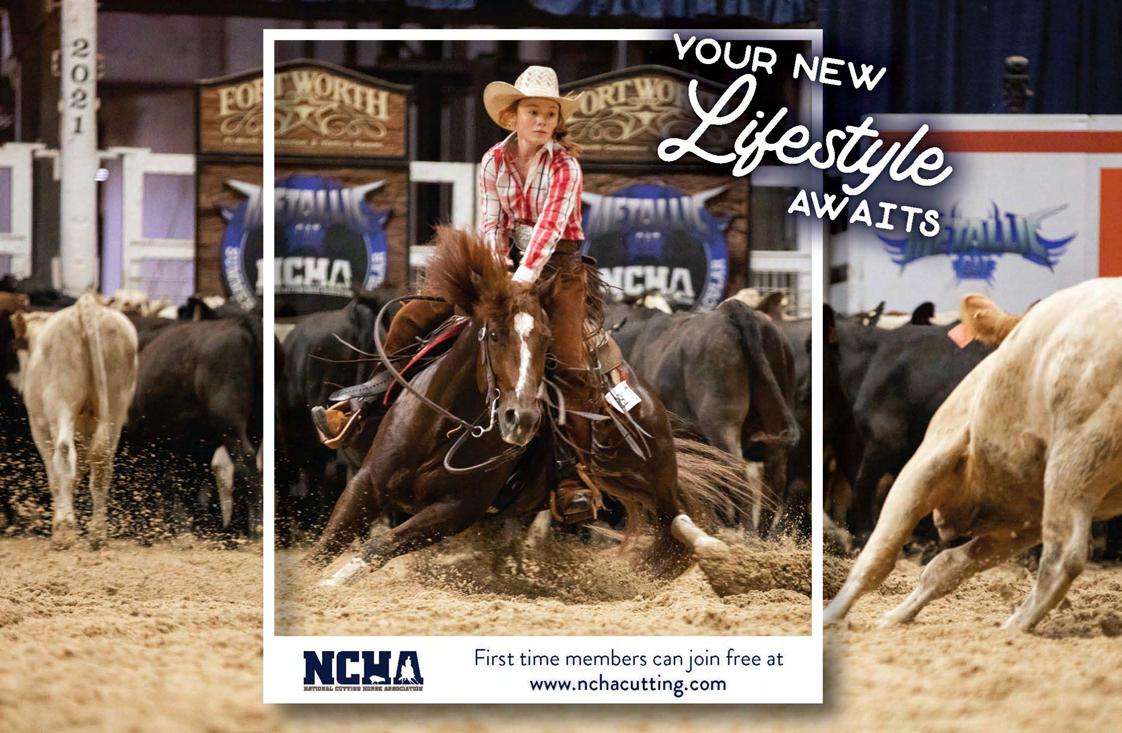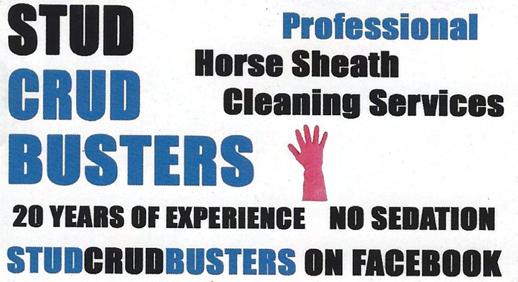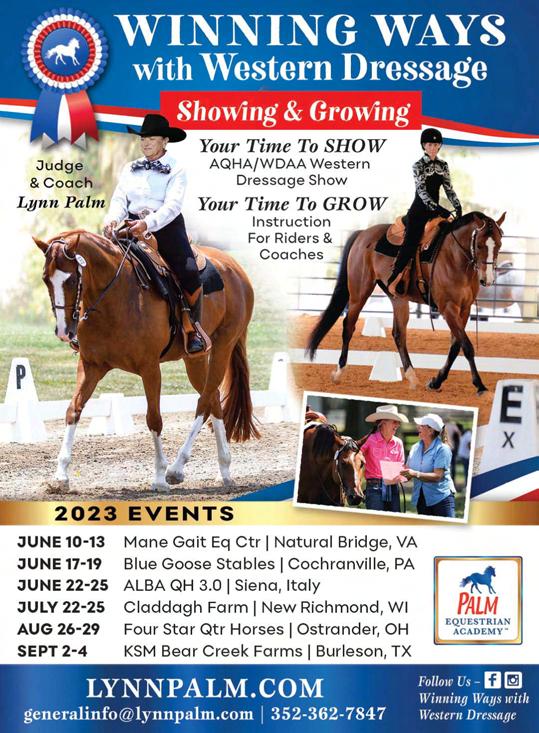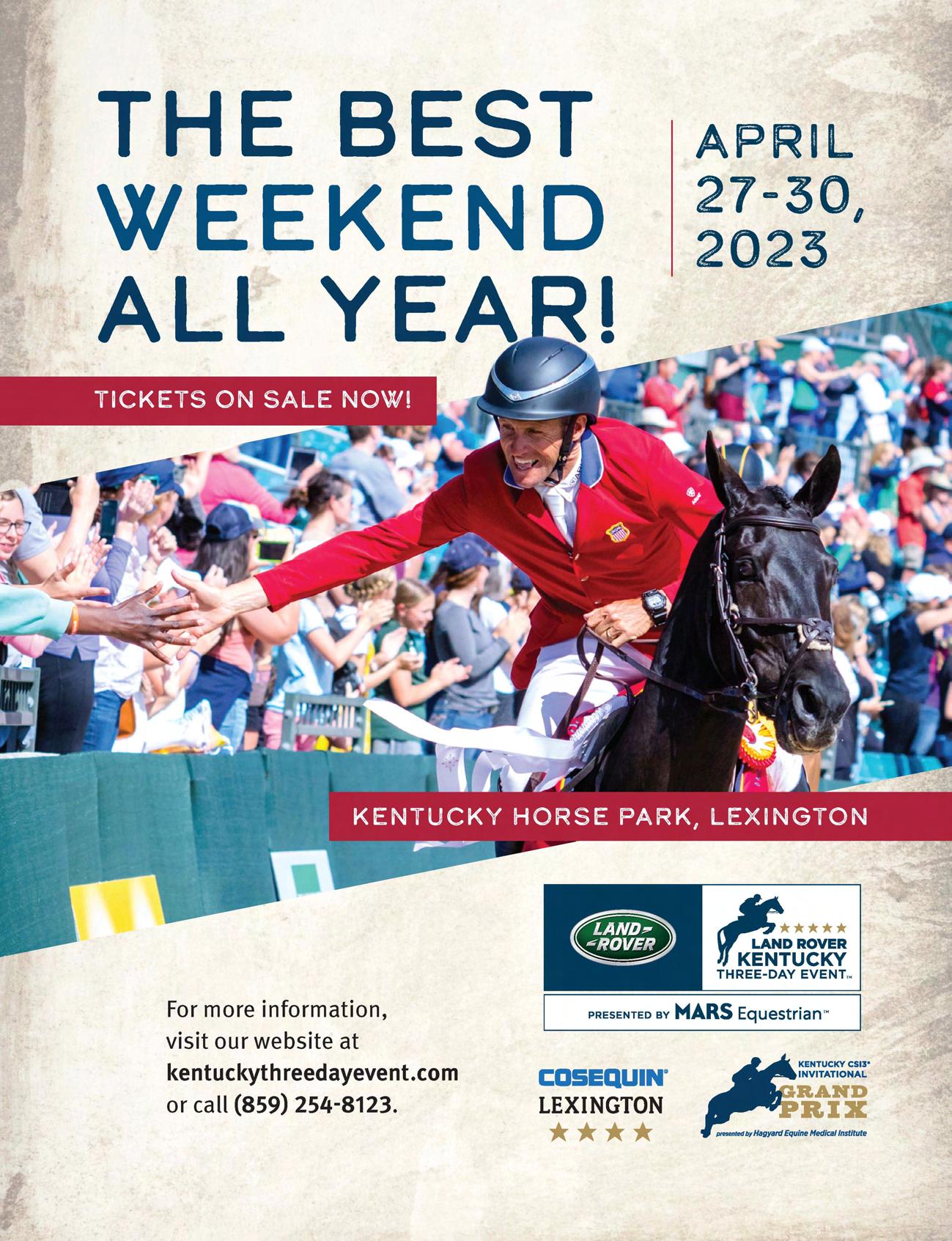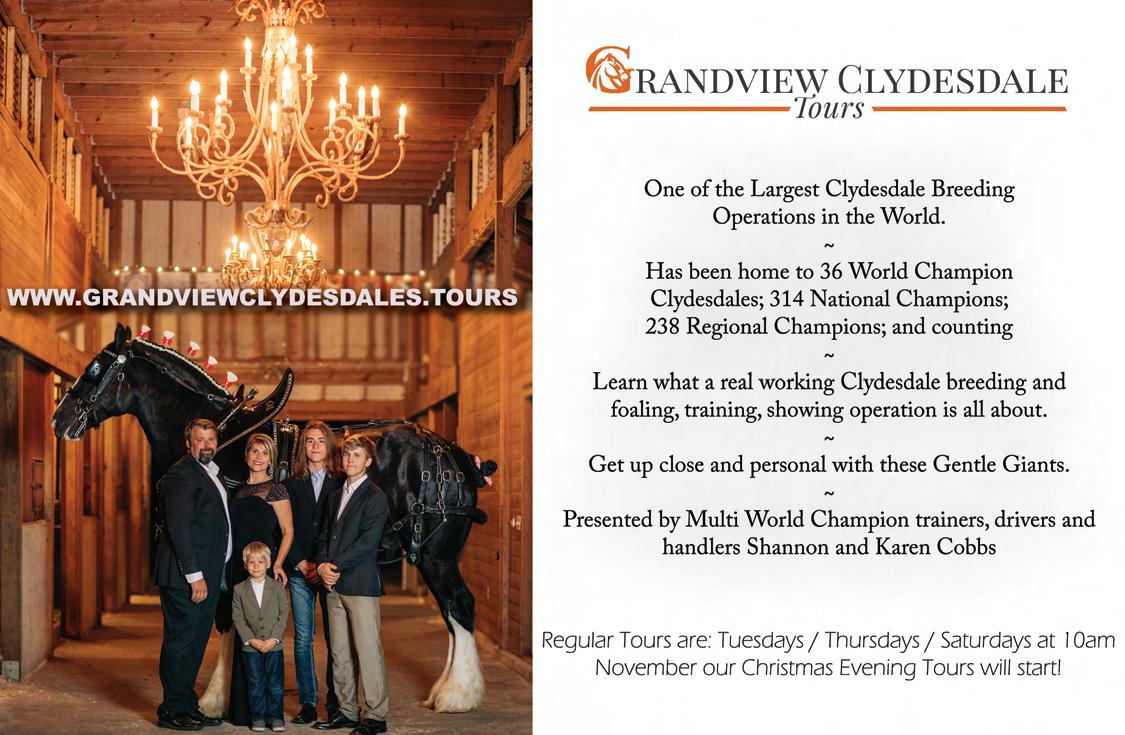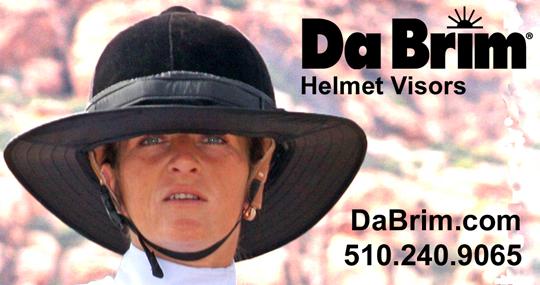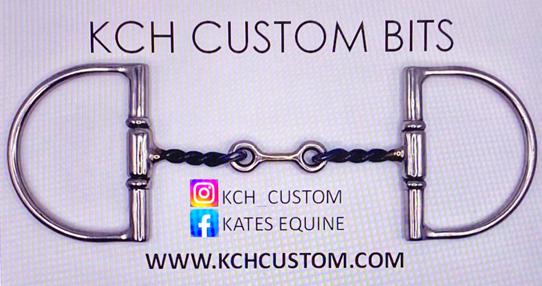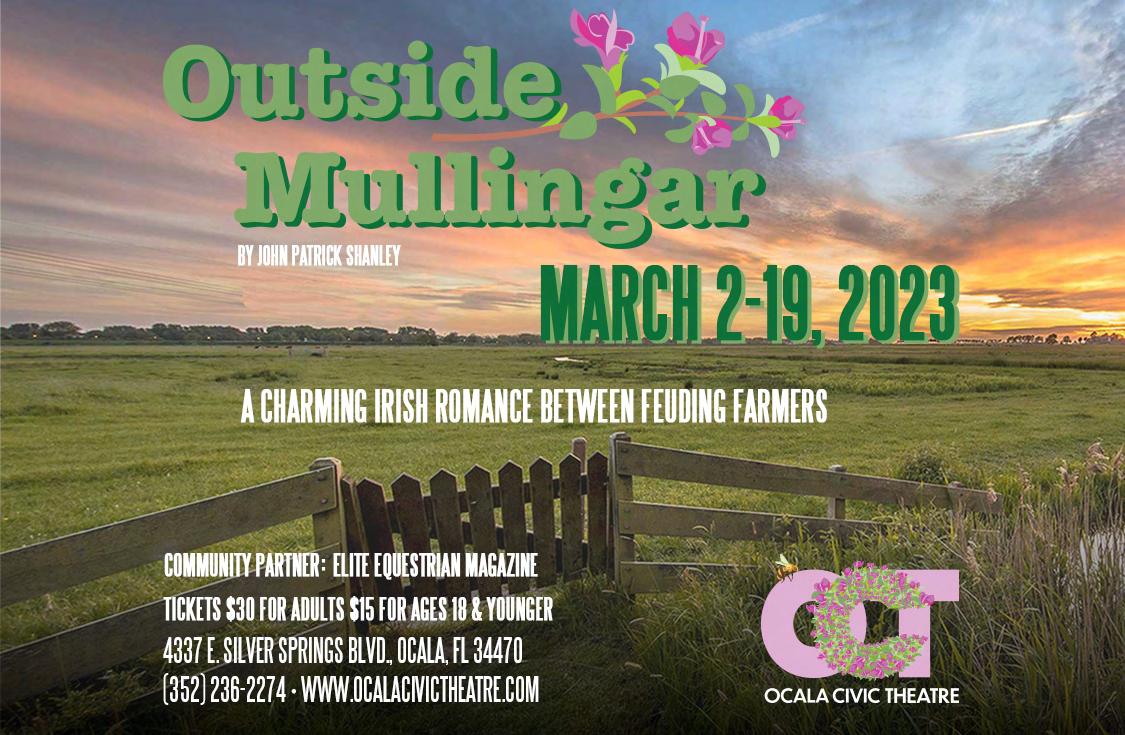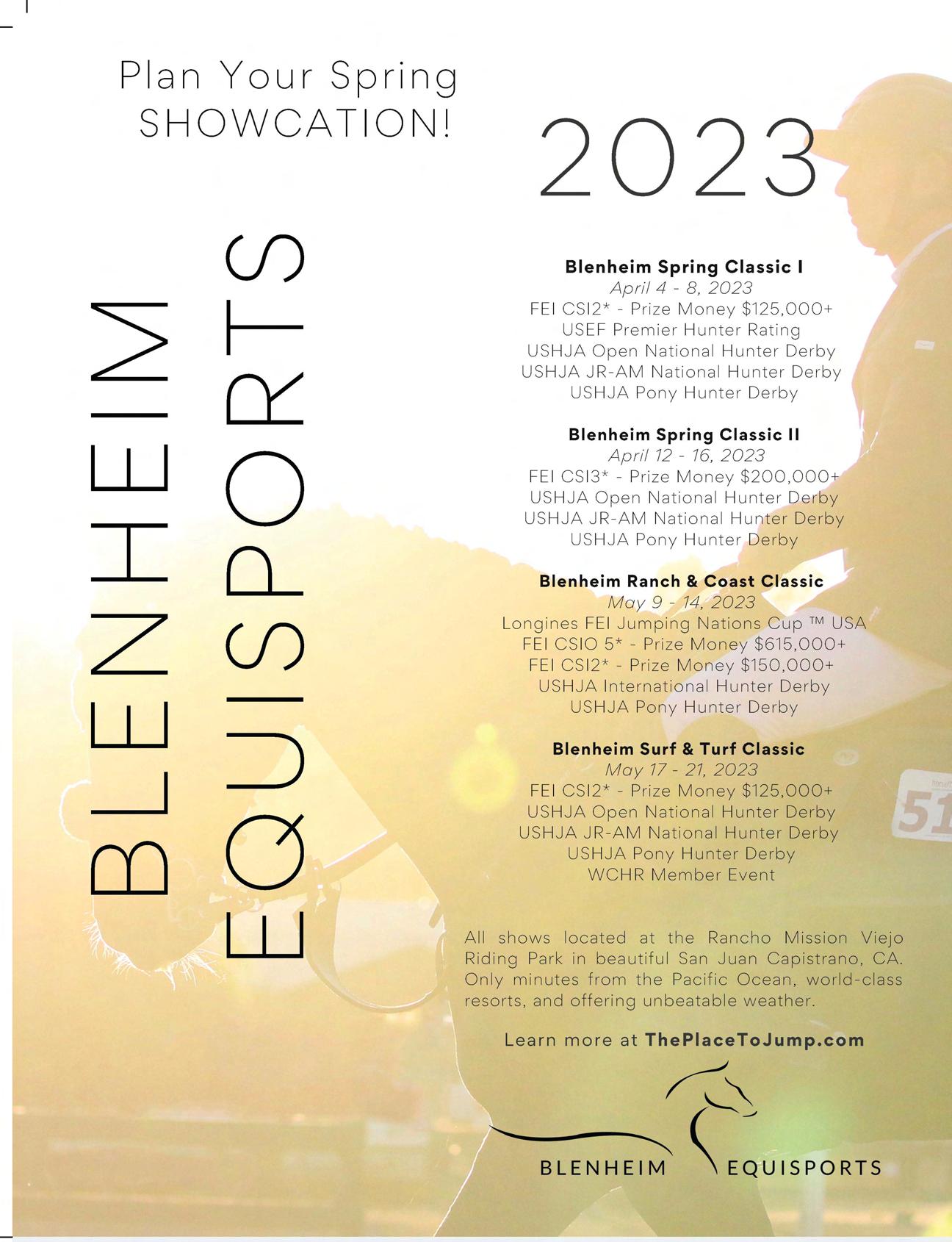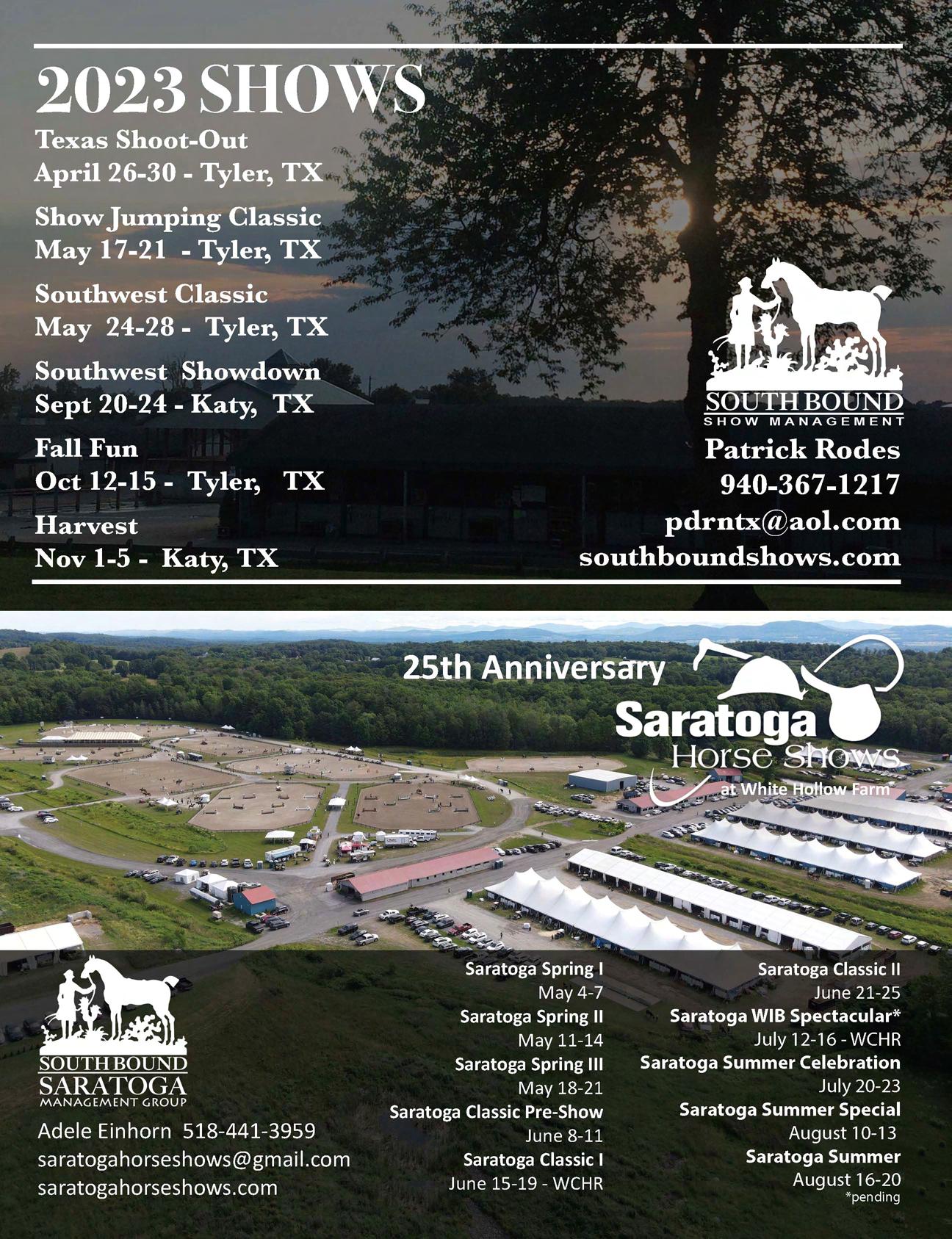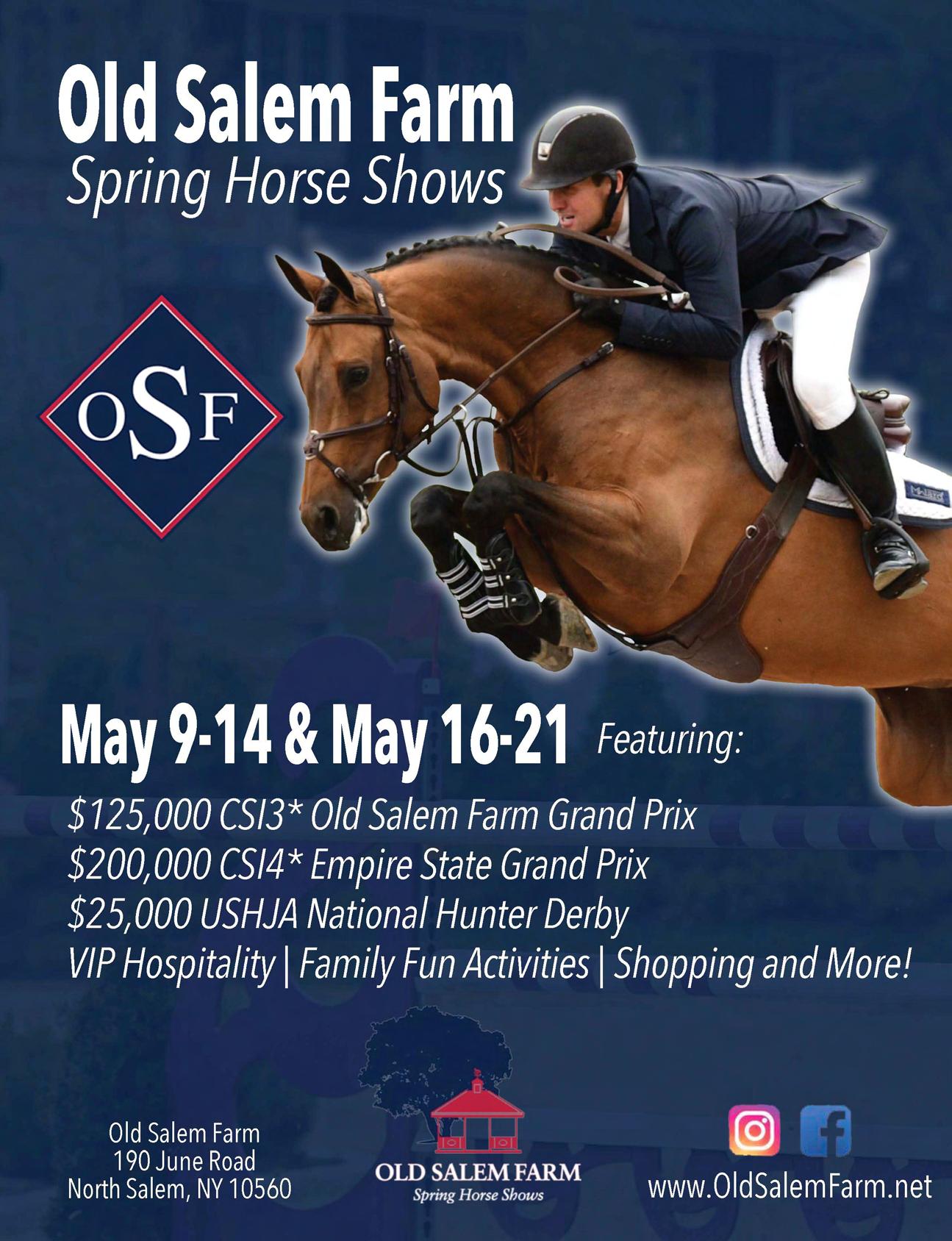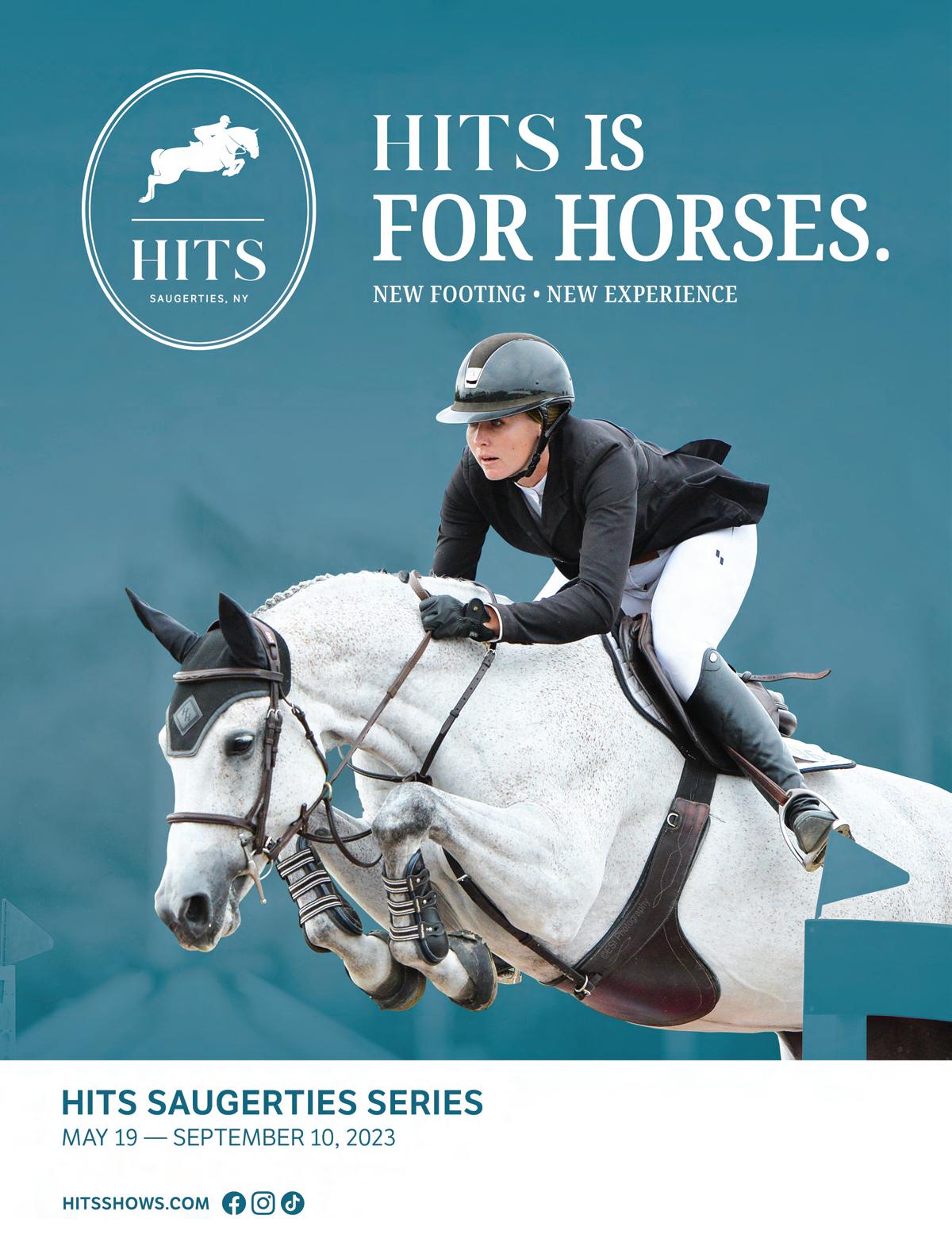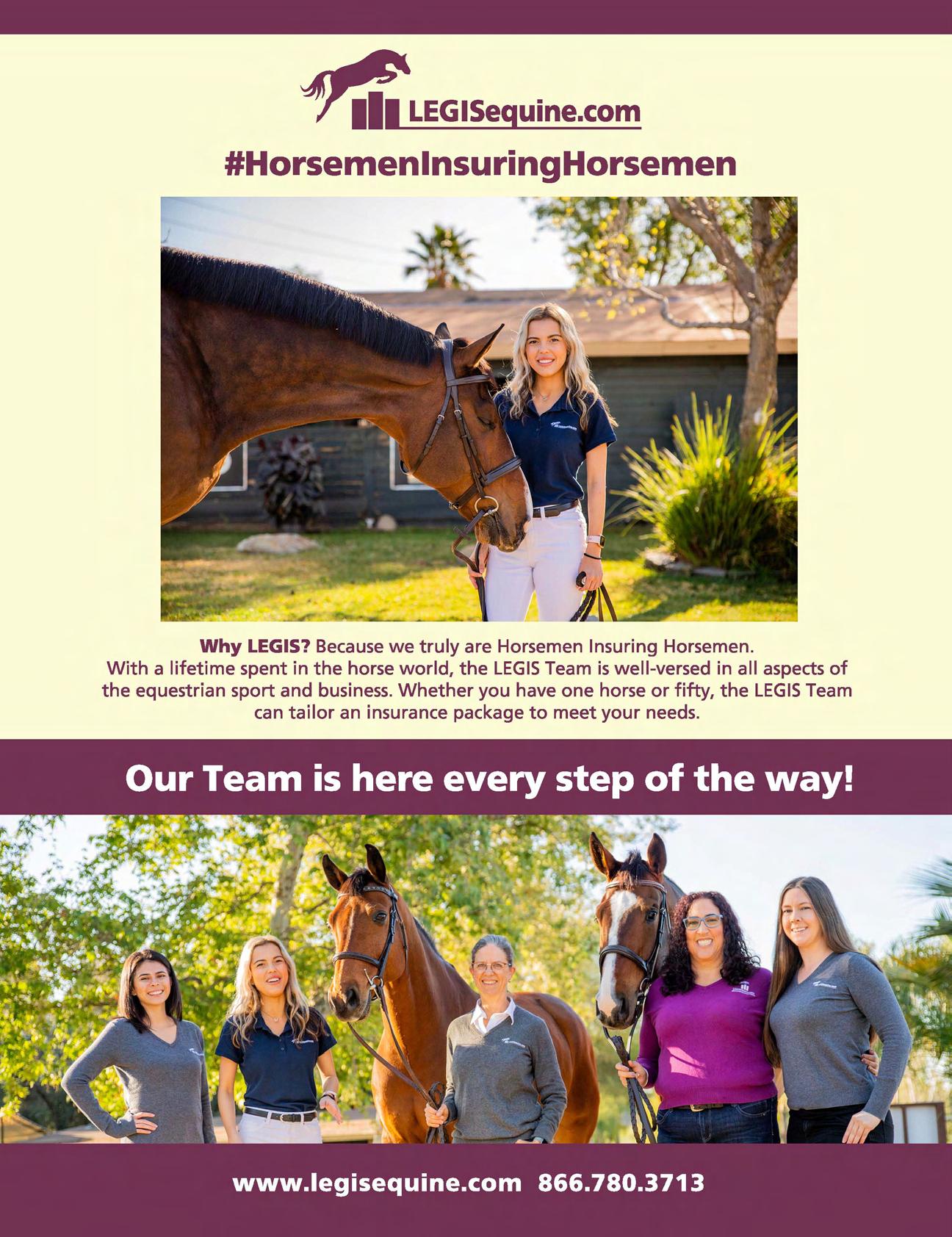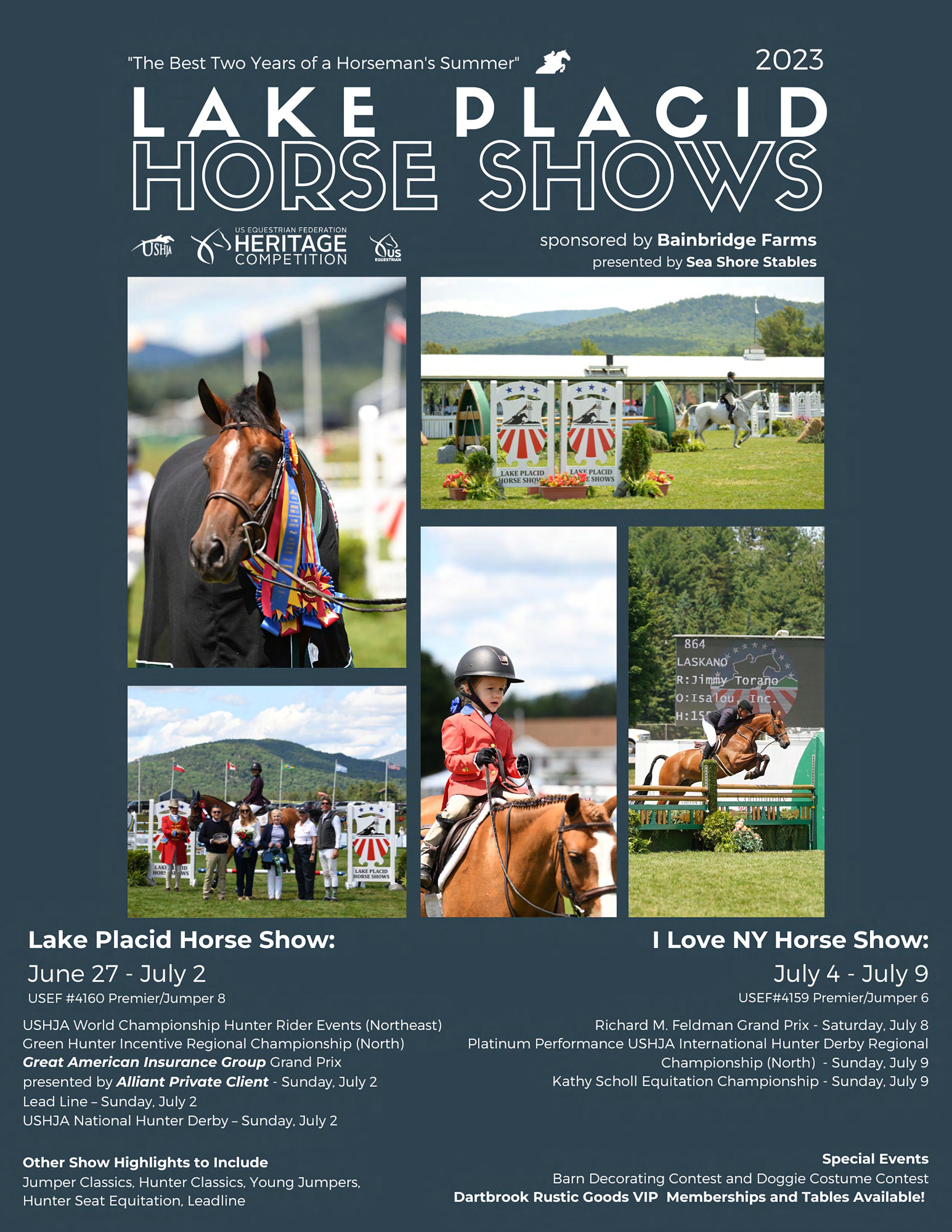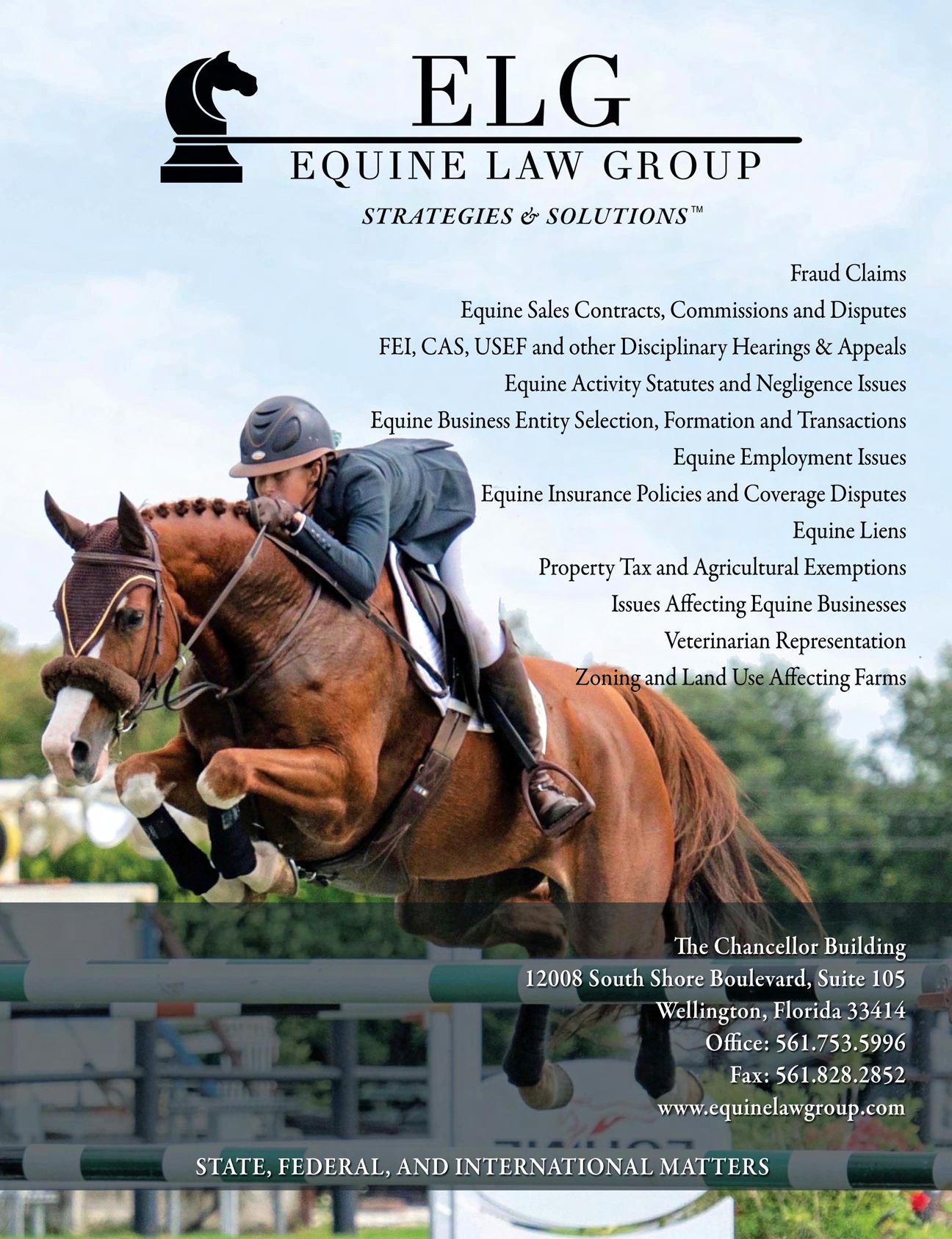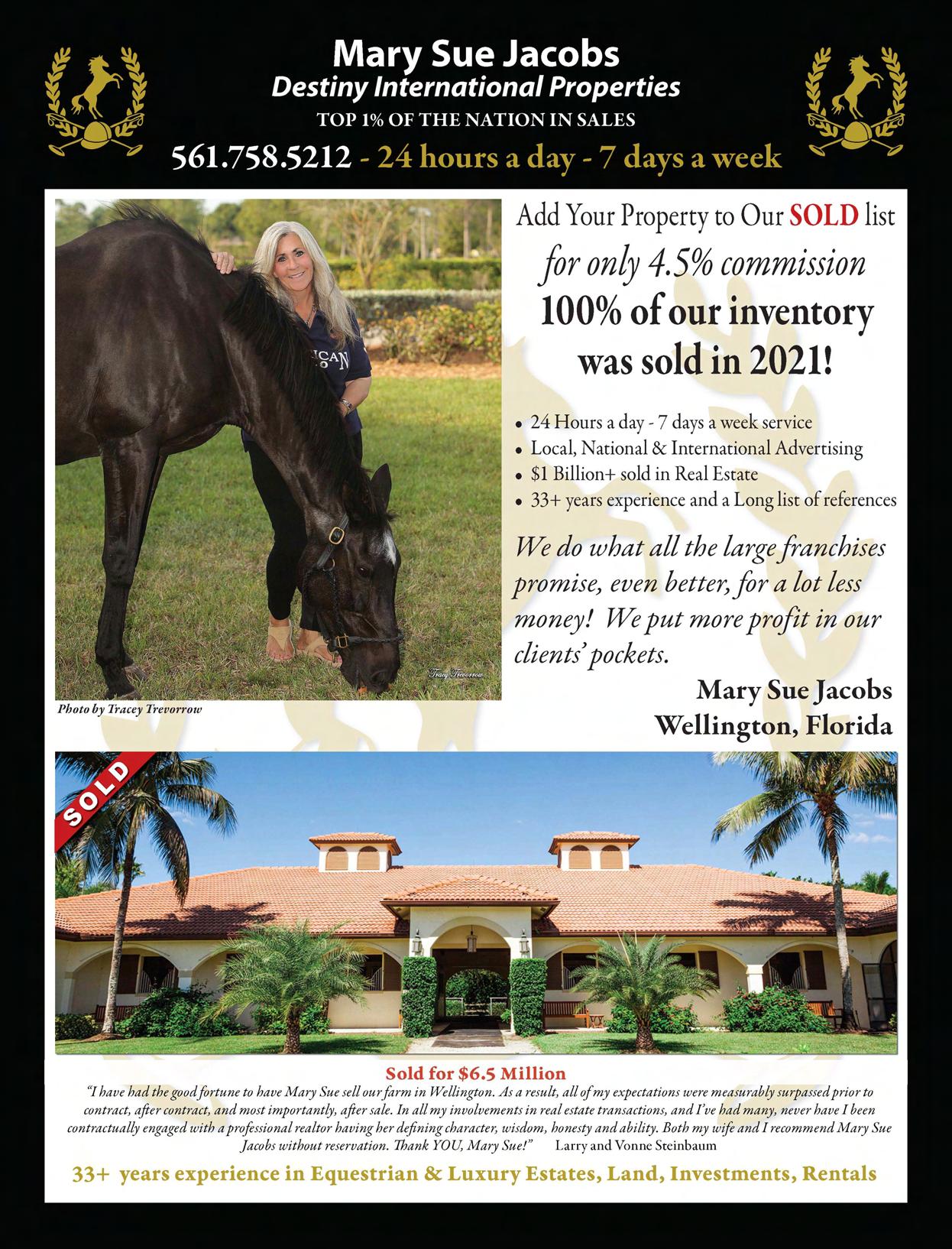
















Turnkey 11 acre 33 stall equestrian facility conveniently located in MetroWest Boston, just 30 miles to Boston and Providence. The 20 stall main barn includes an office, 3 grooming stalls, tack, grain, storage & shavings rooms & a�ached 90’ x 180’ indoor ring w/heated viewing room, laundry & bathroom; an irrigated 175’ x 225’ outdoor riding ring, 17 grass & 6 sand paddocks. The separate 10 stall street barn includes a grain room, 4BR apartment & 4 paddocks. The property includes a small 3BR home w/screened porch & office.
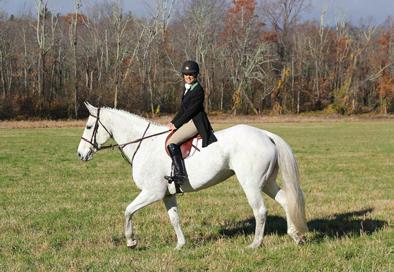
$2,500,000


Stunning custom designed equestrian property on 23 acres in Concord MA. Built in 1995, this amazing property includes a 6BR 6.5BA brick home w/a�ached 3 car garage, 15 stall insulated barn, a 200 x 72 irrigated indoor ring w/GGT foo�ng & viewing room, 15 grass fields & paddocks including 4 covered medical paddocks, a 250 x 100 irrigated outdoor ring w/GGT foo�ng, 2 RV hook up spaces, a charming 2BR guest house all surrounded on 3 sides by sprawling conserva�on land. Incomparable property only 20 minutes to Boston.
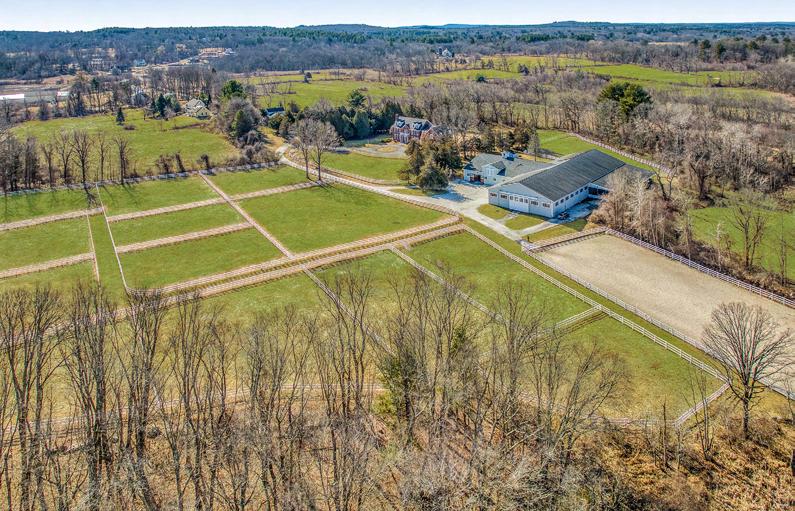
$8,500,000.

In real estate there is no substitute for experience.
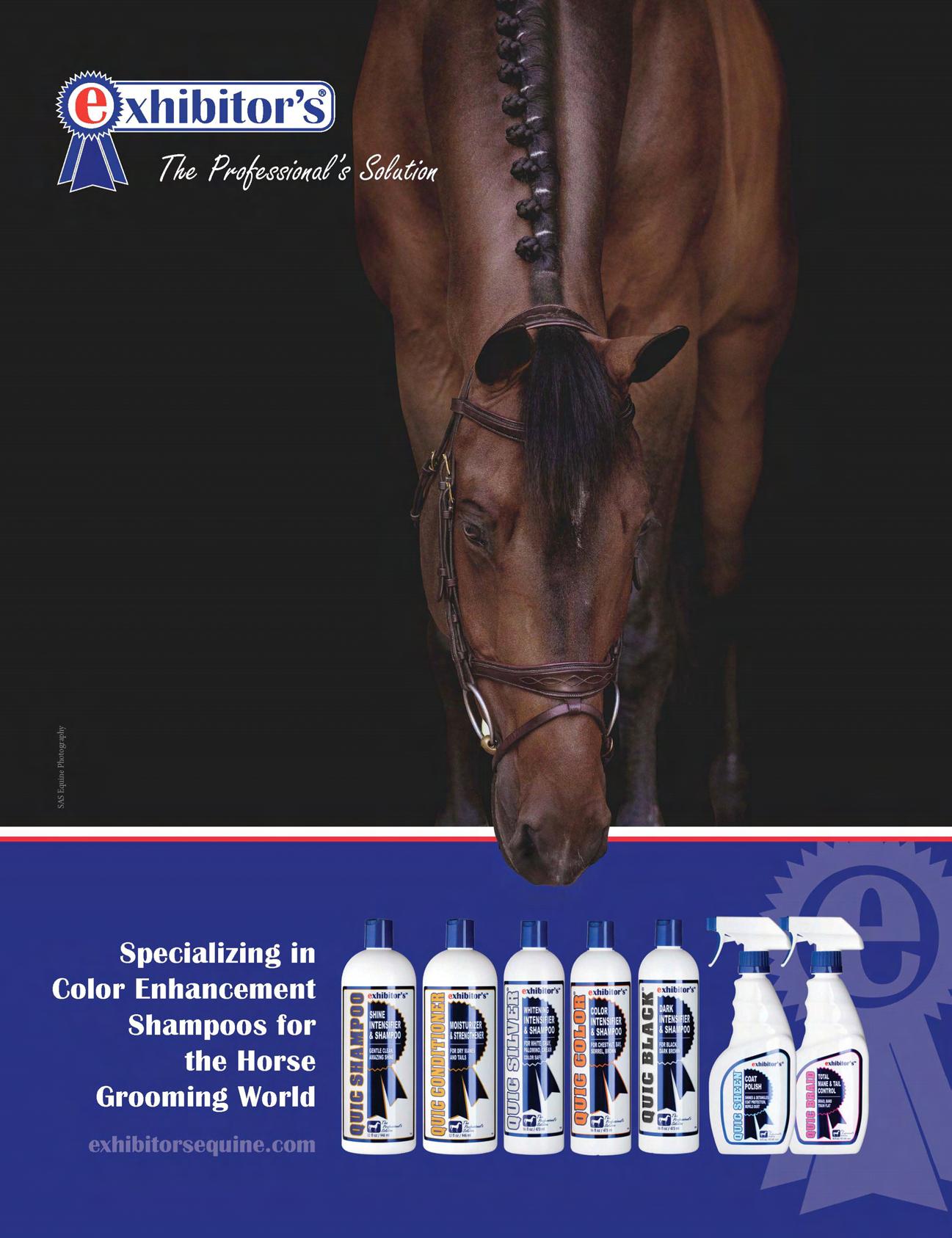
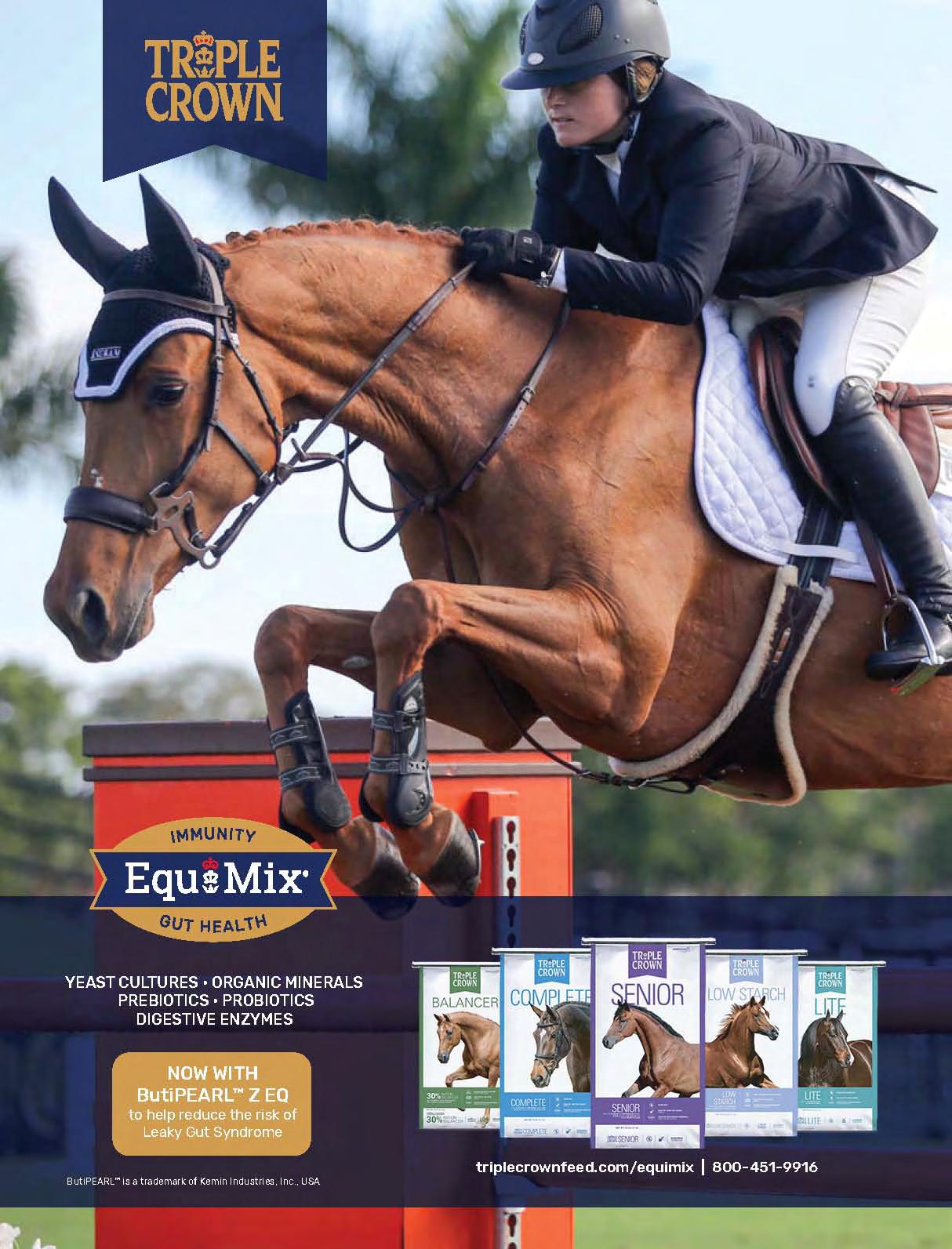
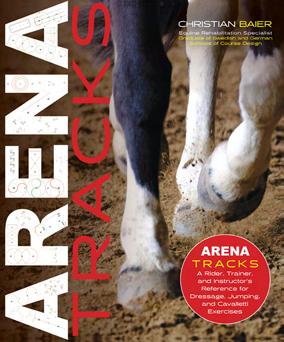
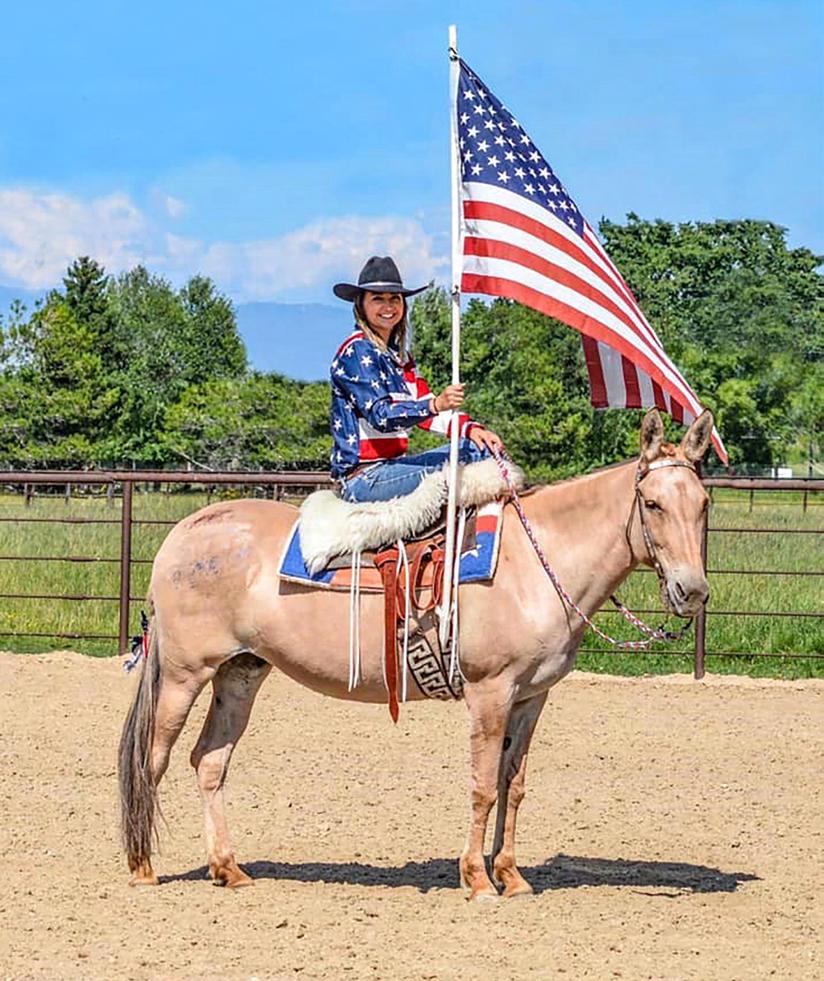
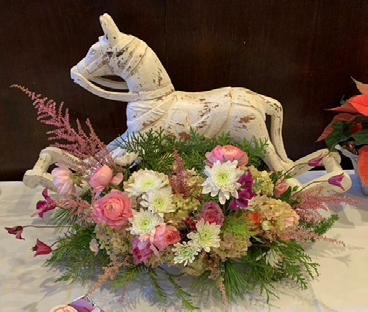
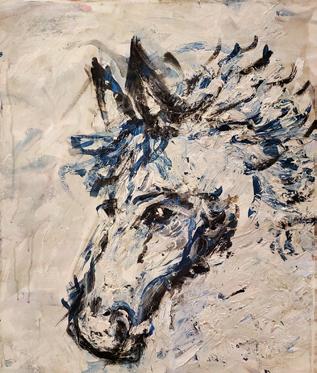
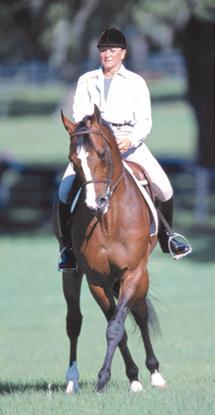
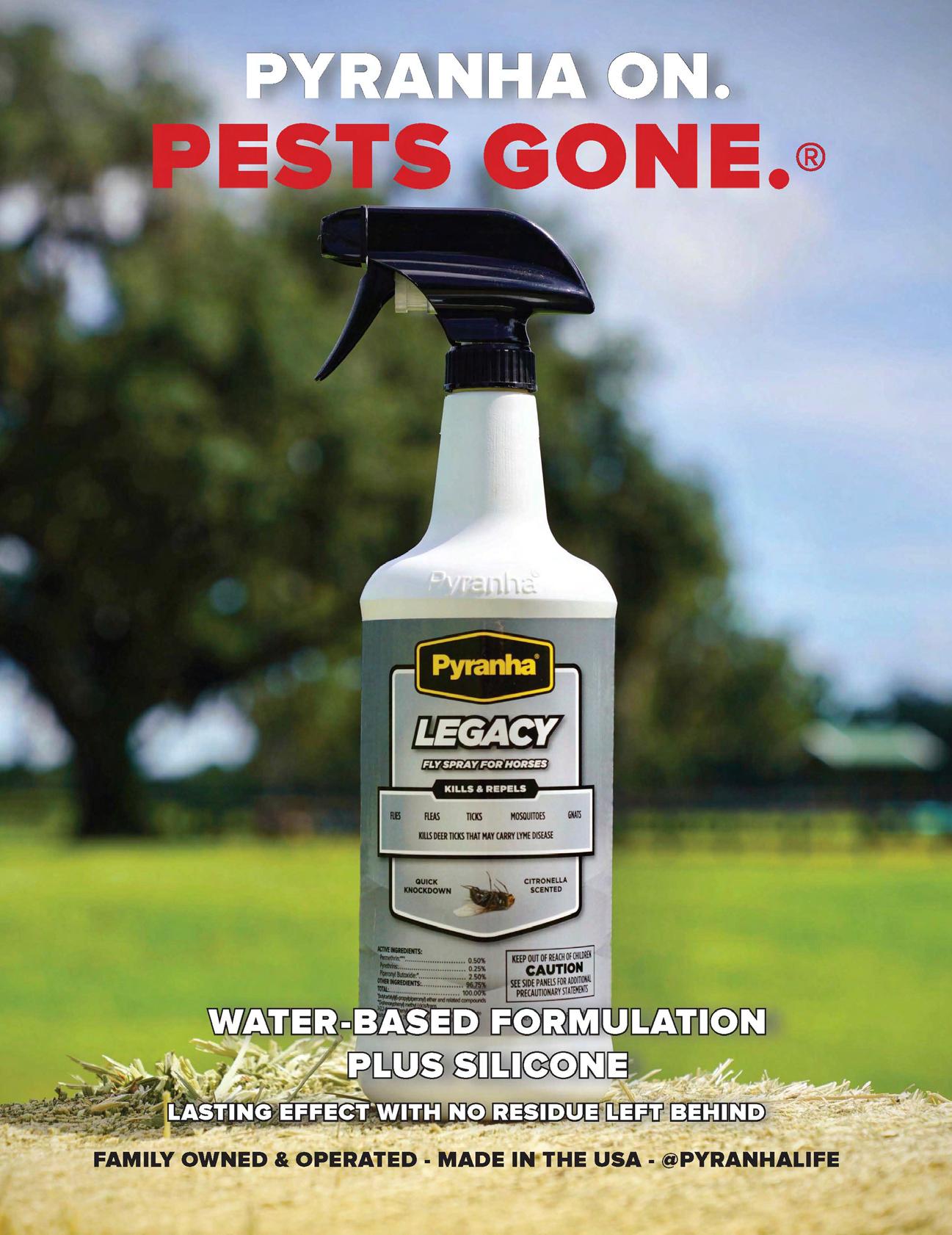

EQUESTRIAN LIFESTYLE MAGAZINE IN THE U.S.A.
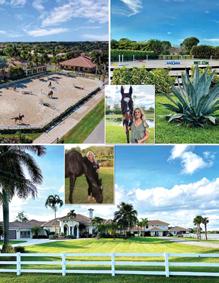
There’s a reason we’re #1
EDITORIAL STAFF
Editor-in-Chief: Noelle Vander Brink
Art & Antiques Editor: Dr. Lori Verderame
Equine Art Editor: Jeanne Chisholm

Fashion Editor: LA Sokolowski
Legal Editor: Avery S. Chapman,Esquire
CONTRIBUTING WRITERS
Stephany Fish Crossman
Alessandra Deerinck
Michelle Edgerton
Kat Fuqua
Patricia Hechter
Lynn Palm
Steven Schachter
Tom Scheve
Sara Mc Cay
Tom Murray Collier Wimmer
ADVERTISING
Advertising Sales, N.E.Region: Kathy Dress 610-420-9964 kdress@ptd.net

Advertising Sales, S.E. Region Karen Eagle 352-812-1142
Advertising Sales, National: Diane Holt 713-408-8114 diane@eliteequestrian.us







CONTRIBUTING PHOTOGRAPHERS
Jennifer Ohlson
Paws and Rewind
Louisa Raske
Juliet Sosebee
GRAPHICS Fran Sherman
Elite Equestrian magazine has the best variety of editorial that readers find to be educa�onal as well as relevant.
Elite Equestrian’s hard copy distribu�on is na�onal and includes top rated shows and venues.
Elite Equestrian’s bi-monthly publica�on means YOUR AD IS CURRENT FOR 2 MONTHS, maximizing your investment.
Elite Equestrian offers discounts for mul�ple ad inser�ons.
Every issue is also produced as a digital on-line version, and every ad has a FREE HYPER LINK
Elite Equestrian’s Must Have feature gives adver�sers addi�onal promo�on and also hyper links to their web site. Ask for details.


Banner ads are available and browsers will find THOUSANDS of ar�cles on our web site to maximize viewing �me. Our web site averages 250,000 views/week.
Banner ads are FREE with an annual contract. That’s
Reach out to us and let us customize a custom adver�sing package that suits your budget & needs.


info@EliteEquestrian.us
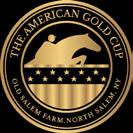
Elite Equestrian magazine ranked #5 equestrian magazine in the world, and so the #1 equestrian lifestyle magazine in the U.S. A. , by Feedspot Blog.

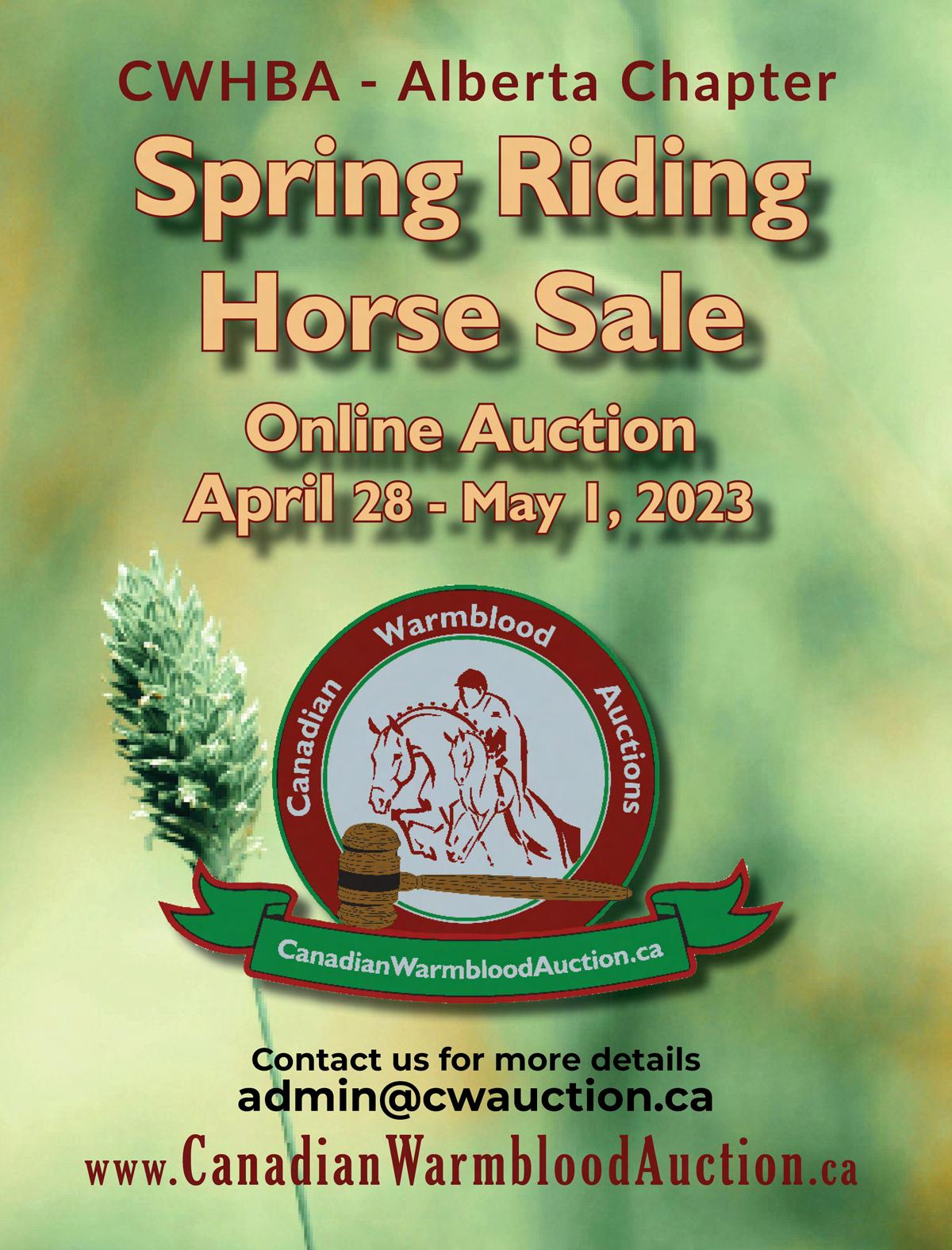
BEST ON-THE-GO
Hay Feeding System!
See our ad page 31 www.NibbleNet.com
PASTURE VACUUMS
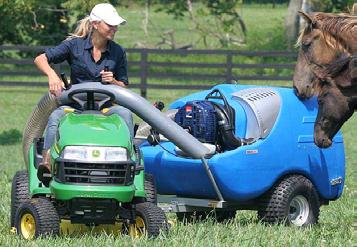
Collect manure, sawdust, wood shavings, leaves and rubbish. Also used for stalls, and cleaning out water troughs- just suck out the water, scrub and refill. See our ad page 39 www.pasturevacuums.com
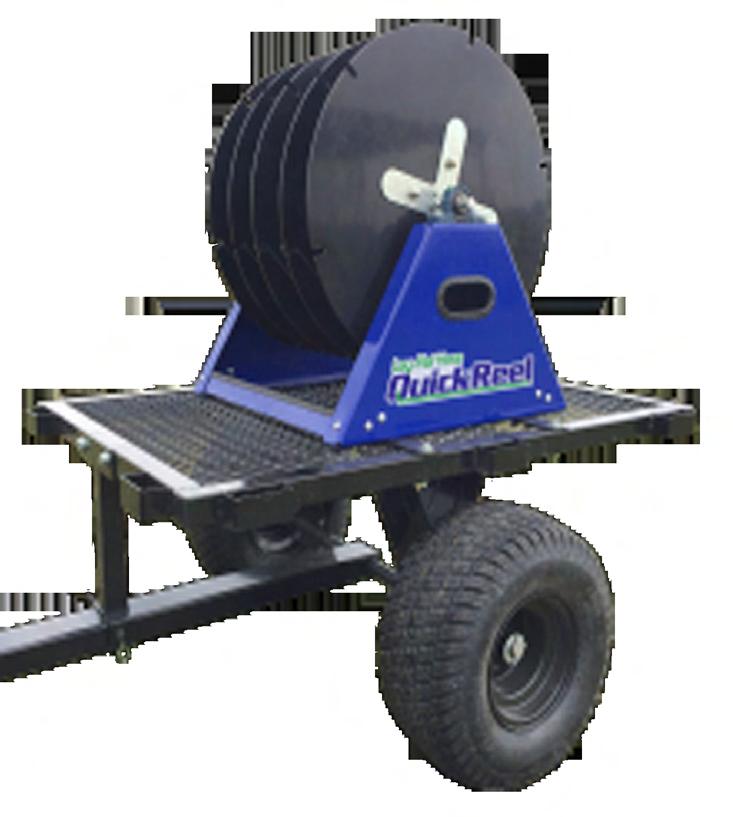
HUGE VARIETY OF COLLARS
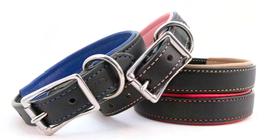
Well constructed and durable. Classy, comfortable and strong. Leashes too!
Available at AuburnDirect.com.
See our ad on page 27
See our ad page 37 www.PaulHarder.com
EZ SIGNS
Free shipping!
1-800-640-8180
See our ad on page 33 www.EZSignsOnline.com
Saddler’s Preserva�ve
mounts to cart or vehicle. ATV trailer cart assembly available. Proudly Made in the USA by our team of cra�smen!
See our ad page 33 BigSprinkler.com
PROTECTING SENSITIVE SKIN
See our ad on page 51 www.soxforhorses.com
FOCUS HF (Hoof) provides the most effec�ve nutrient building blocks to help support superior hoof condi�on.
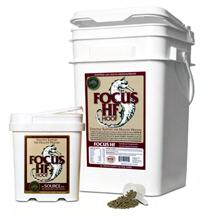
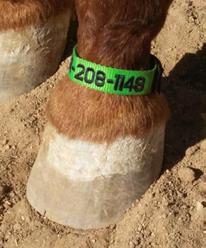
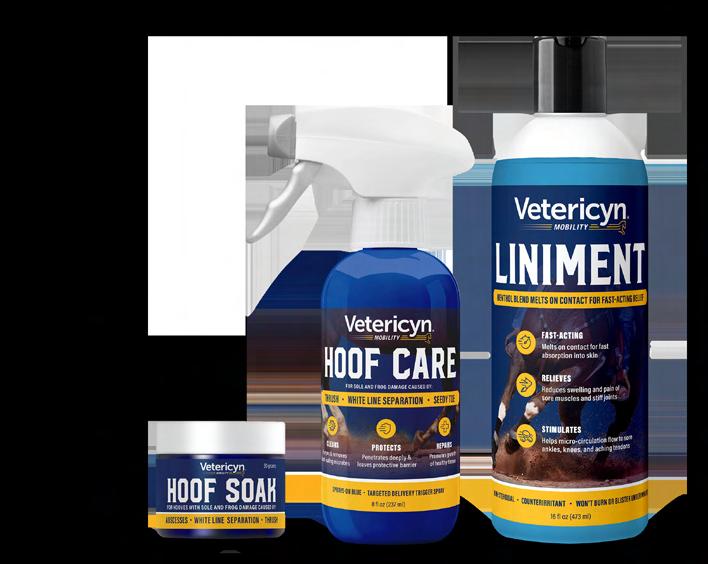
See our ad page 63 800-232-2365 www.4source.com
Protect and restore your valuable leather for years to come. See our ad page 29 www.jmsaddler.com
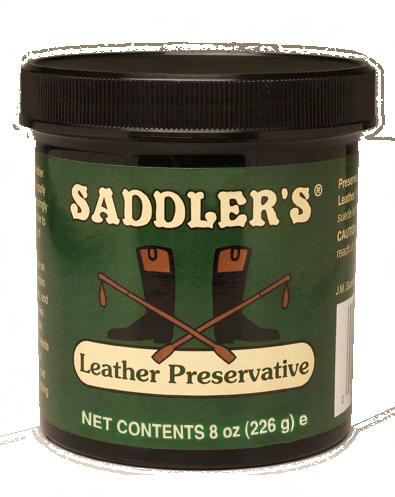
GUMBITS

100% FEI legal.
See our ad page 66
www.GumBits.com
EQUINE CONSIGNMENTS!
Great selec�on of saddles, tack, boots,home items and more. Free trial on saddles.
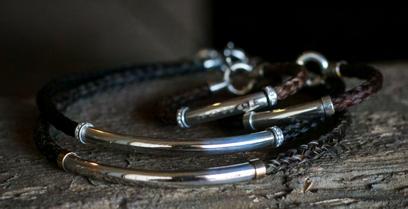
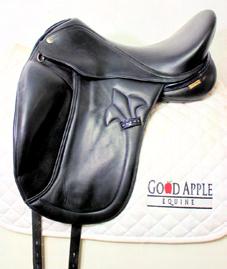
See our ad on page 65 www.GoodAppleEquine.com
EQUINE CONSIGNMENTS!
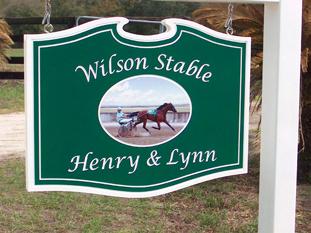
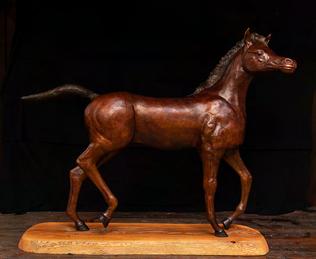
Great selec�on of saddles, tack, boots, ms and more.Free trial
ID FOR YOUR ANIMALS
See our ad on page www.GoodAppleEquine
A must have for traveling and evacua�ons. Available for dogs and farm animals. First Aid kits and more.
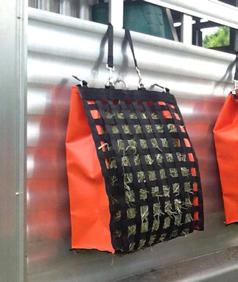
See our ad on page 27 www.EquestriSafe.com
www.EliteEquestrianMagazine.com
StressLess™ Hot Horse Supplement

See our ad page 2 HotHorseSupplement.com
EQUINE HEALTH PRODUCTS
Liniment, Hoof Care, Hoof Soak
See our ad page 49 www.Vetericyn.com
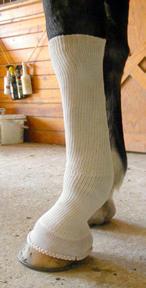 LAY-FLAT HOSE QUICKREEL
Paul Harder Bronze Sculptor
LAY-FLAT HOSE QUICKREEL
Paul Harder Bronze Sculptor
Full seat or knee patch
Assorted colors
Excellent all around show or schooling breech! Stylish and func�onal amy@aikensaddlery.com
See our ad page 42
A Piece Of Your Favorite Horse Can Go With You Everywhere Quality fashionable jewerly made with your horse’s hair.

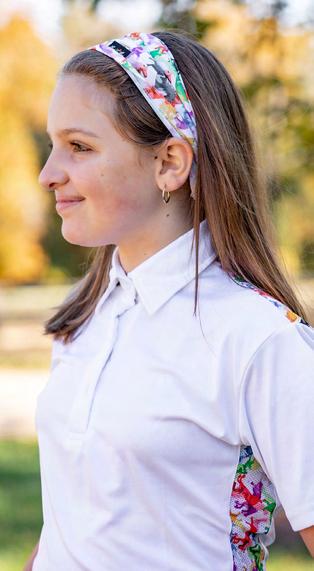
See our ad pg 25 ponylocks.com
Jumper on Oval Buckle in a detailed raised relief profile. The horse has no tack, but a braided mane and his knees are tucked well in a jumping posi�on. The buckle measures 2.5” wide www.tempidesignstudio.com
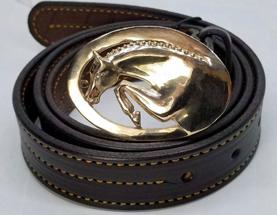
See our ad page 65
Anni Lyn Sportswear
www.anni-lyn.com
See our ad on page 25
Da Brim Helmet Visors DaBrim.com
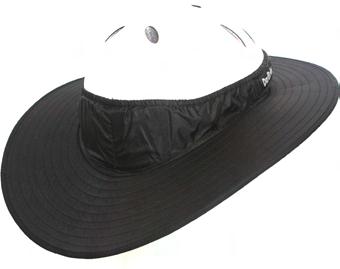
See our ad on page 71
Bullet Blues Bullet Blues “Modern Femme” high-waist flared-leg jeans made in America h�ps://bulletbluesca.com
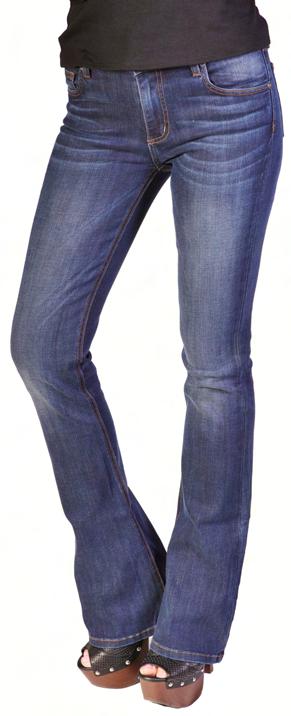
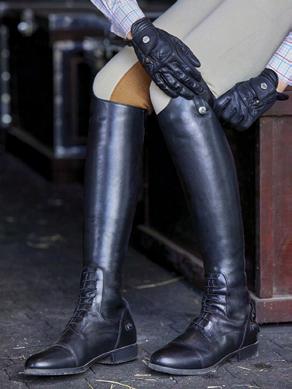
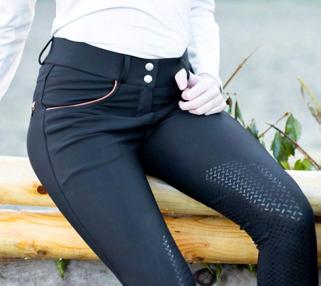
See our ad on page 23 BulletBluesCa.com
Hats With Equestrian Flair! Riata Designs, where performance meets style.
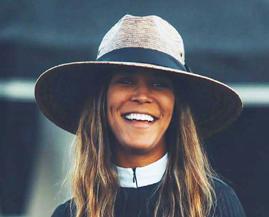
See our ad on page 25 riatadesigns.com
DRAPES
Spice Up Your Horse Show Life!

Let Everyone know which aisle represents you! Custom tailored to meet your needs!
See our ad on page 7 tackshackocala.com
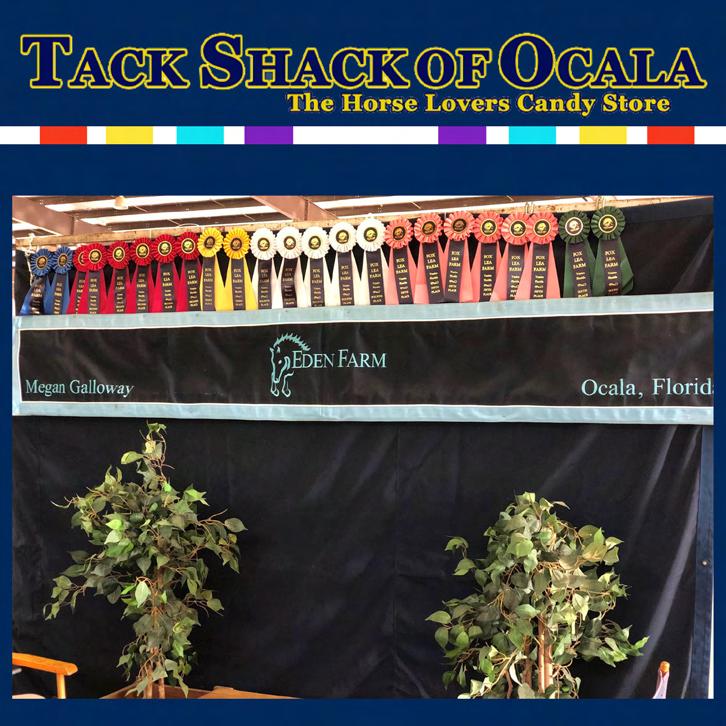
Pyranha® Equine Spray & Wipe®
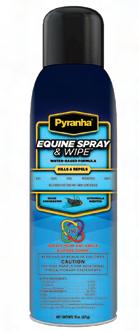

See our ad on page 9 www.pyranhainc.com
Dover Saddlery Madison Field Boot Shop DoverSaddlery.com or visit our store located in Aiken ,SC., 2575 Whiskey Road.
See our ad pg 44 www.DoverSaddlery.com
CUSTOM STALL KL Select Gabrielle Breech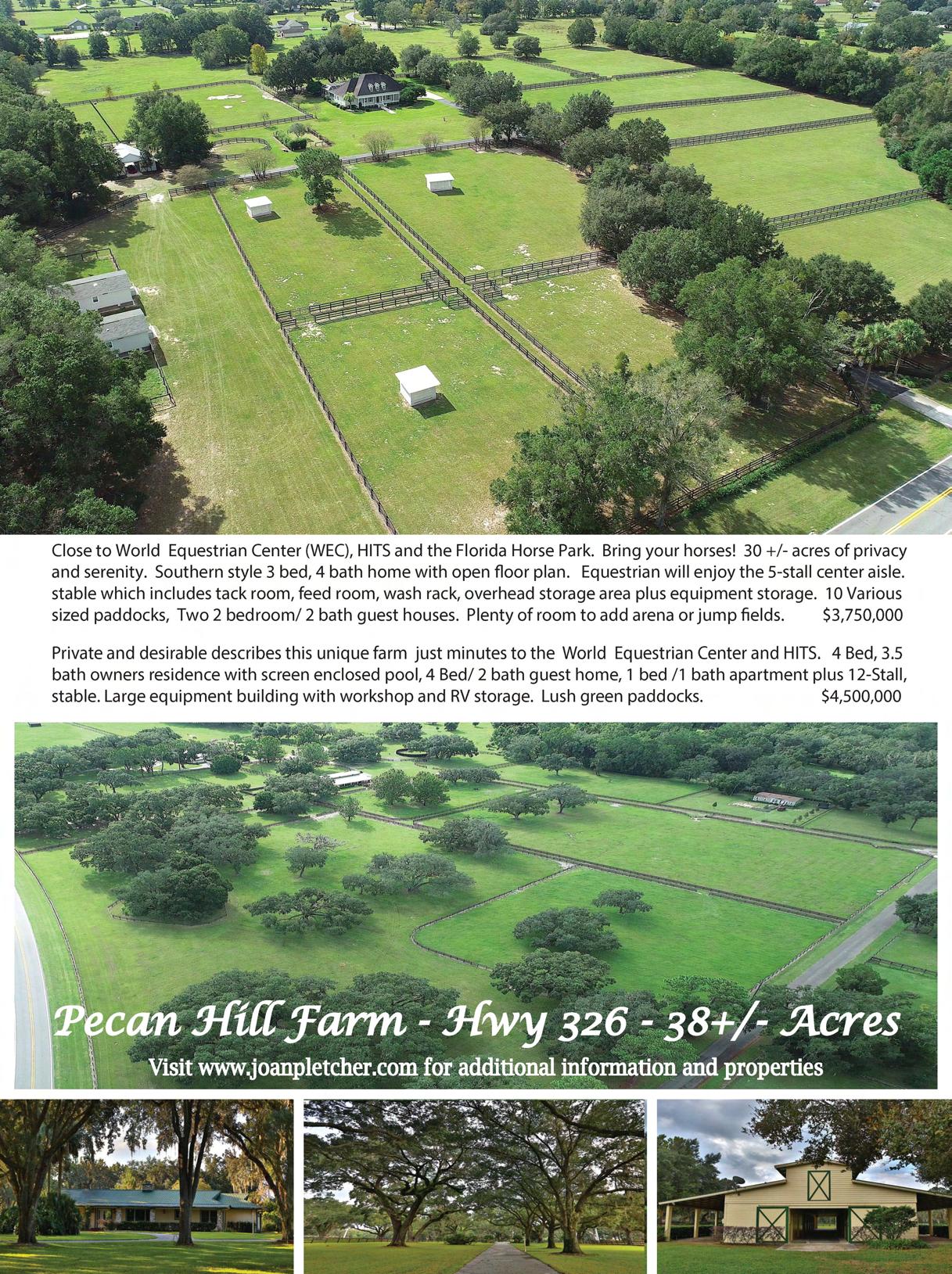

Great looks for in and out of the showring.
The Full Circle Collec�on featuring the Roped Horse and Roped Bridle Designs in both Quarter Zip and Ladies Bu�on shirts. Both offer 50 UPF sun protect and a so� luxurious lightweight technical fabric.
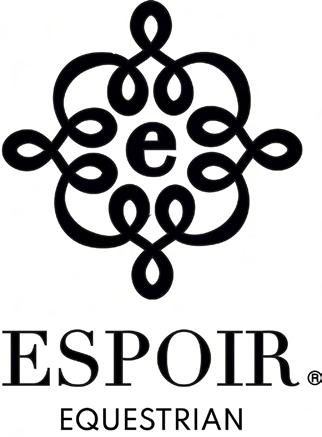
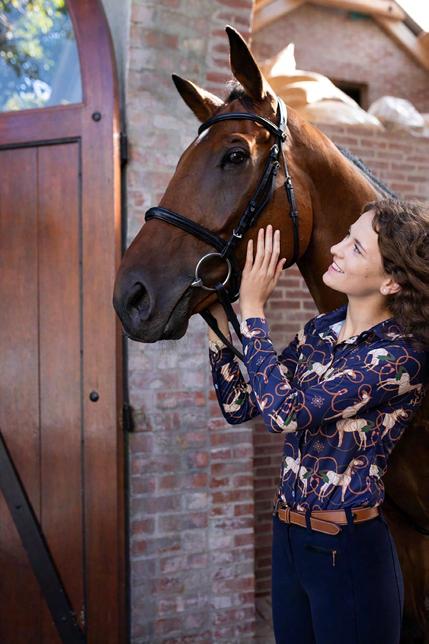
The hand-illustrated designs appeal to all horse lovers.
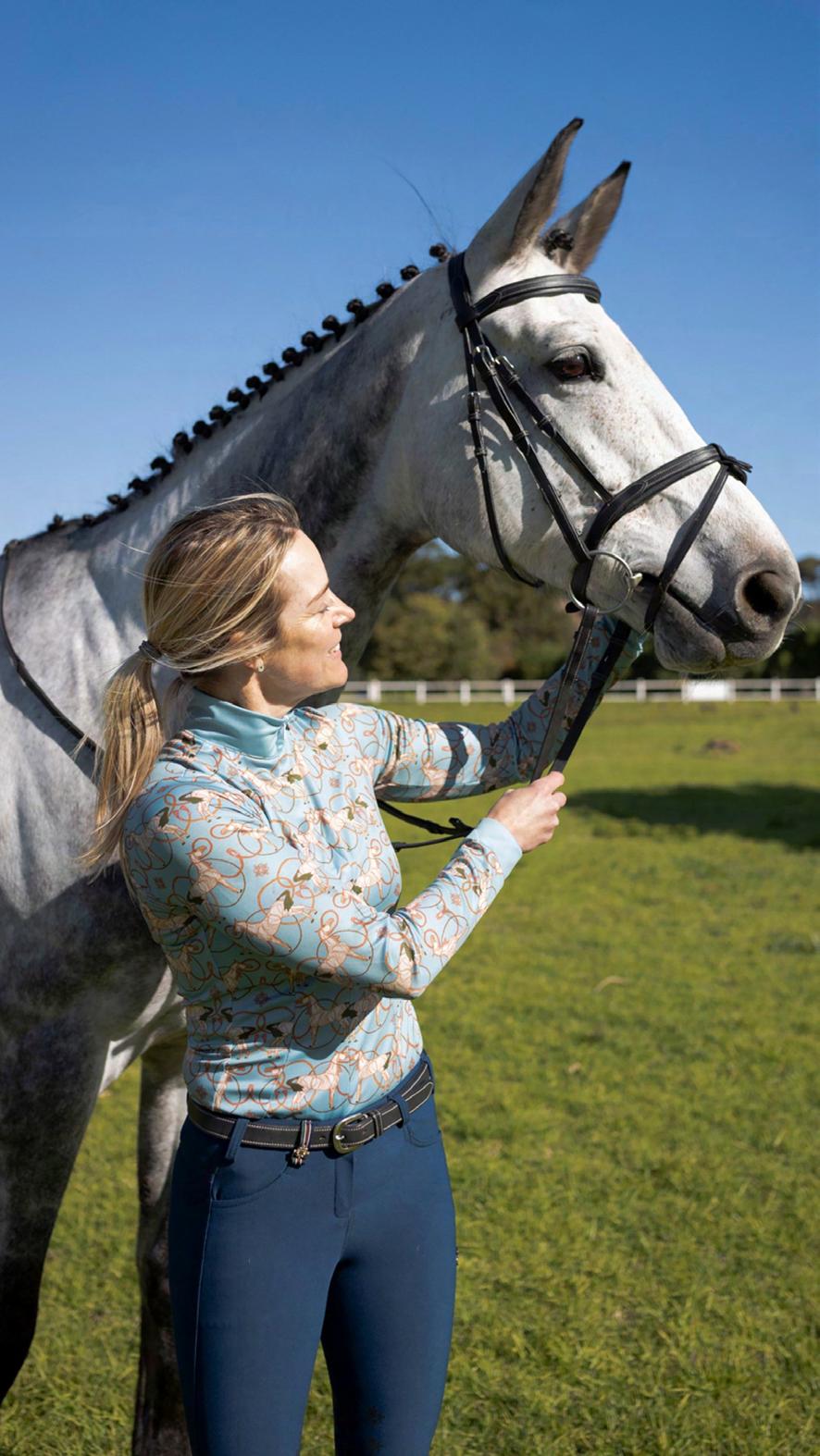

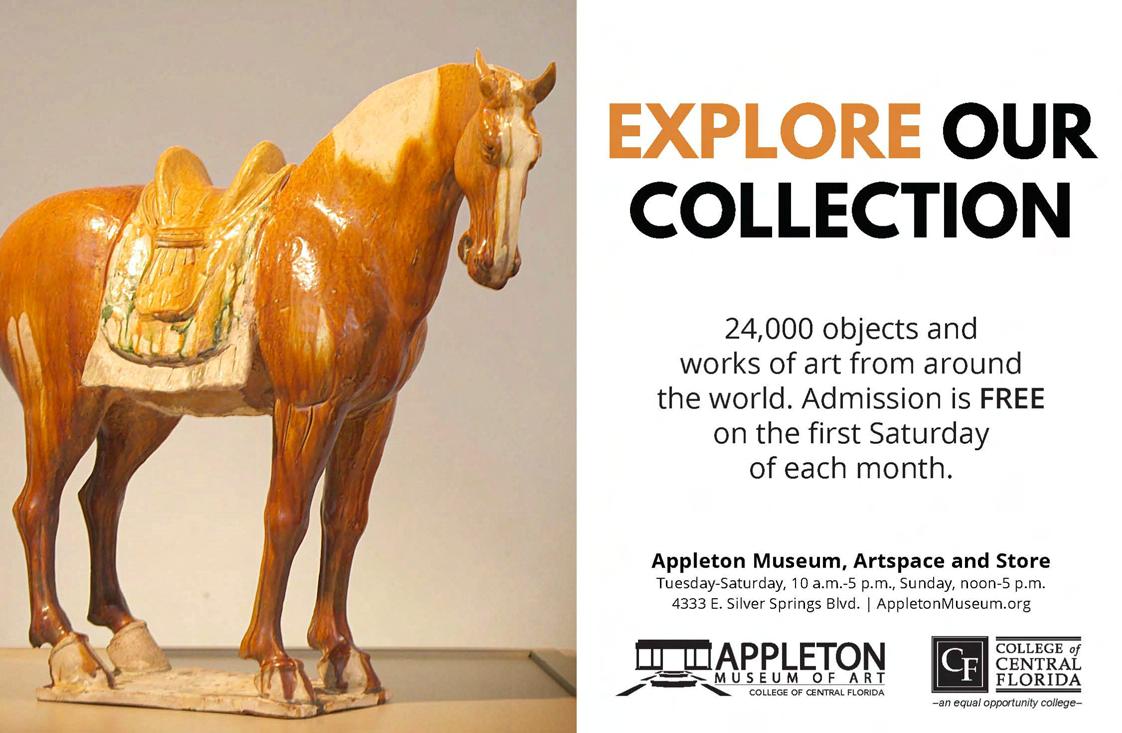
The Super So� comes in Navy, Black and Light Grey.
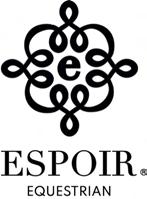
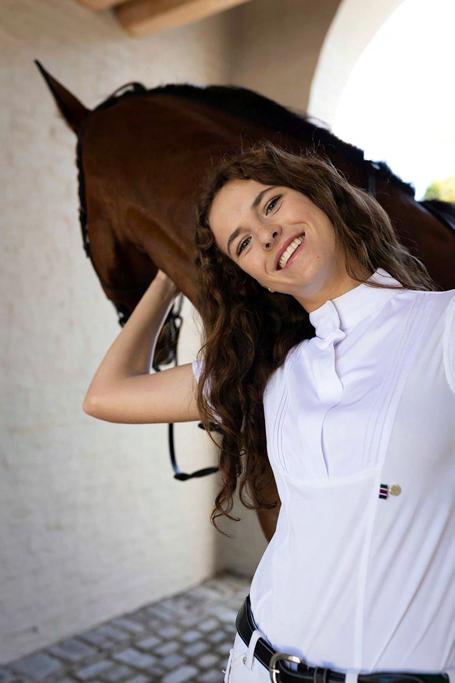
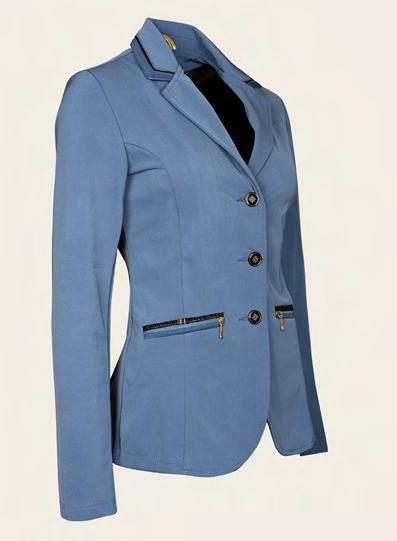
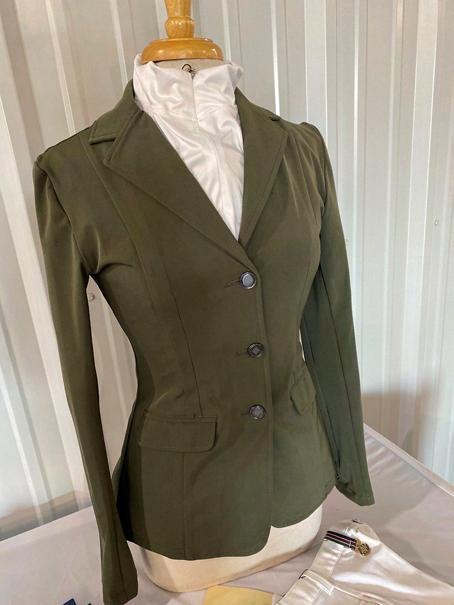

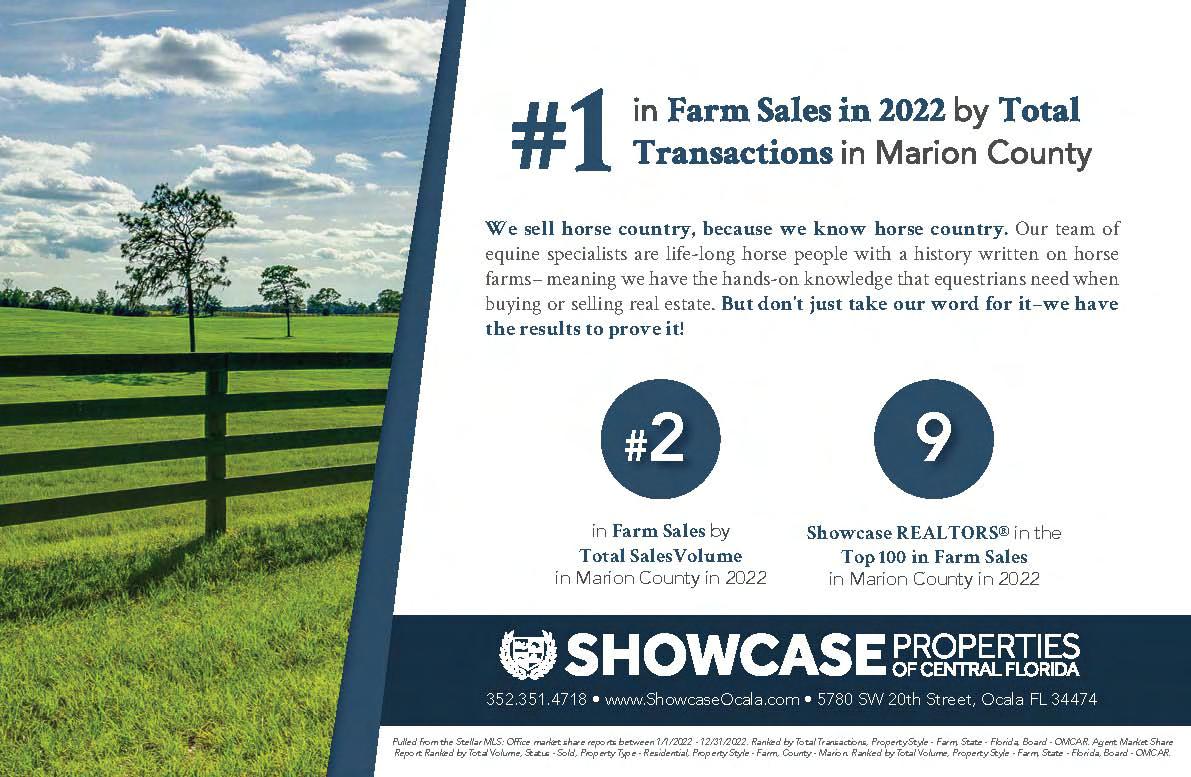
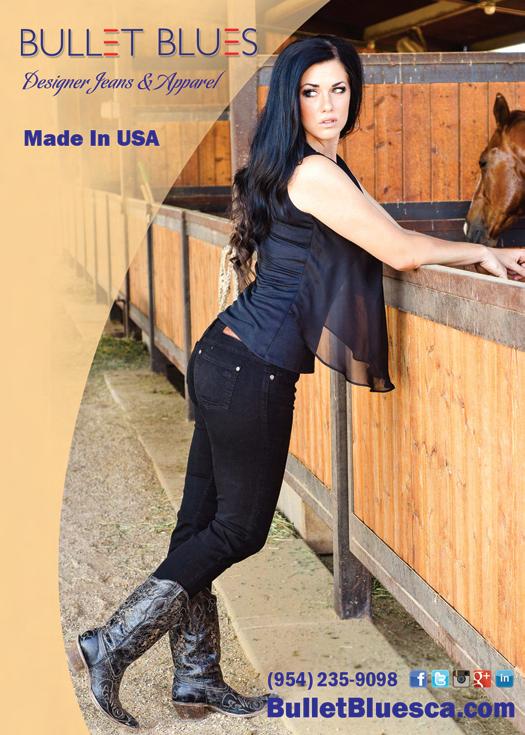
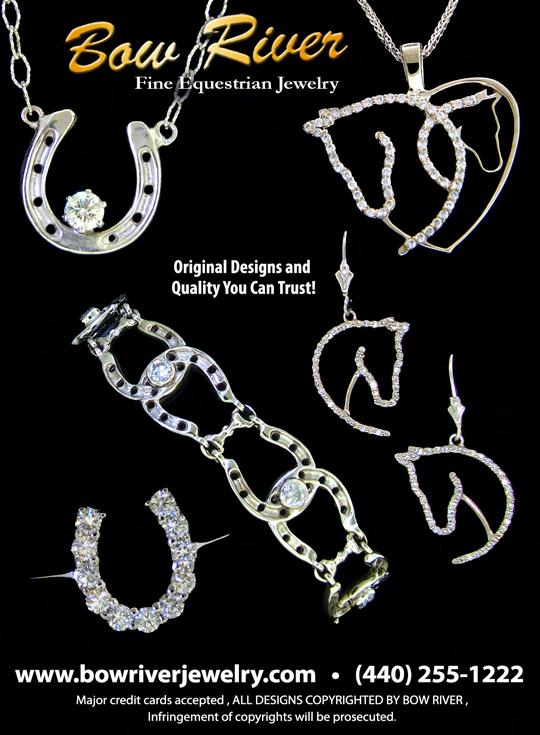

The Jeweled Barn, by Karina Brez, is an eco-friendly shop inspired by the tiny house aesthetic.
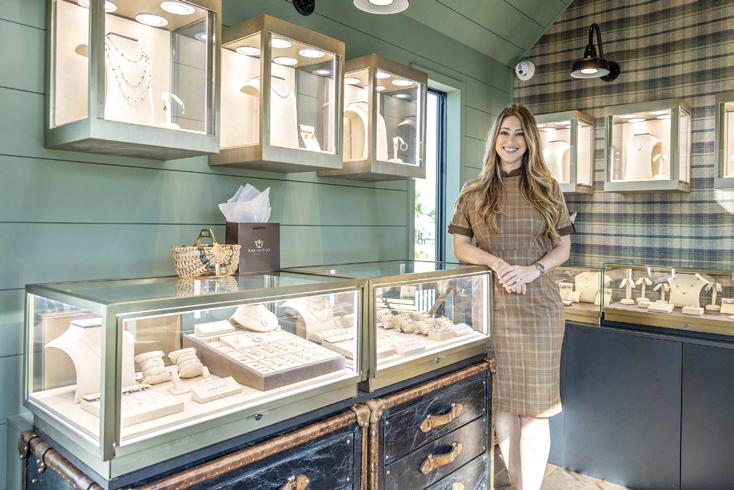
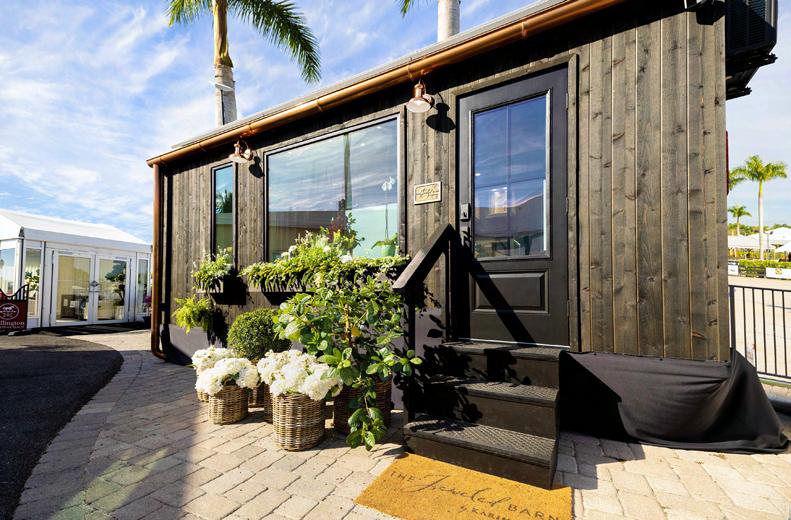

Karina Brez Jewelry celebrates the bond horses and humans have. Influenced by the majesty of the horse, equestrian gear, symbolism, and myth, her designs honor both the sport and the connec�on created. They feature a harmonious balance of love for all things equestrian, while making fine jewelry accessories accessible. In her next branding expansion, Brez takes her equine style and brings it to the world of interior design through The Jeweled Barn, her �ny house retail pop-up concept. The newly debu�ng Jeweled Barn is located just outside of the VIP area of the Winter Equestrian Fes�val, which runs from now through April 2, 2023.
Returning to the Winter Equestrian Fes�val (WEF) at the pres�gious Wellington Interna�onal for the 11th year, the show is the longest-running equestrian event in the world. A�rac�ng the top athletes in the sport, WEF is the premier backdrop for trendse�ng equine style. The Jeweled Barn is a �ny house, inspired by the dis�nguished show, as a celebra�on of the equestrian lifestyle. Designed to appear as a barn on the exterior, it is an homage to the home of the horse. Its interior is me�culously detailed, for the viewing and purchasing of pieces from Karina Brez signature collec�ons.
Jewelry Designer Karina Brez states, “The Jeweled Barn is inspired by the spirit of the equestrian lifestyle, both rus�c and refined. An interpreta�on of an English tack room, it is sophis�cated, incorpora�ng green, gold and reclaimed wood. It is making its debut at WEF, and will be used to showcase Karina Brez Jewelry at horse shows across the U.S.”
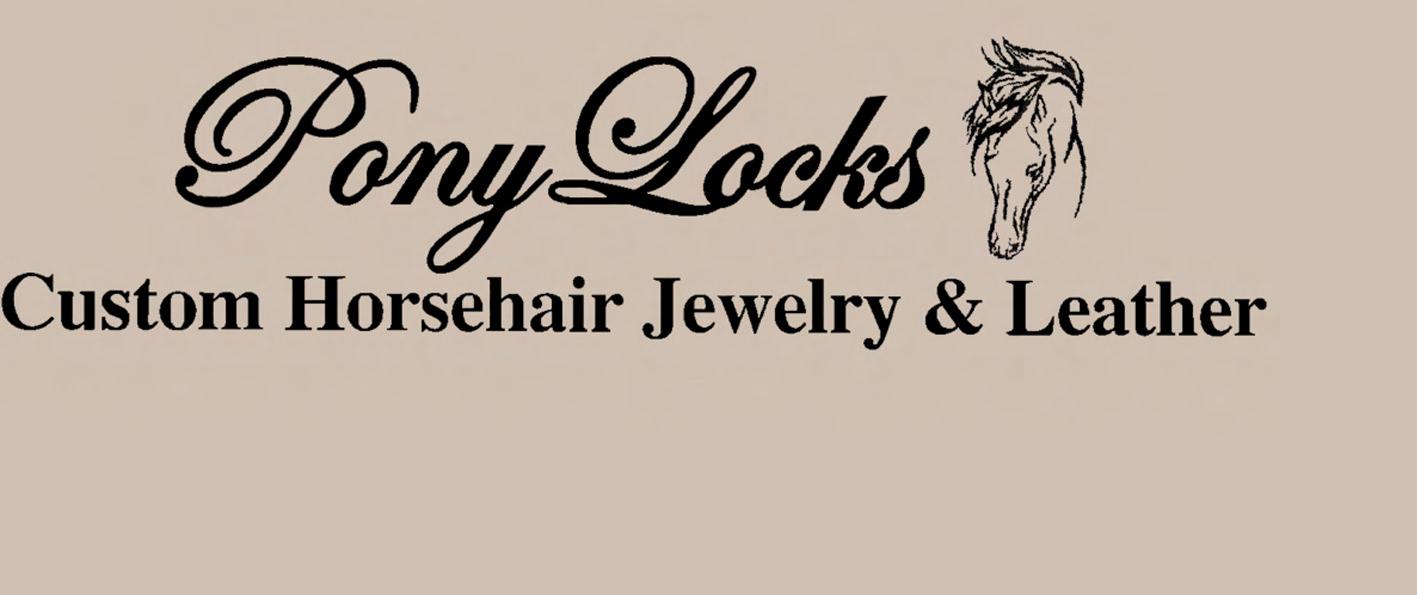
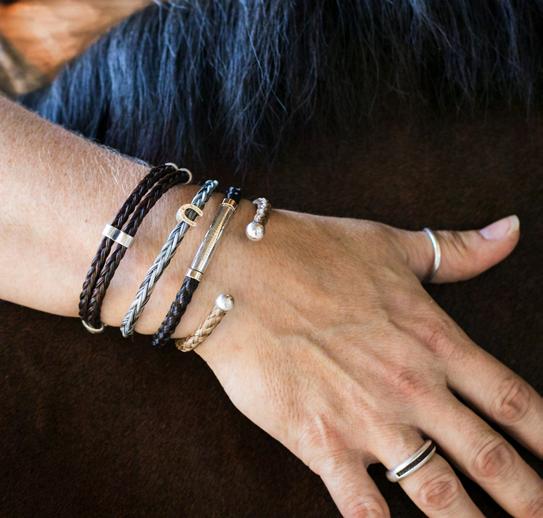
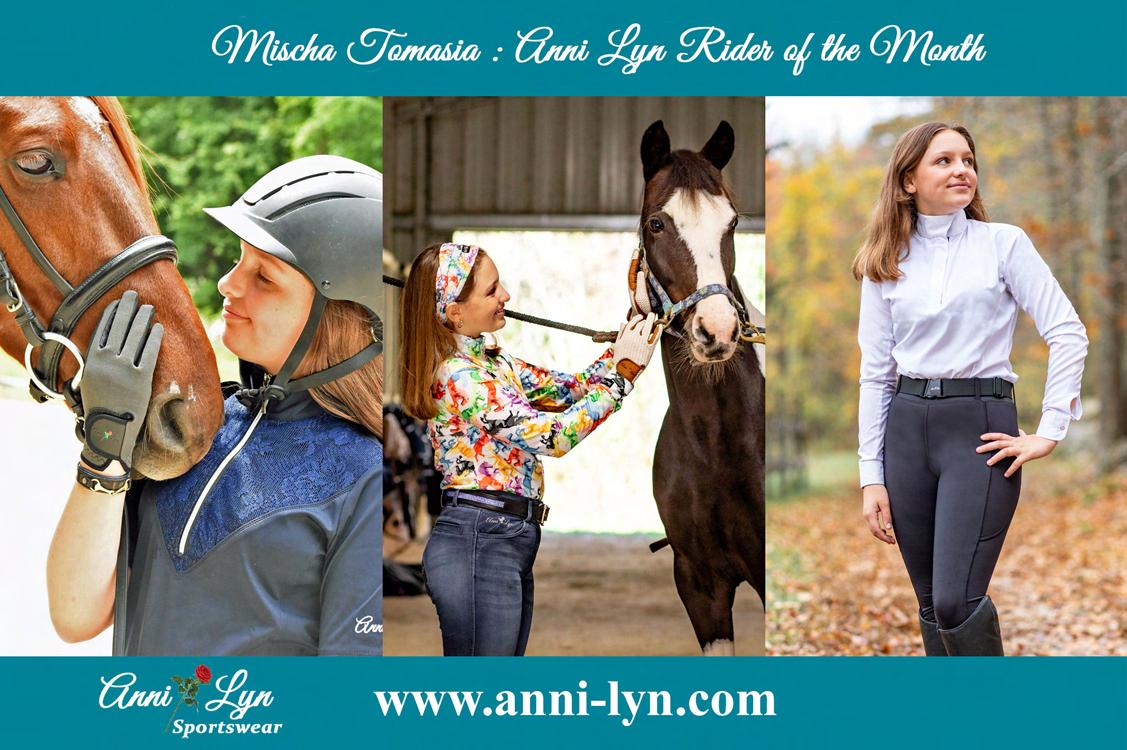


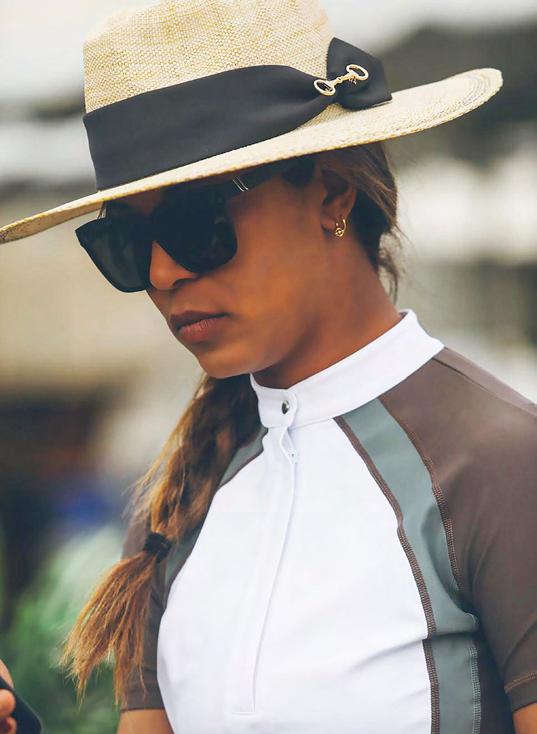
The Jeweled Barn was developed to be carbon neutral: consciously designed with environmental impact in mind, featuring ecofriendly products, several local vendors, and surrounded by many plants. The structure was built by Melbourne, FL-based, Movable Roots. “As a complete custom design and build company, Movable Roots was excited to be part of Karina’s journey, helping her create a unique mobile ‘�ny home’ space that worked for her and her brand,” says Michael Cheatham, Co-Owner, Movable Roots. Its lights are from Barn Light Electric, in Titusville, Florida and the large windows were acquired by PGT, a local window company. In celebra�on of the equestrian aesthe�c, Ralph Lauren tartan wool fabric is repurposed as wallpaper. The shelves are made from old tobacco barns, and there are reclaimed hardwood floors at the base of the structure. The en�re barn is powered by solar panels on its roof, designed and installed by Expert Mobile Solar, from Brevard County, FL. The solar panels are assisted by a ba�ery to allow the barn to be off the grid, including its satellite internet and air condi�oning. Handmade leather trunks have been commissioned from Nick Coggon in No�ngham, England to decorate the building. The interior is furnished with shiplap walls, painted green, and it is decorated with equestrian an�ques. Ebony-stained cedar wood and copper lights surround, and flowers adorn the exterior of The Jeweled Barn. Its innova�ve design offers a modern way to a�end horse shows in a pop-up retail space, allowing for the aesthe�c of the Karina Brez equestrian fine jewelry brand to show through on-the-go.

The Jeweled Barn is located outside of the VIP area of the Winter Equestrian Fes�val (between the interna�onal Club and Hermes), in Wellington, FL. Karina Brez Jewelry is a corporate sponsor, and is sponsoring the Adult Amateur Hunters Division, ages 36-49, at WEF. A horse enthusiast with a passion for gemstones, Brez completed the GIA Graduate Gemologist program, is an appraiser, and advocates for non-profits introducing children to the healing power of horses. Her signature fine jewelry collec�ons are Huggable Hooves®™, Horse LUV®™, Bit of LUV®™, Lucky Horseshoe, Horsea® and The Garden Collec�on. Karina Brez signature collec�ons are available online at h�ps://karinabrez.com/, and will be shown in person at The Jeweled Barn, from now through April 2, 2023.
Follow The Jeweled Barn on Instagram @thejeweledbarn. For sales inquiries or retail partnership inquiries, contact Karina Brez at 561-400-4085 or email wholesale@karinabrez.com or info@karinabrez.com.
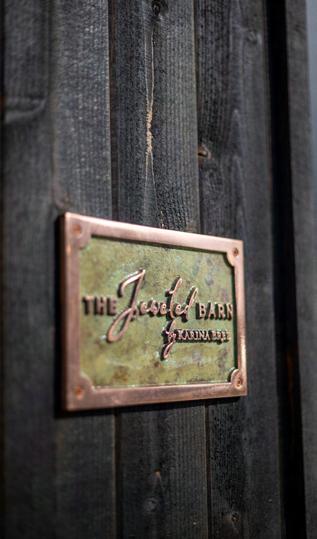
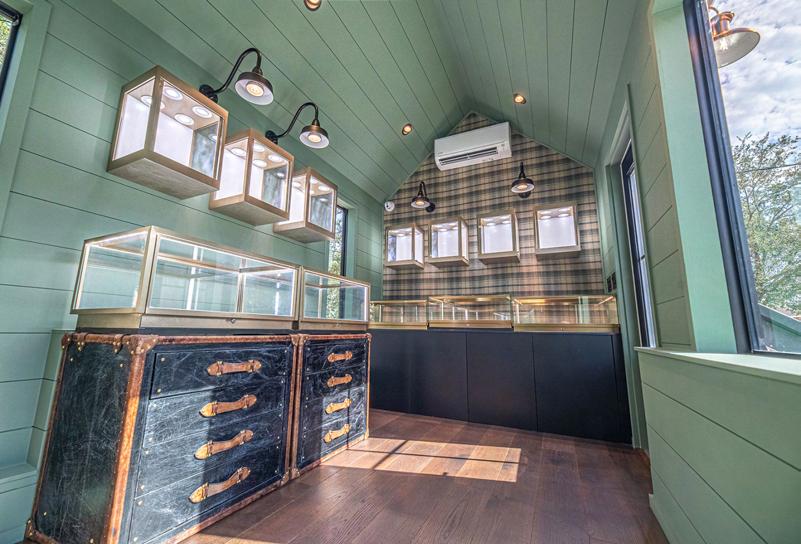



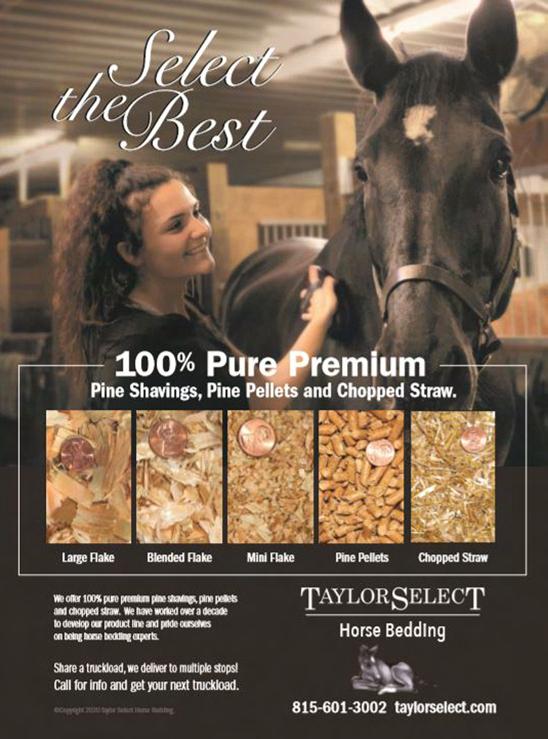

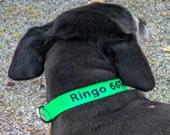
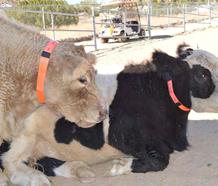
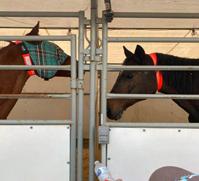

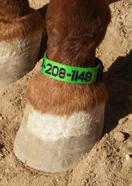
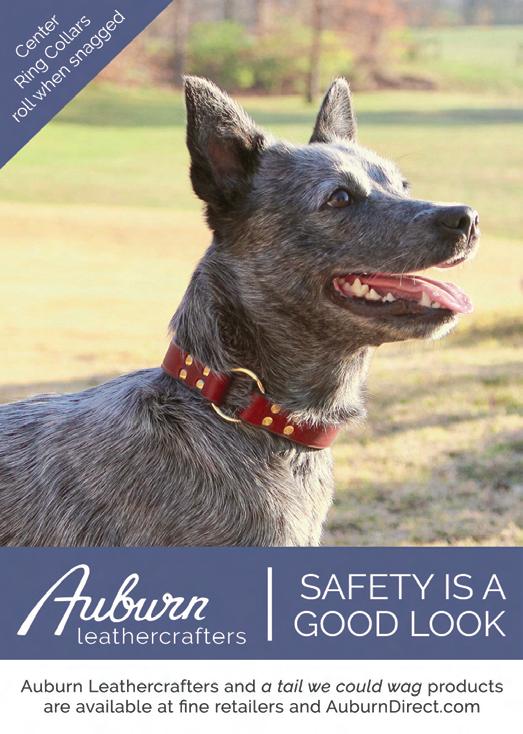
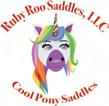


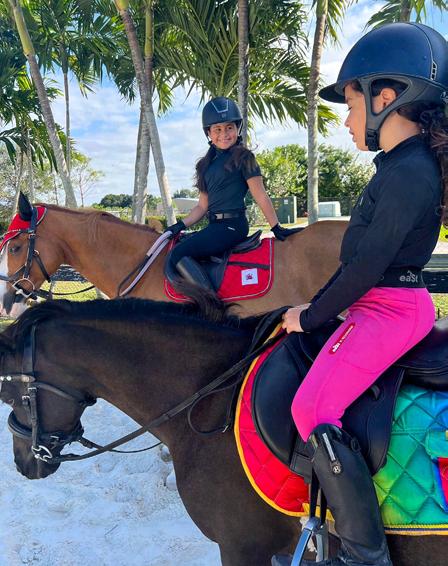
Wrap up against the worst of the weather in style with these functional and fabulous additions from British equestrian fashion brand, Eqcouture.
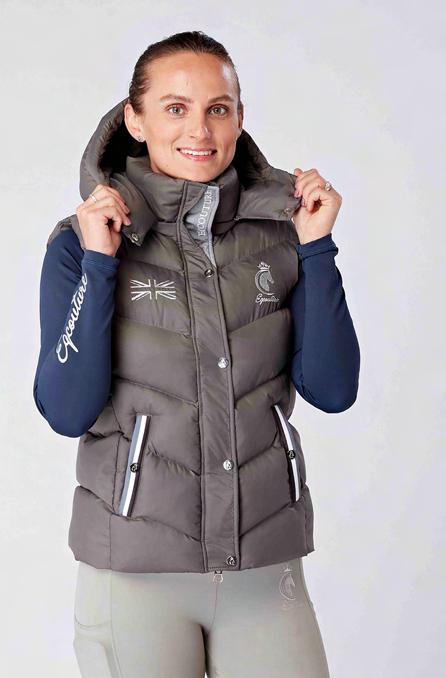
Designed by lifelong rider Sophie Mercer, the Eqcouture range encompasses the reality of winter life with horses without compromising on style, as Sophie explains;
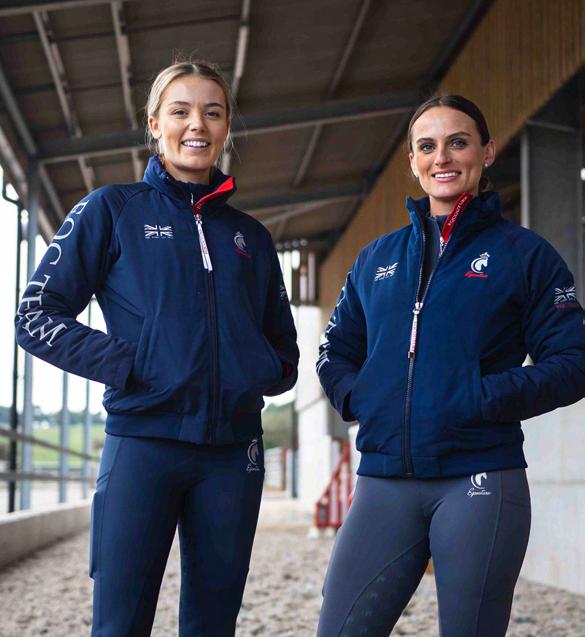
“Winter is par�cularly tough on riders, and with three horses at home, I know the challenges well! I’ve designed rider wear that I know will become your ‘go-to’ staples over the coming months. They were always the pieces I lacked in my riding wardrobe, so I spent considerable �me designing these basics to keep you stylish, warm, and comfortable on the move!.”
The A/W 22 range doesn’t disappoint with second-skin technical base layers and fleece-lined water-resistant riding �ghts. Rose gold and an�que silver metallic embroidered mo�fs adorn the collec�on with a focus on premium quality without a he�y price tag. Their Exclusive Team Gilet with a detachable hood, eco-friendly fill and water-resistant fabric is a versa�le garment that riders love.
Bored with searching for gloves that gave an incredible feel on the reins but didn’t cost a small fortune, Sophie created her own! The Eqcouture SmartGrip Riding Gloves are styled in a second-skin technical fabric with excep�onal grip and feel on the reins during all weathers. Incorpora�ng touch-screen compa�ble detail, these gloves are perfect for riders on the go!
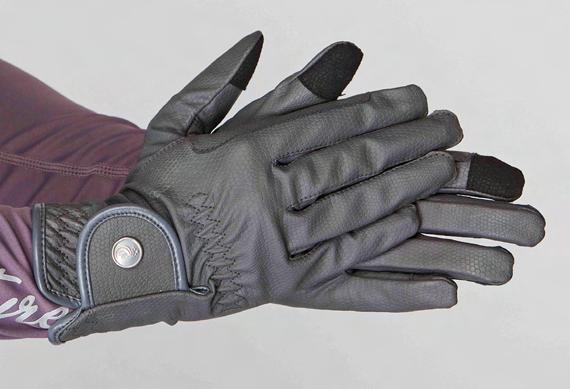
Eqcouture
Outer-wear gets a designer make-over with the classic blouson jacket ge�ng a fresh make-over with the Eqcouture EQC Team Jacket. Styled in a water resistant sporty navy so� shell fabric and fleece-lined for the ul�mate in comfort, this jacket is finished with inside and outside pockets and features their signature embroidered logo to the back and chest, Eqcouture embossed zip pull and printed logo to the arm. A flash of red in the collar and highlights throughout the jacket coupled with an embroidered union jack celebrate this iconic Bri�sh equestrian brands’ roots.
Eqcouture
www.eqcouture.co.uk


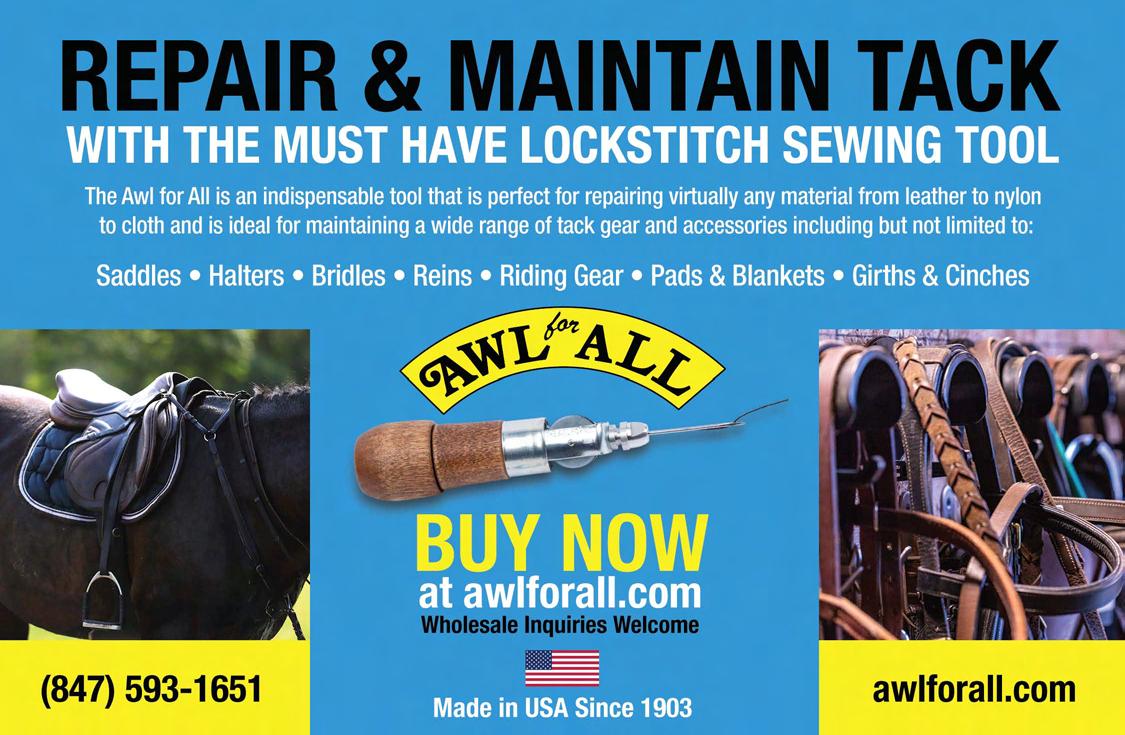
As winter melts to spring, keep riding in comfort with these great finds!
With shorter daylight hours and bad weather condi�ons, winter riding can be challenging, with fading light a genuine issue for riders.
Bri�sh equestrian brand Eqcouture has launched its new winter collec�on, including its Winter Thermal Reflec�ve Riding Tights, complete with toasty micro-fleece thermal lining.
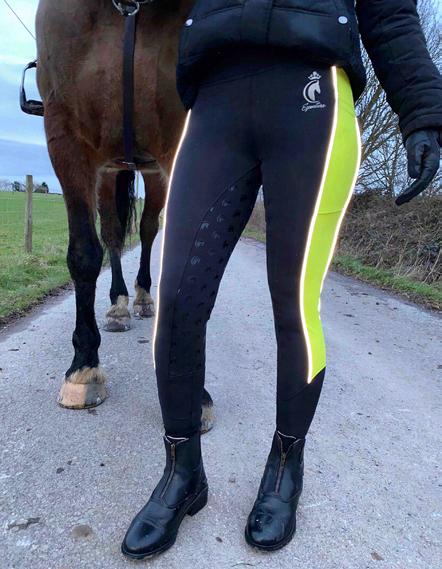
Featuring bright high-visibility panelling with reflec�ve double pipping, these riding �ghts are the perfect addi�on to your high-visibility wardrobe. Styled in a quality, water-resistant fabric with four-way stretch and Eqcouture’s signature silicon full print seat, these riding �ghts feature deep, roomy phone pockets to both thighs and a three inch embroidered comfort waistband for prac�cality and performance.
A great pair of riding �ghts for hacking out, walking the dog or running this winter!
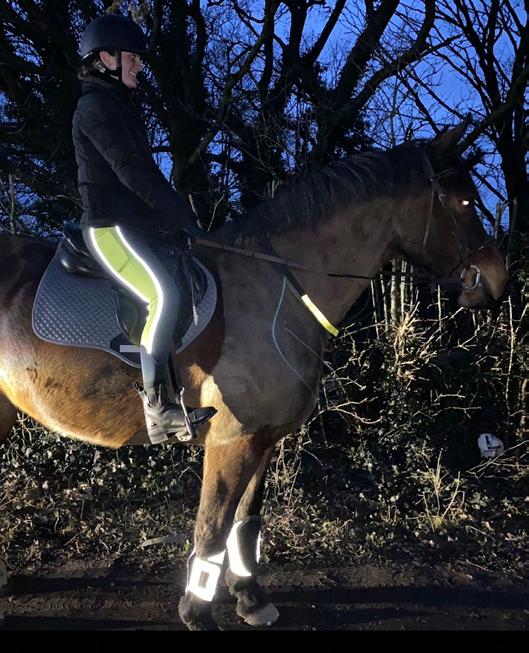
RRP: £59.99
www.eqcouture.co.uk
XXS – XL with the
This quilted vest was so popular with riders last season that we’ve brought it back for summer! A beau�fully fla�ering vest which combines the perfect combina�on of comfort, design and func�on. The quilted panels are designed to fla�er your silhoue�e, and it’s so lightweight you barely know you have it on! Wear it on its own for early morning show days or as a cosy mid-layer to beat those autumn chills to come next season.
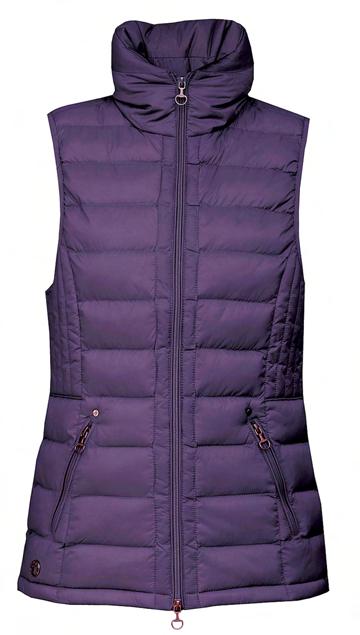
Features a luxury padded pillow collar, two zipped outer pockets with Equetech contrast zip pullers, toasty thermal pocket linings, curved back hem, premium faux down filling and Metal Equetech badge to the front.
RRP: £83.95
XS - 3XL
Colour: Mink/Gunmetal, Navy/Silver, Berry/Rose Gold
www.eqcouture.co.uk

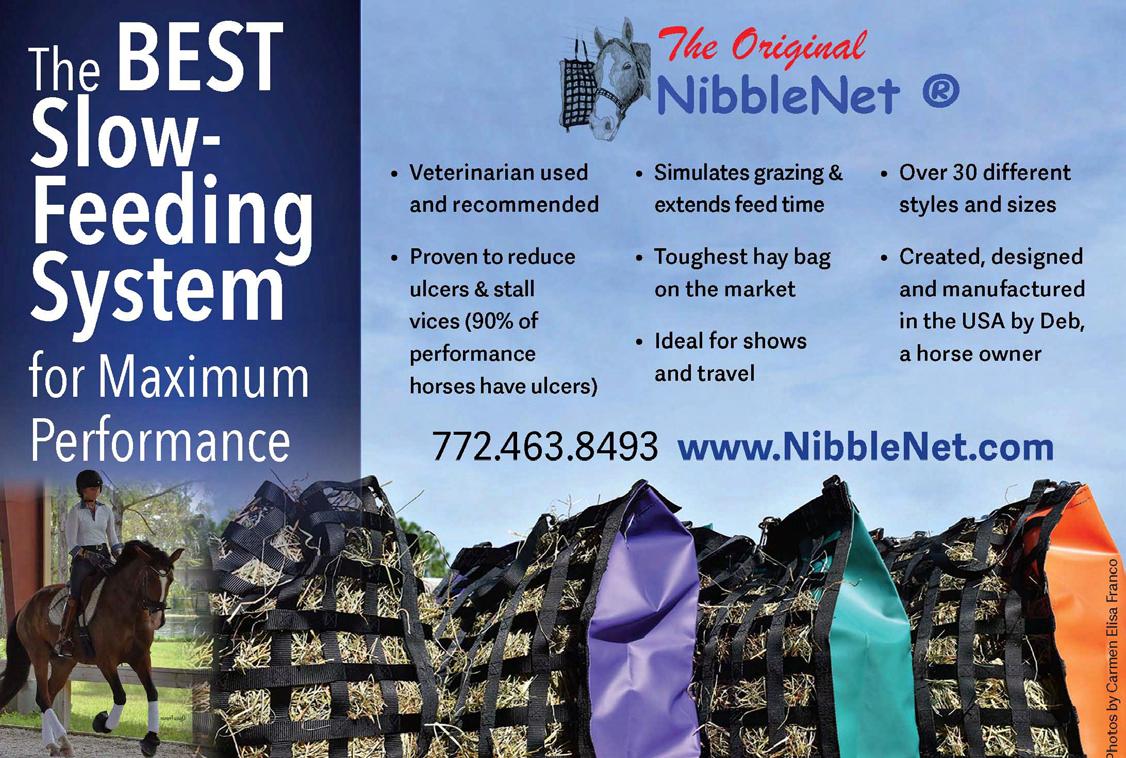
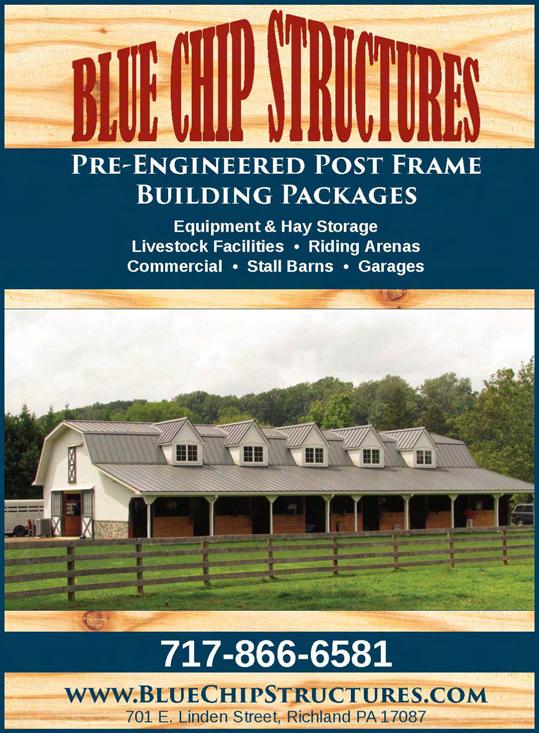

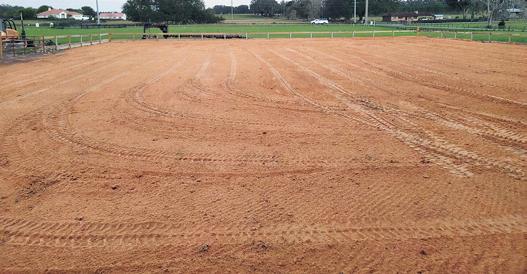
Equestrian entrepreneurship demands discipline, crea�vity and the flexibility to move within the evolu�ons of the horse world, and since 1997 few have mastered the art of bringing dressage to the people be�er than Portuguese horseman and interna�onally known riding master, Vitor Silva. A�er comple�ng his own training, and recognizing the need for a European Classical Dressage school in the United States, in 1997 Vitor launched Sons of the Wind School of Equestrian Arts, since expanding into top shelf dressage facili�es and equi-resorts in Merrimac, MA, and Loxahatchee, FL. “The best teachers are the horses,” he says, which is why Sons of the Wind partners with Ac�ve Riding Trips to offer dressage-intensive training getaways, with bucket listworthy experiences riding horses trained to PSG and above, and assuring incomparable experien�al souvenirs. We think this lifelong horseman’s dedica�on to classical dressage makes bringing an apple to class for these teachers a great idea for combining school and vaca�on!
HERS: What do you remember about your first horse or pony?
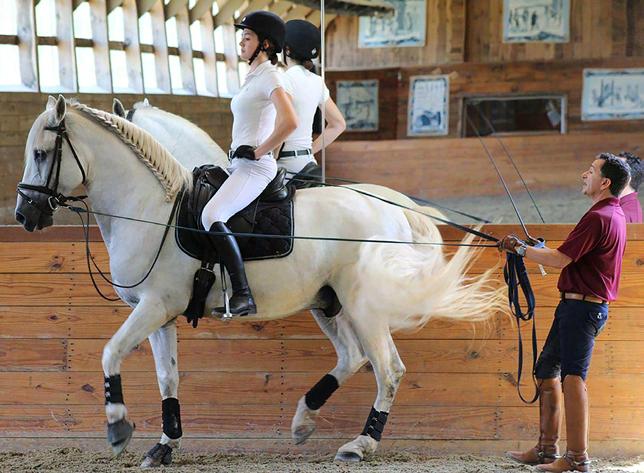
HIS: I got a foal from a friend of my father’s when I was a boy. He had four socks and a big blaze. I remember that every day I got to spend with that little horse felt like Christmas. That is where it all began!
HERS: How old were you when you got your first paying job and what was it?
HIS: My family owned a farm so I have been working on a farm as long as I can remember, but my first paying job outside of my family’s farm was when I arrived in the United States at 19 years old.
HERS: What was your first big break in the horse world?
HIS: I don’t know if I had a “big break” but I felt truly embraced by the industry when I started being invited to be a clinician at major events such as Equitana, Equine Affaire, Midwest Horse Fair, Minnesota Horse Fair and other North American venues.
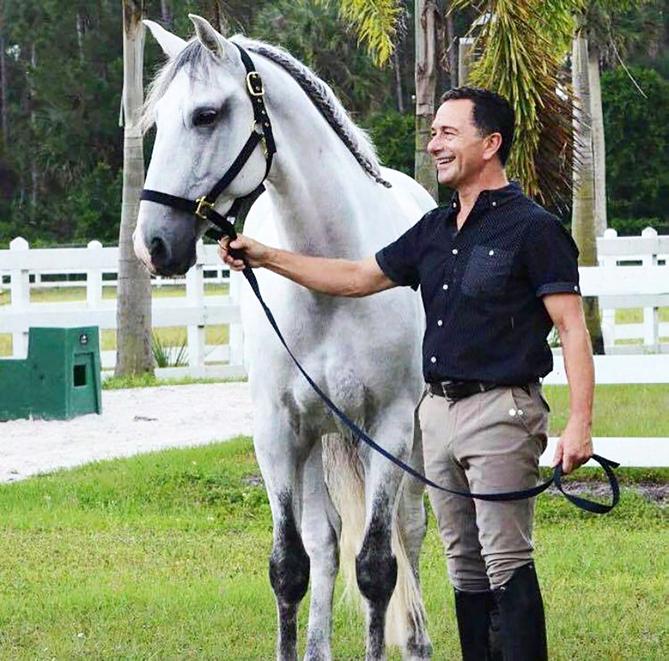
HERS: Best piece of advice you got early in your career?
HIS: Do not promise more than you can deliver. Be honest. It is important not to exaggerate your skills or make extravagant promises to get clients in the door. While we work night and day to provide a good experience for people at Sons of the Wind, we do not want to over-extend our schoolmasters, instructors or trainers by setting up impossible expectations.
HERS: If you had to work outside of horses what might you be doing?
HIS: I would own and run a service company of some sort, because I love to be hands-on and solving problems.
Learn more about the riding school, training programs, and sale horses at SonsOfTheWind.com, and book your own dreamy dressage getaway with ActiveRidingTrips.com.
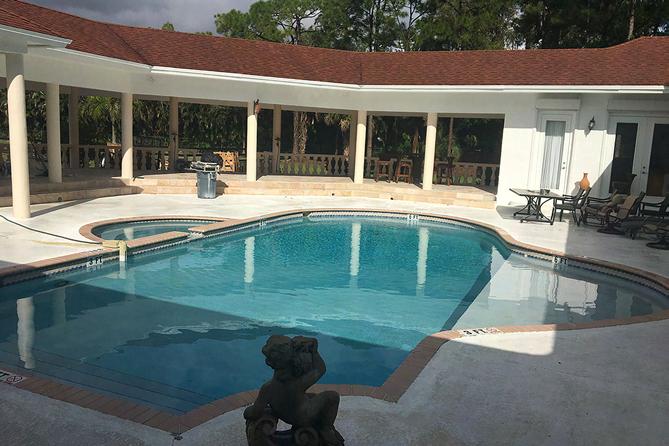
HERS: What’s your favorite motto?
HIS: ‘Learn to control yourself before you try to control the horse.’ This way you can solve issues you might be having with skill and knowledge, instead of forcefulness.
HERS: What has changed or evolved about dressage since you started?
HIS: There has been a huge evolution in dressage since I started! Horses are becoming higher quality, with better gaits, and riding is becoming lighter, with better technical skills to match the horses. There has also been so much advancement in regards to horse care and veterinary medicine, so we are better able to maintain and care for our equine partners.
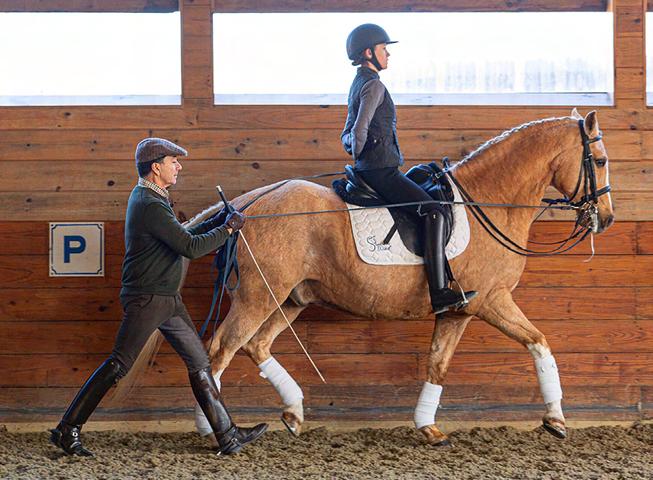
HERS: Where do you see travel, and equi-resorts like Sons Of The Wind, in the next 10 years?

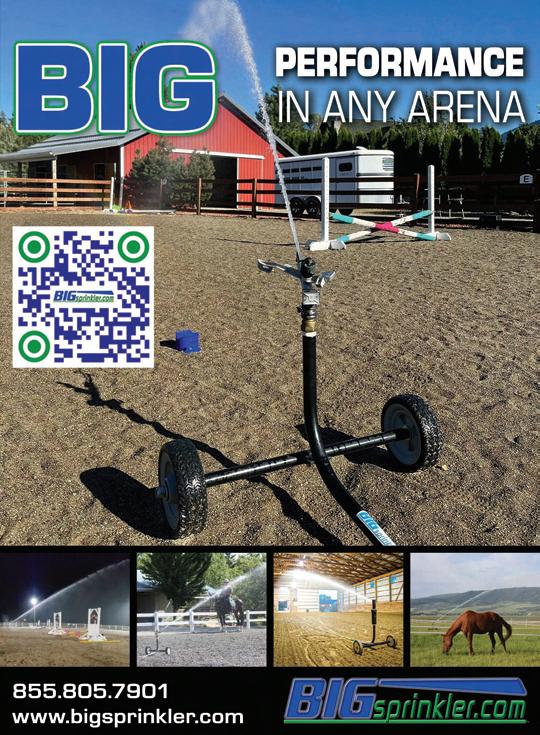
HIS: I see more growth and demand not only in the United States but all over the world. We already have a waiting list and it seems to get longer each year. People are seeking programs where they can experience riding horses trained to the higher levels, where they can feel and experience movements they otherwise wouldn’t be able to. So many come to us and tell us this is their dream! We are fortunate to be able to help bring those dreams to fruition.


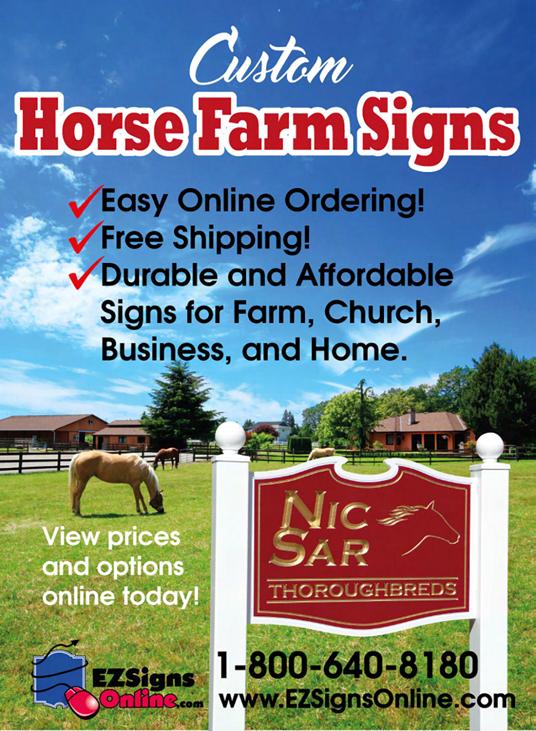
HERS: You can have dinner with three horsemen, past or present. Who’s invited and what’s on the menu?
HIS: Nuno Olivero, Reiner Klimke, Carl Hester. On the menu: A good steak.

Share suggestions for His & Her guests with award-winning equinsta L.A. Sokolowski at latheequinista@gmail.com.


Collectors like to rotate collections with frequency and display their stuff in various parts of one’s home. Some collectible items only make an appearance at certain times of the year. Just like there are certain rules for exhibiting objects in museums, there are also suggestions as to the correct way to prepare objects for long term storage. First and foremost, only store clean objects. When it comes to any collectible, clean it first, then store it.
The location for the storage of collections is vital to their long life and their condition impacts value. Storage areas should have controlled temperature and humidity levels. Since most of us are not in the market for a sophisticated HVAC system like the one the Smithsonian Institute or your local museum uses to maintain storage areas at 70 degrees F and 55% humidity, we can afford to make sensible choices when it comes to art and antiques storage. For instance, an attic that is freezing cold in the winter and burning hot in the summer is not an appropriate place to store your art, antiques, or collectibles. The basement, which is commonly damp or even wet during certain times of the year, is not a good solution for storing your stuff either. Any drastic change in temperature or humidity within a storage area can damage your collections to the point of no return. Once mold grows or heat attacks an object, the game is over. Art and antiques do not fare well in sheds, garages, or outbuildings where there is little or no regulated heating or cooling. Simply put, the temperature and humidity in which you feel comfortable is the same climate that is best for your art, antiques, and collectibles. Consider storing your collections in a guest room closet or other low traffic area on the main floor of your home. Temperature and humidity need to be constant and remember, art and antiques like to live where you like to live. Sometimes it is best to display your objects and let them enjoy the consistent temperature of your home.
There are certain things to avoid when it comes to storing art and antiques. Some objects need more care than others. Some objects cannot be near other objects. And there are specific objects that need more care than others. For example, cardboard should be avoided in your storage spaces. It attracts bugs. It is acidic. It can leave stains on
fragile art or antiques. Bubble wrap is great for transport but a no-no when it comes to long term storage. Bubble wrap traps heat and will speed up the deterioration process of your prized possessions. So, don’t used bubble wrap to store your pieces. You don’t want to wrap and store your valuable Lladro figurines in bubble wrap and then store them away for months. Why? The heat trapped within the bubble wrap over time may damage the hand painted and glazed porcelain figurine.
Remember, proper storage ensures good condition and condition means value when appraising your collections.
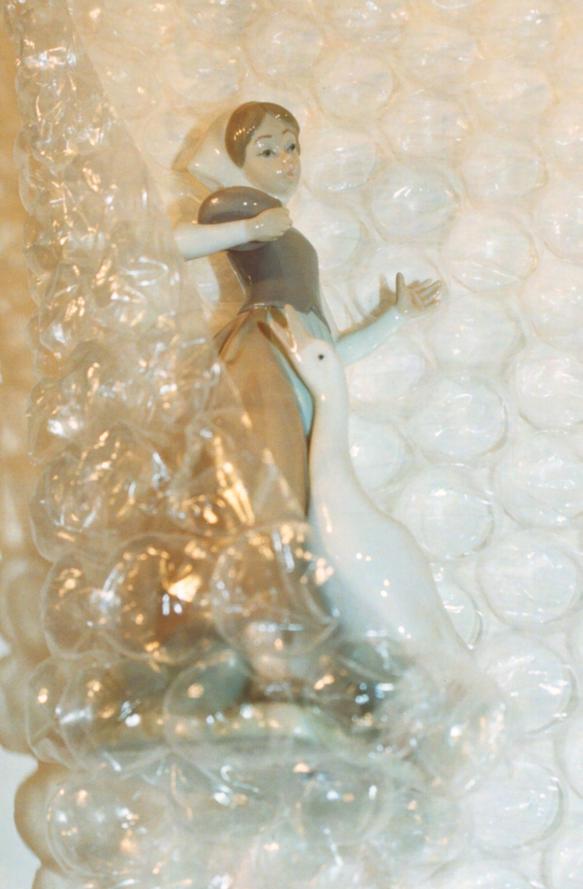
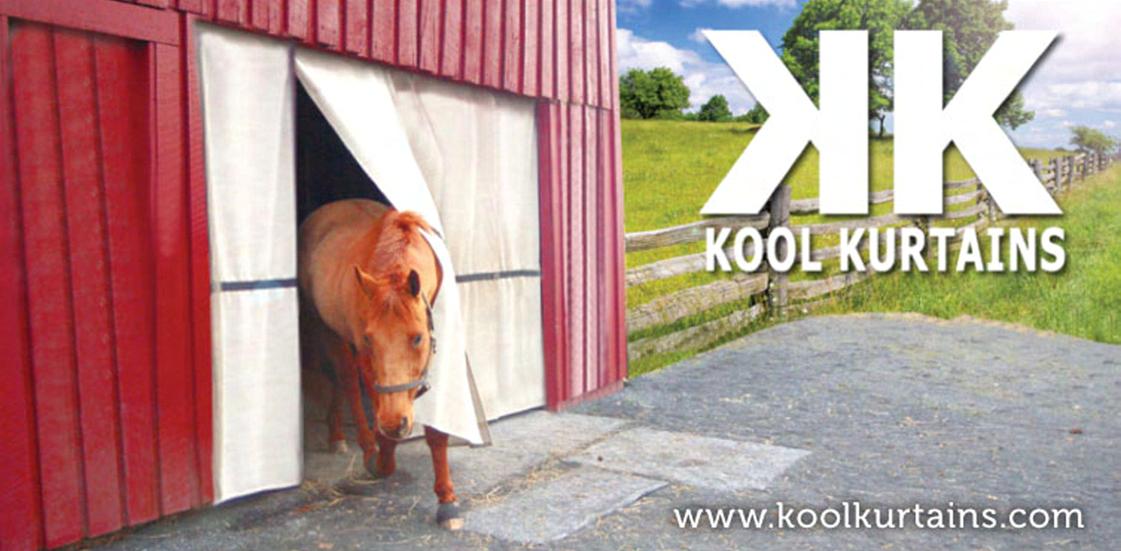

Born in Rome in 1949, the grand daughter of Herbert Hasel�ne, Carla was always in awe of her illustrious forebears. A trip to the Royal Academy introduced her to the work of Karen Jonzen, England’s leading terraco�a sculptor. In 1982 Carla entered Jonzen’s studio in Fulham, “not” in her own words “to be taught, but to be shown how”.
While animal commissions include the head of a dressage stallion, for Baroness von Zuylen, Carla undertakes studies of subjects which her illustrious grand father never tackled; cockerels, ostriches, hares and even a black panther.
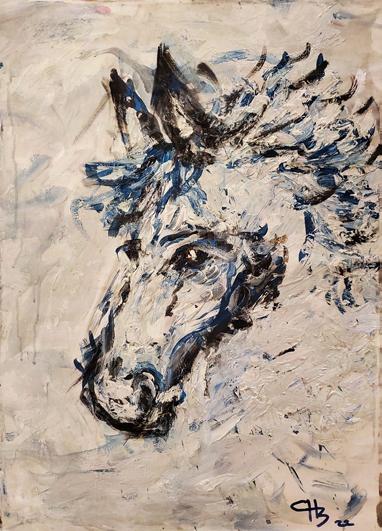
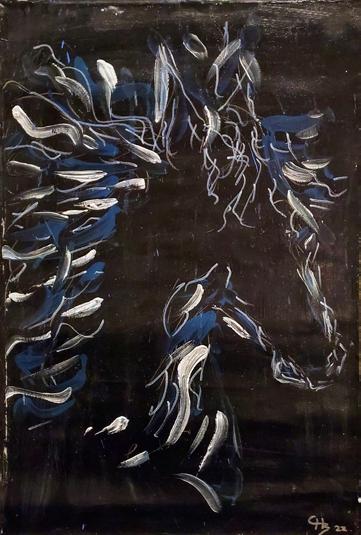
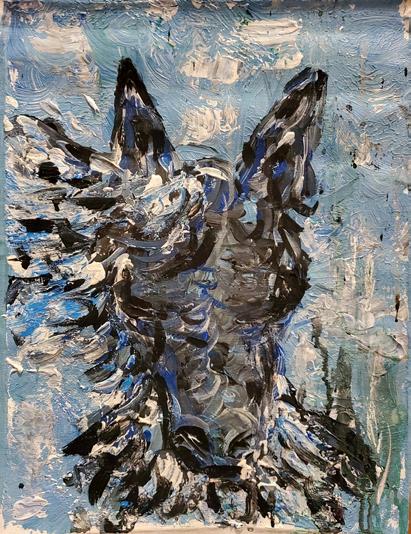
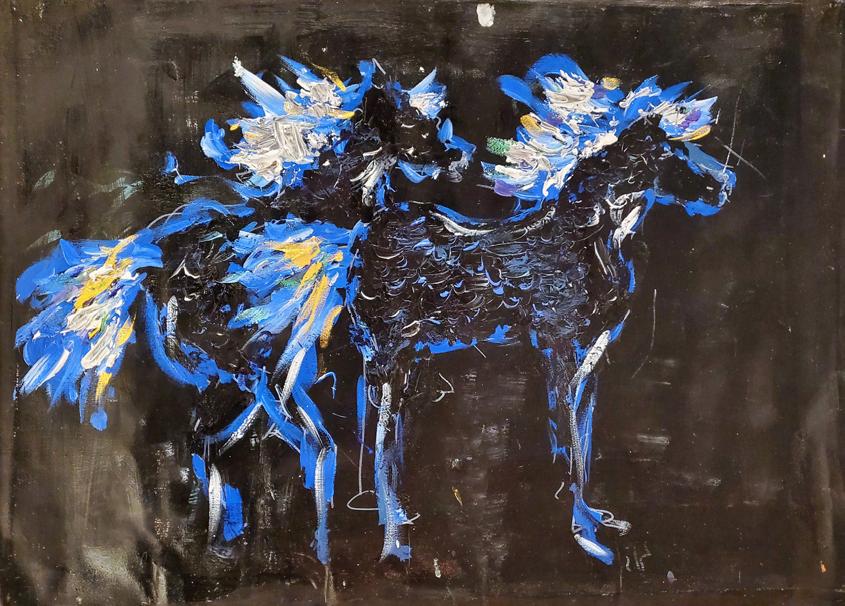

Exhibi�ons of Carla’s sculpture have been held in Florida, New York, Paris and London, and her work resides in private collec�ons throughout the world, including Tokyo and New York.
Carla shares the Hasel�ne passion for a�en�on to detail and professionalism. Her nudes exude elegant ero�cism; her portrait busts show close a�en�on to the physical a�ributes of her si�er, and also communicate their character. The animals she portrays, be they dog, wild boar or barn owl, have an exuberance and life of their own. From naturalis�c to more stylised renderings, she shares her great-grandfather’s and grandfather’s desire for perfec�on.


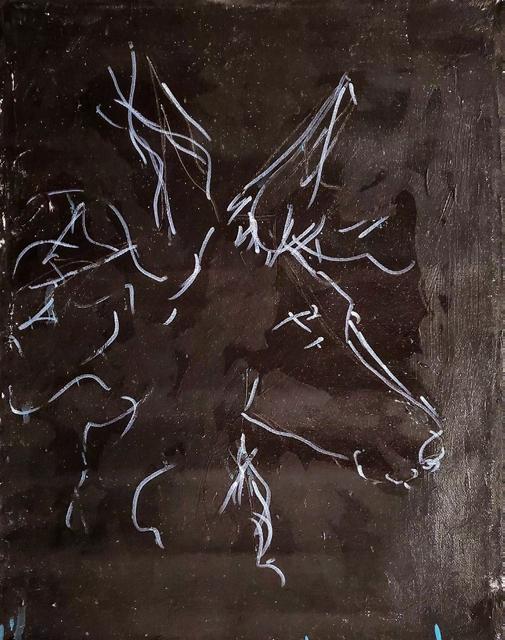
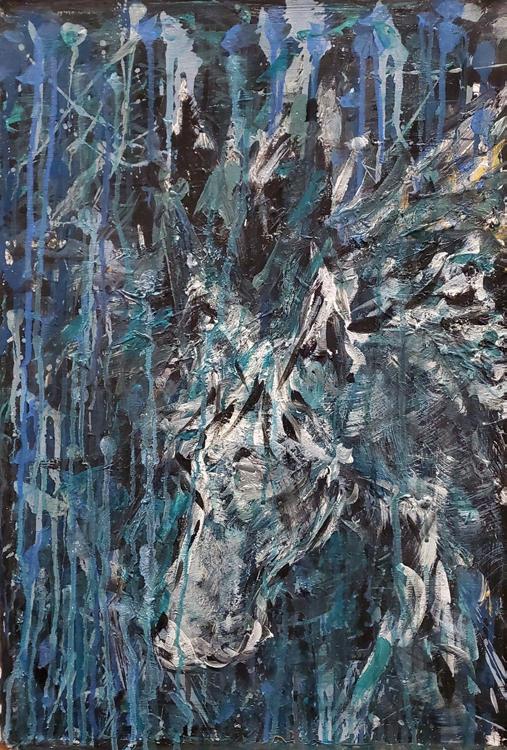
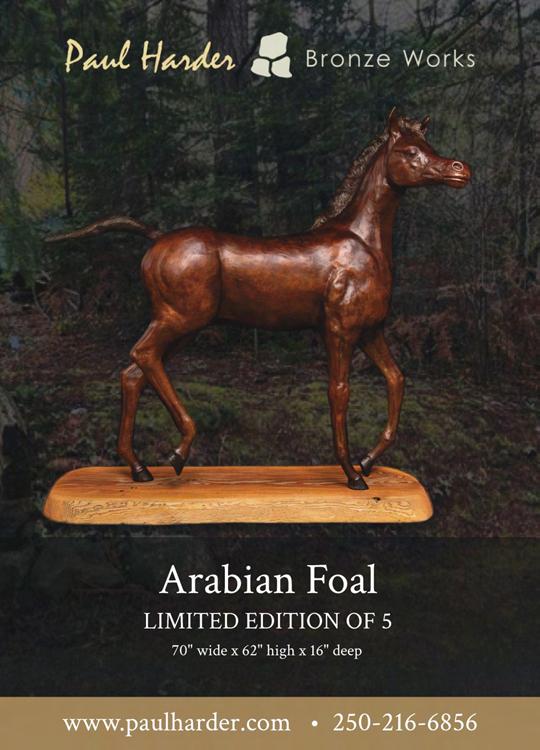
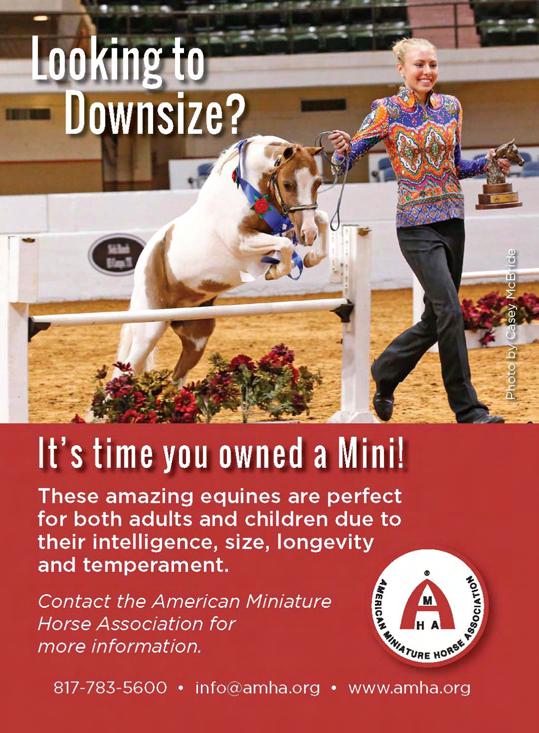
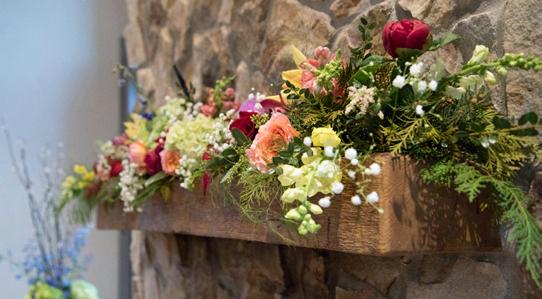

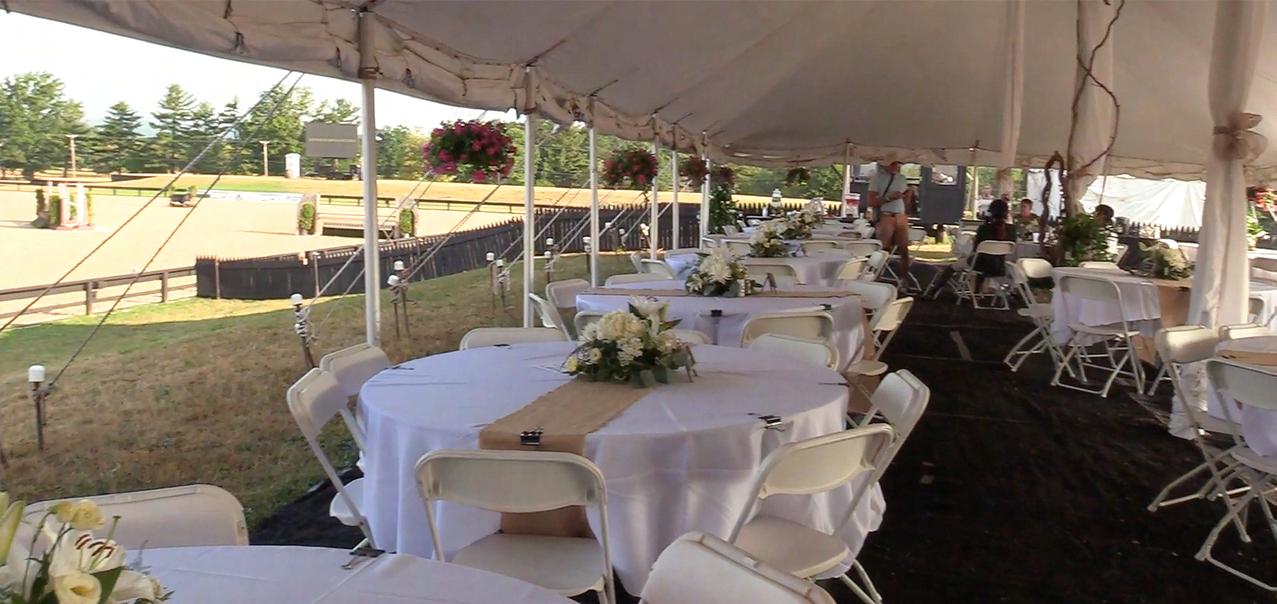
From color, to style, symbolism to even scent (if desired), floral designs are often a pinnacle of style and decoration for any occasion. When stepping into an event, carefully made and placed floral arrangements will highlight the best aspects of the particular celebration--making the guests feel as if they’ve walked into something special and magical, while not ever taking away attention from the main event or guest of honor.
A florist is like a magician, breathing in life, color, mood, and atmosphere without ever revealing her hand. One such florist, Alison Lorenz of Dana Point Designs, LLC, has created stunning florals for equestrian maternity photo shoots, equestrian themed baby showers, farm-styles weddings, a sidesaddle clinic--Camp Leaping Horn--held at the USET, and the VIP tent for the USHJA International Hunter Derby in Memory of Bill Ellis—Princeton Show Jumping’s largest charity event of 2022. “Alison Lorenz, of Dana Point Designs, provided beautiful decorations for our international hunter derby in honor of our friend and inspirational horse professional Bill Ellis. Alison offered inspired design and was super to work with! We highly recommend Alison and Dana Point Designs and look forward to having her back at Princeton Show Jumping,” said Andrew Philbrick, Competition Organizer of Princeton Show Jumping.
Through her work, Alison has acquired a true love for the equestrian lifestyle, because “of the uniqueness of the people involved. Maybe because they work with strong, independent, and intelligent animals, they are straightforward. I really love attending and creating floral art for equestrian events, because the people there are honest, polite, and dependable--and many times, I can bring my dog!”
Alison began her floral design business after leaving the legal profession. Not one to shy away from a challenge, Alison decided to pursue something completely different that would add a bit of beauty to the world. The art of floral arrangement proved felt “rewarding to be invited into people’s most important life events, to help them celebrate and sometimes to help them remember.” As she works on the pieces for these events, she “spend[s] time thinking about the people involved and what these pieces mean” and hopes she sends some good energy along with her work.
“Alison provided us with stunning pieces for our farmhouse wedding,” Jennifer Ohlsson recalls. “Her choice of flowers and placement were better than anything we had ever imagined. She even went so far as to include special touches which were exceptionally personal to us which we hadn’t even considered as a options.”
When asked what the equestrian lifestyle means to her, Alison says: “the equestrian lifestyle is based on a love of the outdoors, animals, socializing, and a great respect for nature. People who live in the equestrian world often have a sense of the beauty of nature and the finer things in life. They have a reverence for the natural order of things.” A beautiful place and mindset to marry the love of horses and floral arrangements.
Alison’s reverence for nature and its beauty, horses and their power, and the equestrians and their grace and strength come through in every bouquet she makes, every table she adorns, and every larger than life installment she fashions.
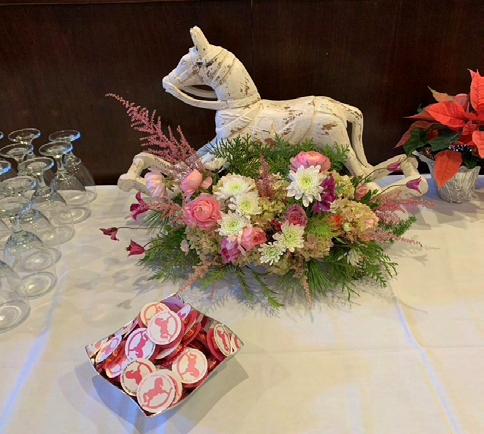
Alison enjoys bringing her floral art to customers throughout the country. For more information about Alison’s work, or to discuss your upcoming event, visit her website: danapointdesigns.com
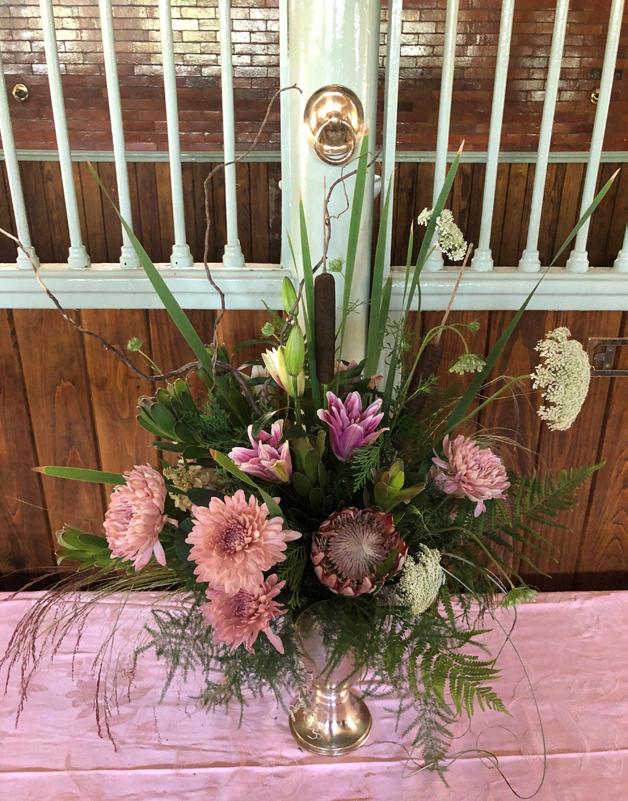
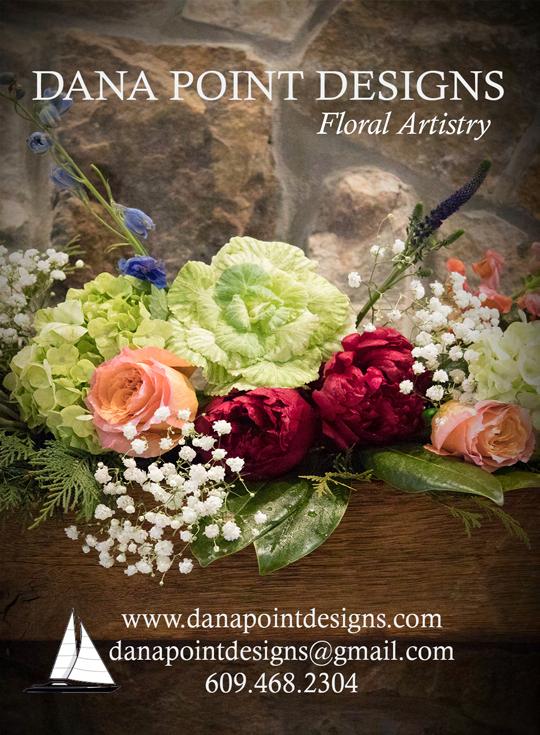


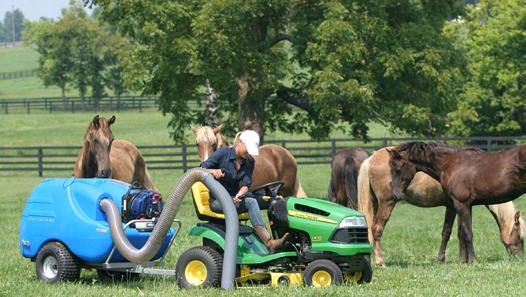
If you are an equestrian, you know how much you love looking out your window and seeing your horses safe and happy, grazing in the paddocks. There is nothing more beautiful than watching them run in the fields or performing well in the ring. The convenience and peaceful serenity of stepping out into your own barn without the drama associated with boarding facilities is every true horseman’s dream. Here are 4 tips to help you find the perfect farm to make your dreams come true.
By Marysue Jacobs and Francesca Damasceno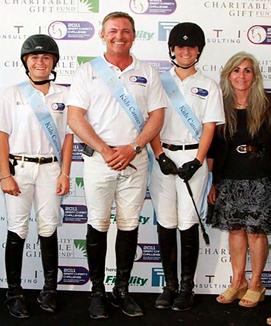
Equestrian farms are not cookie cu�er houses, and they are all unique and have different ameni�es to suit different disciplines, such as rings, foo�ng, fencing, etc. I always have to laugh when I get a call from another Realtor on one of our horse farm listings and their first ques�on is what is a “stall” and what is an “eqween”. Although its funny, it is also very sad because I know they have no clue what they are doing and it’s a disservice to their buyer. Find a knowledgeable equestrian realtor that is full �me, dedicated to the real estate profession and commi�ed to doing their job in a serious manner. I see so many mistakes made when riders decide to get a real estate license just to collect a commission when their friends want to buy a horse property. Your farm purchase will be one of the largest and most important decisions of your life�me and you need to make sure it is the correct fit for you and a good investment.
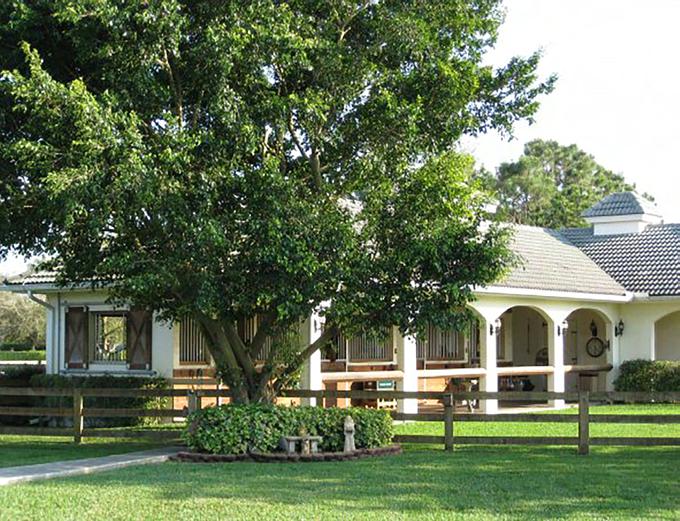
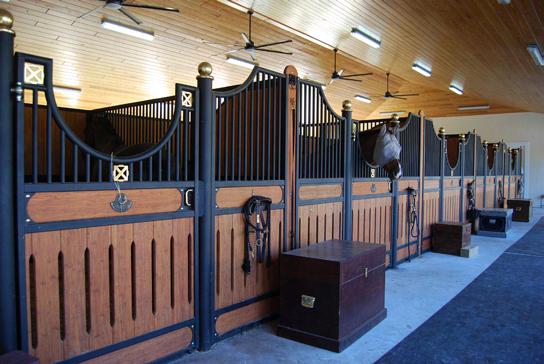
Do you need to be near a horse show, veterinary facility, trails, racetrack, park? How will your loca�on resell if you ever decided to change your ownership? In Wellington Florida, farms are priced like ocean front proper�es when they are a 2-minute hack to the show grounds and as they get further from the show and the hack is longer, the land goes down in price. Building costs are the same, but safety and convenience to the show grounds is priority. In other states like Kentucky, emphasis is put on pasture quality,

and in Maryland trails and fox hun�ng might be important, so each state will have its own unique quali�es and you will have your list of what’s important to you. Make sure if you ever have an emergency that you have a feed store, veterinarian, and a fire department nearby.

In my 34 years of selling real estate every piece of vacant land I have ever sold was different. You can have two lots right next door to each other that look exactly the same and both can have different issues. Equestrians want acreage whether its for the number of horses they have or paddocks, rings, barns, tracks and grazing, all farms need land. Make sure when you buy that you know how many horses are allowed per acre of land and thoroughly check pasture quality to make sure the grass in healthy and there are no poisonous plants. Check for wetlands, muck and sink hole history and make sure, if it’s wooded that you are legally allowed to clear trees if needed for your barn and ring. Some states have endangered tree laws and invasive tree laws and you might find its very costly to clear the area where you need to build. In addi�on, if you are buying in a state like Florida, Louisiana or a low costal area, be very sure that the eleva�on is high enough that it will not flood in a storm and the lay of the land provides good drainage. Be sure to have good road access and enough space to turn trailers and trucks if you must cross any canal or stream bridges. Have your water tested and make sure that a sep�c system can drain and be properly maintained.

This ar�cle is just a quick summary of the many things to think about in your new venture. Just remember to think it out, have a good plan of what you need and what you want to accomplish. Seek a local professional that knows the area very well for good advice and always consider whether the improvements not only meet your needs, but also whether they will help increase the value of your property for resale.
We are always here to help and any�me you have an equestrian farm ques�on please feel free to call us as we are 24 hours a day – 7 days a week at 561-758-5212
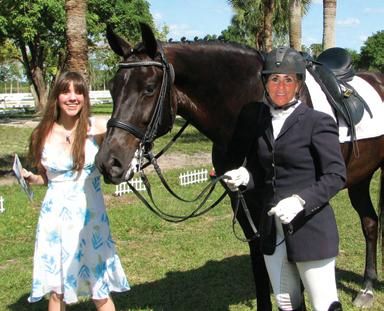
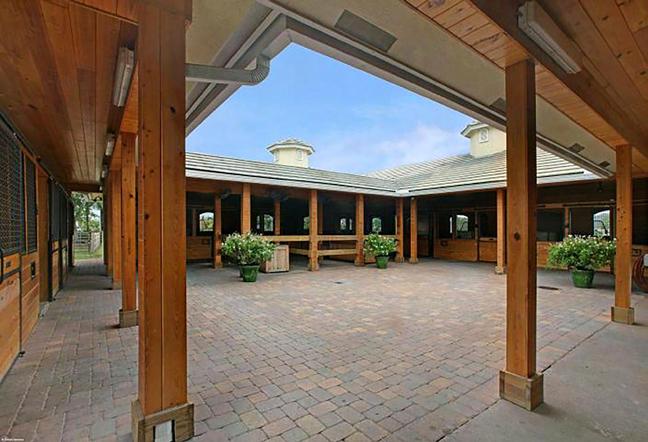

Marysue Jacobs is the Broker for Des�ny Interna�onal Proper�es selling real estate for over 34 years in Florida and Maryland. She is a lifelong equestrian with experience in many different disciplines and was previously the owner of the Florida Horseman TV show on ABC and owner of the Horseman Magazine, she is also presently on the Equestrian Advisory Board for Malvern Bank in Palm Beach Florida and Pennsylvania. She can be reached at 561758-5212
Every discipline has different needs. A Grand Prix rider needs a 200’ X 200’ ring where a dressage rider might only need a 70’ by 200’ ring. Race horses need a training track and polo players want a lot of turnout for their ponies. Carefully consider what you need and make yourself a list before talking with a realtor so you don’t waste weeks looking at farms that don’t meet your needs. Narrow down the size of your ring, do you need a covered arena, what type of fencing do you prefer, does the farm need to have housing, do you want an alterna�ve water supply, how many stalls do you want, do you need a center aisle barn in case of a hurricane or for cold weather. In many cases they can weed out proper�es ahead of �me that either won’t allow as many stalls as you need or don’t have the right layout to fit your ring. They can check the zoning to see if you are allowed a commercial barn to teach lessons or have a covered arena.
She holds the record for the top sale in Wellington Place and has helped many buyers and sellers find exactly what they are looking for whether it’s a single-family home, farm, or a seasonal rental. Francesca’s equine knowledge will help you find your luxury farm estate or the dream home you have been looking for. She can be reached at 814-795-5453.
Des�ny Interna�onal Proper�es website is www.des�nyinter.com
This horse town has a deep and interesting history starting in the late 1800s when horse enthusiasts came for the winter, which became the Winter Colony. From its broad parkways to its bustling parks and recreation facilities, from its historic estates to its newly constructed residential neighborhoods, from its sprawling horse farms to its downtown horse district, Aiken is one of the most picturesque communities in the southeast, if not the country.
So why Aiken? As our friend Mary Trotman says when asked what makes Aiken special: “No Mud!” The sandy soil here makes perfect footing for all equestrian sports. Compare that with the cold weather up north and the hot weather down south (not that it can’t get either at times) — in general we have a more “temperate” climate here that allows for the practice of your particular horse discipline on a fairly regular basis. Perhaps one of the most striking things (back to the mud & sand discussion) is that you can have a heavy rainfall in the morning and be riding in the afternoon because the water has drained so quickly. I remember the days back in Los Angeles that a rain meant two days of hand walking.
My partner and dressage trainer, Tom Murray and I fled Los Angeles when the fires, lack of water and high real estate prices were impacting the growth of our Hanoverian breeding business, so we re-located to Portland, Oregon...perhaps the “mud capital” of the U.S. Though land was significantly cheaper than Los Angeles, we began to understand why. It basically rained for 6 months out of the year, beginning on Halloween night and stopping sometime in April.
Tom, now a Carolina Real Estate Company agent, had always been fascinated by the small horse town of Aiken. So after some reconnaissance, we packed up 7 horses, 2 dogs, a cat and multiple folks into two horse trailers and made the trip across the country.
What we found was a very vibrant and diverse equine oasis in the middle of rural South Carolina, its history of equine sport dating back to the 1800s when wealthy northerners came down for the winter, pursuing fox hunting, polo, etc.
For me, as an amateur eventer, what was immediately apparent was I didn’t have to drive 5 hours to get to an event. In fact, on most weekends there were multiple events within a half hour of our farm. And in fact, many of those 3-day events were done in one day — and often you could be in and out by lunch!!
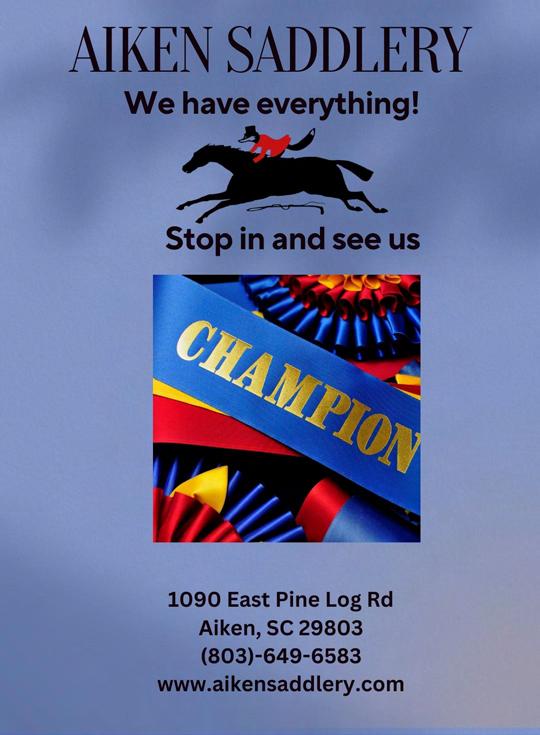
Aiken real estate was affordable and allowed us to purchase a 30-acre farm about 18 minutes from downtown and Tom was able to open his dressage training facility and breeding program, both of which seem to be thriving. Dressage has expanded here of late with beautiful venues such as Bruce’s Field, The Vista, Jumping Branch, and Stable View, which also host an array of hunter jumper, eventing, and other types of show.
First thing a new visitor to Aiken will notice is the diversity of horse activities here. The gambit runs from Olympic athletes that spend their
winters here to train and compete to riders who just love to spend time with their horses and everything in between. The Hitchcock Woods, with 2100 acres and 70 miles of sandy trails is at the center of this horse town. Aiken is also known for its very active polo and fox hunting communities. And no Thanksgiving is complete without attending the Blessing of the Hounds under the cathedral pines in Hitchcock Woods!
In the winter months, our equine population expands as snowbirds and their equine companions trailer down and the show season explodes with schooling shows, rated events, clinics and competitions of all kinds.
Does Aiken feel like living in the south? Truthfully, yes and no. There is southern hospitality, collard greens, shrimp & grits — but it is such a melting pot of people gathered from all across the U.S., you feel more “horse culture” than “Southern culture.”
After four years in Aiken, we have made many friends and still love going to the Willcox for cocktails or one of the nice eateries in town and running into this friend or that — it’s definitely a small town, but a special and wonderful one. We highly recommend it. Bring your horse friends with you, or if you don’t have one, we have some beautiful Hanoverian babies to offer! Hope to see you at Whiskey Alley soon!
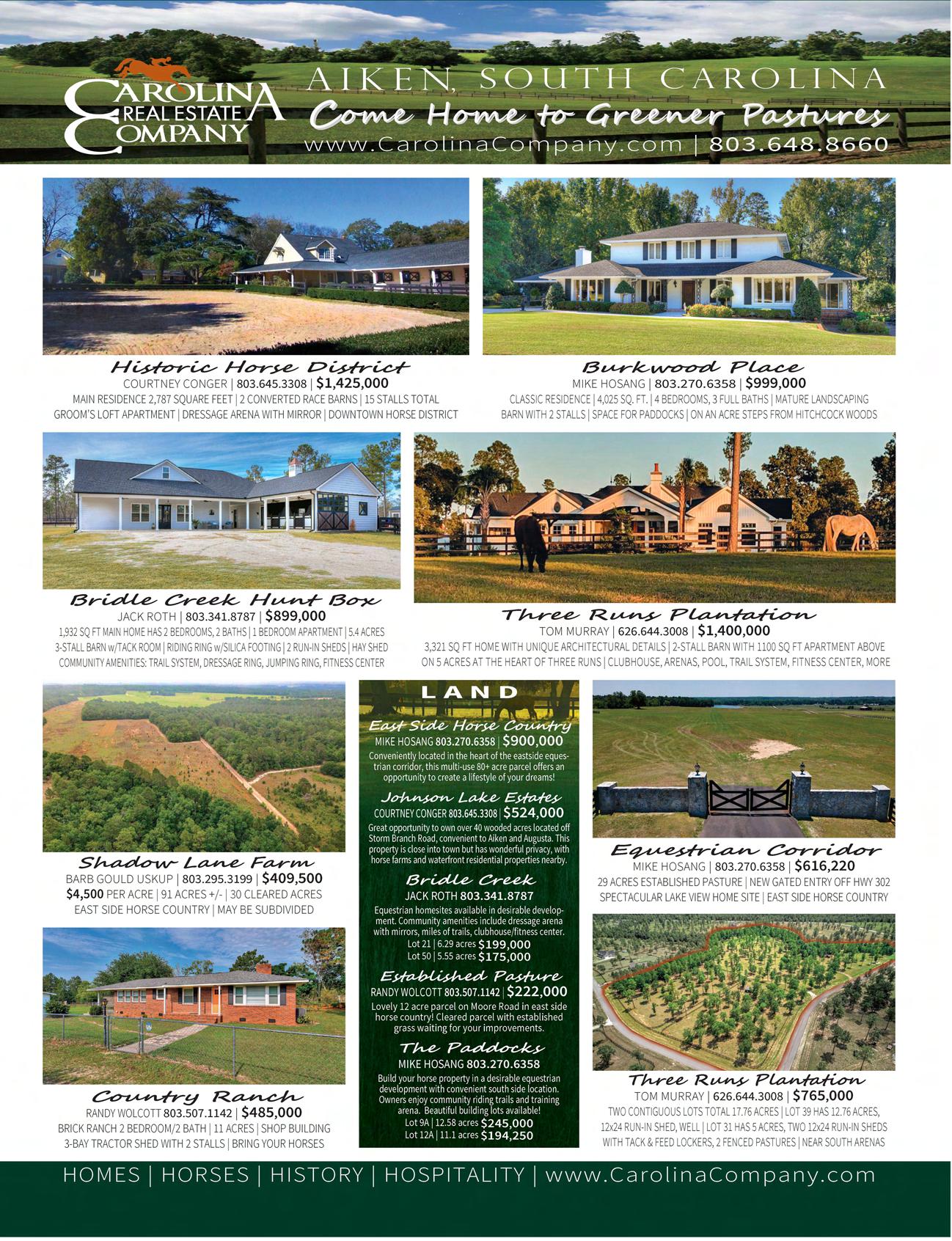
March 3 & 4 Grand-Prix Even�ng Fes�val at Bruce’s Field. Bruce’s Field at Aiken Horse Park, 931 Powderhouse Rd SE, Aiken, SC
March 10-12 PSJ USEF Na�onal March Madness Highfields Event Center 198 Gaston Rd. Aiken, SC
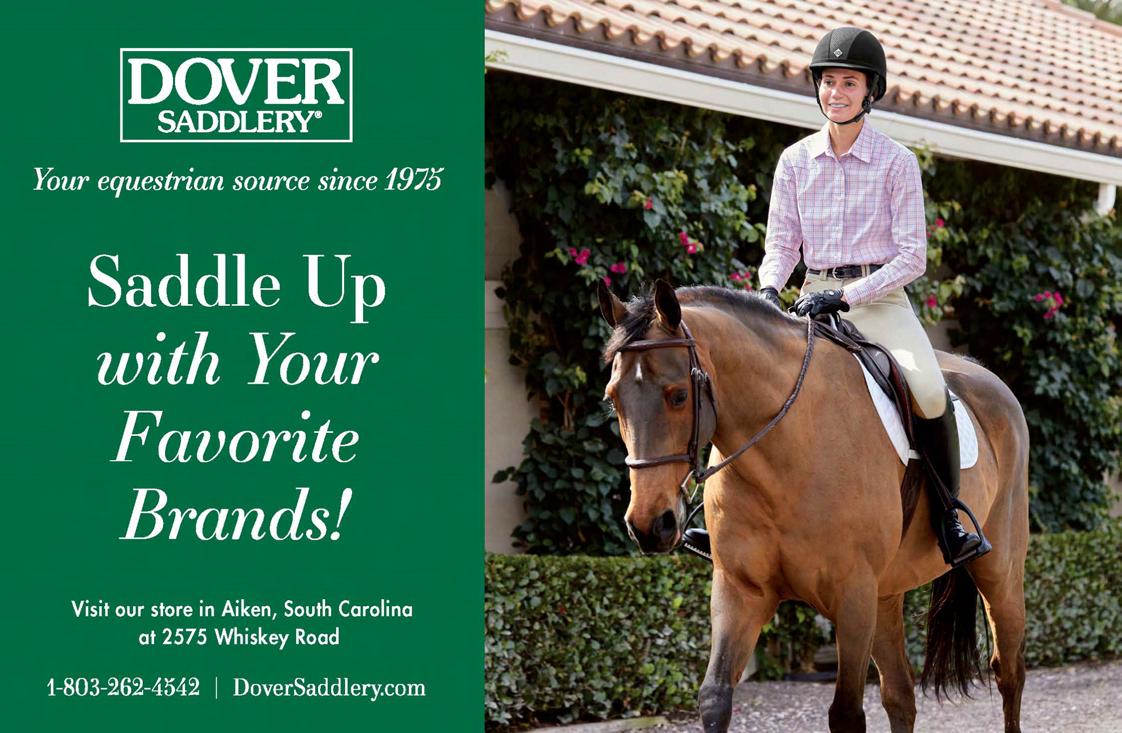
March 14 – 17 Stable View USEF/USHJA $50,000 Na�onal ‘A’ Rated Hunters & Level 4 Rated Jumpers ‘Winter Classic’ (pending USEF approval) 117 Stable Dr. Aiken, SC
March 25 Aiken Spring Steeplechase, Sat, 7 AM – 5 PM Aiken Steeplechase Racecourse, 2020 Richland Ave E Aiken, SC
March 31-April 2 The 107th Annual Aiken Horse Show in the Hitchcock Woods. Aiken, SC
April 1-June 11 New Bridge Polo Spring Schedule. 862 New Bridge Rd. Aiken SC
April 7 - 9 Stable View $60,000 FEI CCI-S 2/3/4* & USEF/USEA Horse Trials (T, M, P, I, A) 117 Stable Dr. Aiken, SC
April 11-14 Stable View USEF/USHJA $50,000 Na�onal ‘A’ Rated Hunters & Level 4 Rated Jumpers ‘Spring Classic’ (pending USEF approval) 117 Stable Dr. Aiken, SC
April 16-June 11 Aiken Polo Club Spring Schedule 420 Meade Ave. Aiken, SC
April 19-23 PSJ USEF Na�onal Aiken Spring Classic Masters Highfields Event Center 198 Gaston Rd. Aiken, SC
April 26-30 PSJ USEF Na�onal Aiken Spring Classic Finale Highfields Event Center 198 Gaston Rd. Aiken, SC

“It’s certainly possible for a trained horse to have a bad day, but as a general rule, they aren’t emo�onal beings like humans, so they tend to try to do their jobs,” says Sarah Reuss, VMD, DACVIM, Equine Technical Manager, Boehringer Ingelheim. “When horse owners no�ce uncharacteris�c behavior, especially on an ongoing basis, it’s best to document those behaviors and consult with a veterinarian.”
What might surprise horse owners is that equine stomach ulcers can be a potential root cause of difficult training sessions, resistance to work and poor performance.1,2 These ulcers can develop in as few as five days,3 so it’s possible that Saturday’s well-behaved horse can become a different animal by Wednesday. Other potential clinical signs of equine stomach ulcers include poor appetitite, poor body condition, rough hair coat, weight loss and in some cases, low-level colic.4

Equine stomach ulcers can only be definitively diagnosed by conducting a gastroscopy.5 During this procedure, a veterinarian uses an endoscope – a tube with a small camera – and places it up the nose, through the esophagus and into the stomach in the standing, sedated horse. The procedure allows the veterinarian to explore the stomach and if there are any ulcers, describe where they are and how severe they appear. The veterinarian will be looking for any thickening, reddening, erosions or ulcerations of the stomach.

There are two types of stomach ulcers, Dr. Reuss explains. “Squamous ulcers are the most common, and are found in the upper part of the stomach where they form when stomach acid contacts the unprotected lining. The other type of ulcers are found in the glandular area which includes the pylorus or outflow of the stomach. These glandular ulcers are due to a combination of acid and loss of normal protective mechanisms.”
Should the veterinarian discover ulcers, he or she will recommend treatment with GastroGard® (omeprazole), the only proven and FDA-approved ulcer treatment product. Ideally there should be another gastroscopy performed at the end of treatment to ensure the stomach is back to normal.
There are ways to potentially avoid ulcers from recurring. Dr. Reuss recommends continuing to consult with the veterinarian who knows your specific horse, but in general providing continuous access to roughage through grazing or hay nets and feeding grain in multiple small meals daily is best.
In horses that are subject to stressors such as training, showing, trailering, including to trail riding, the loss of a pasture buddy or a move to another barn, Dr. Reuss recommends asking the veterinarian about using UlcerGard® (omeprazole) to help prevent ulcers from occurring, particularly during times of stress.
For more information, go to https://bi-animalhealth.com/equine/gastric-health.
About Boehringer Ingelheim Animal Health USA
Boehringer Ingelheim Animal Health is working on first-in-class innovation for the prediction, prevention, and treatment of diseases in animals. For veterinarians, pet owners, producers, and governments in more than 150 countries, we offer a large and innovative portfolio of products and services to improve the health and well-being of companion animals and livestock.
As a global leader in the animal health industry and as part of the family-owned Boehringer Ingelheim, we take a long-term perspective. The lives of animals and humans are interconnected in deep and complex ways. We know that when animals are healthy, humans are healthier too. By using the synergies between our Animal Health and Human Pharma businesses and by delivering value through innovation, we enhance the health and well-being of both.
Boehringer Ingelheim Animal Health has deep roots in the U.S. From a start in St. Joseph, Missouri, more than 100 years ago, it has grown to encompass seven sites. Boehringer Ingelheim Animal Health’s portfolio contains widely used and well-respected vaccines, parasite-control products and therapeutics for pets, horses and livestock including NexGard®, Heartgard®, Pyramid® + Presponse®, VAXXITEK®, CircoFLEX® and Prascend®.
Learn more about Boehringer Ingelheim Animal Health USA at https://bi-animalhealth.com/.
ULCERGARD® and GASTROGARD® are registered trademarks of Boehringer Ingelheim Animal Health USA Inc. © 2022 Boehringer Ingelheim Animal Health USA Inc., Duluth, GA. All rights reserved. US-EQU-0127-2022
Poor performance at the show? Cranky when being cinched up? Uncharacteristic general crabbiness? It could be your horse is trying to tell you something.STOMACH ULCERS in a 17 year old Team Roping QH Gelding
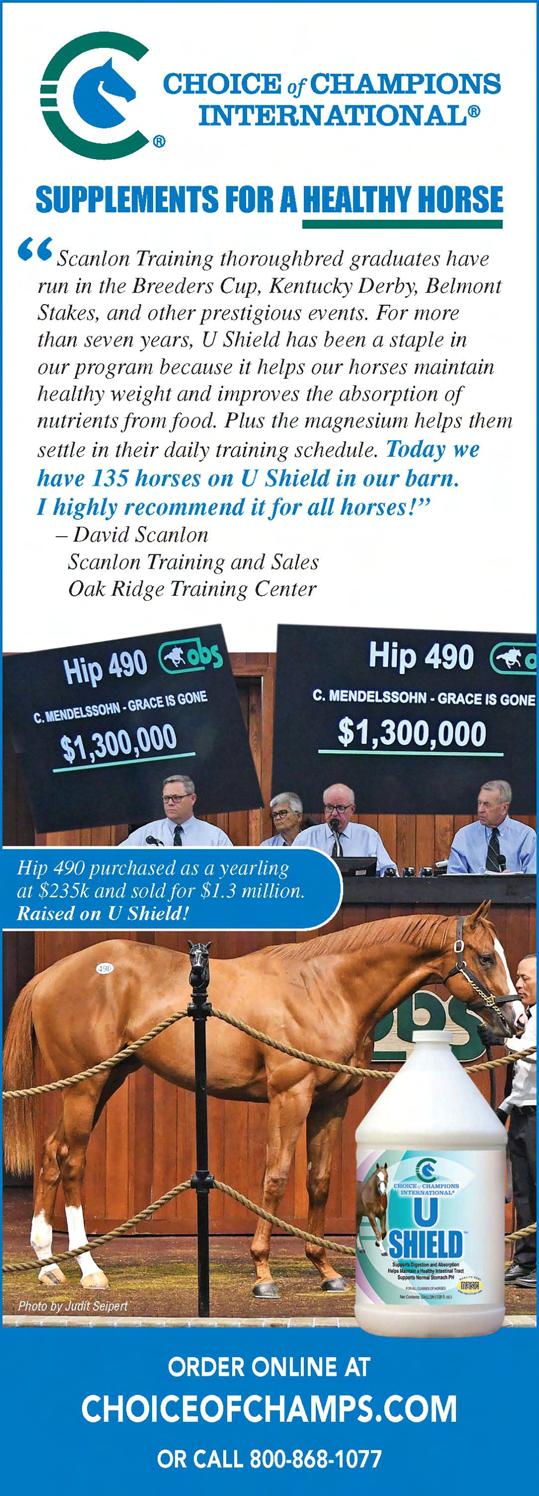

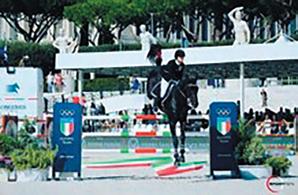
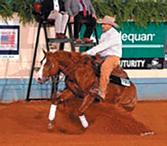


If your horse has received the gift of Equine Hanna Somatic Education® over the last few months he is ready to learn the next movements assisting his body in becoming more mobile. For those reading about Equine Hanna Somatics for the first time, please read previous articles on the Elite Equestrian website beginning with the May 2022 issue and/or on my website, www.HechterEquineMobility.com.
The Initial Pick-ups, Protraction and Retraction of your horse’s limbs assist in lengthening 12 muscles in each of your horse’s forelimbs and 18 muscles in each of his hindlimbs. This adds up to be 60 superficial and deep muscles directly impacted; many more muscles are indirectly affected by the use of these exercises.
Begin your EHS session by taking photos of your horse, both sides, front, back and down the spine. Use your photos to observe how your horse is standing. Palpate his muscles using a flat hand applying light pressure then releasing repeating as you begin just behind his ears gradually traveling over his entire body, noting where you sense tension or elasticity.
Picture two imaginary plumb lines -the first from the top of the shoulders to the ground and the second from the top of the hips of your horse. Ideally his legs will line up with this line, creating a “square” stance. Many horses do not naturally stand this way. With the legs that are forward of the plumb line begin by protracting these limbs. Start with retraction of the legs that are behind the plumb line. For the horse who stands fairly square you may choose either protraction or retraction for all four limbs, once the first set of movements is complete follow with the movement not completed.
Before asking your horse to extend and retract his limbs warm his muscles with Initial Pick-ups. For your safety while working with your horse follow these simple instructions.
Stand on the left side of your horse facing his tail. Envision your horse performing the exercise, mentally send the pictures to him. With a flat back bend at your hips, place your right leg slightly in front of your left leg that is placed slightly behind your hips as you invite your horse to lift his limbs. Reverse your stance when working on the right side.
Sometimes horse take a moment to fully weight their foot after an EHS movement. This mare rested her foot on her toe for three minutes before fully standing on it.
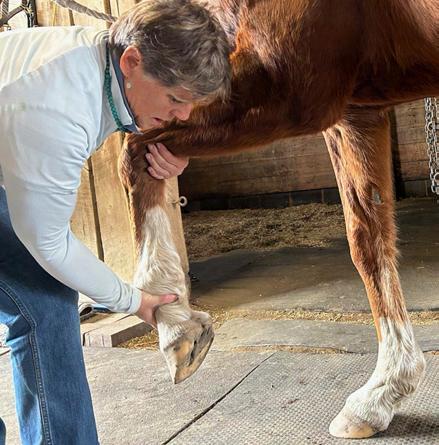
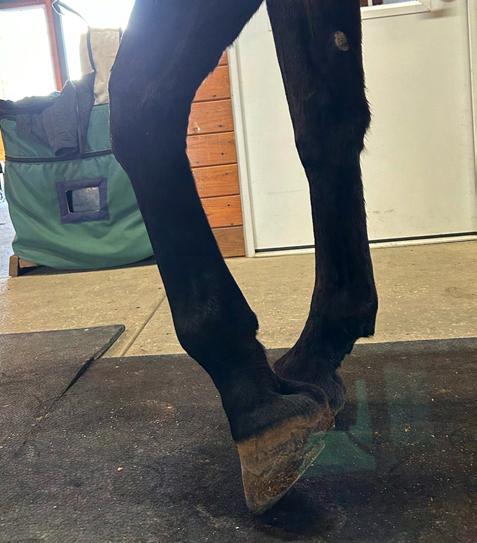
The new movements of your horse’s limb begin with an Initial Pick-up of all four legs. When protracting the limb gently guide it forward encouraging his foot to be ahead of his chest or further under his tummy. Often the leg does not come too far forward especially the first day, remain within your horse’s comfort level. When you sense resistance to the leg moving further, pause, then begin to slowly return the leg under your horse’s body with him placing his fully weighted foot back on the ground. Fore
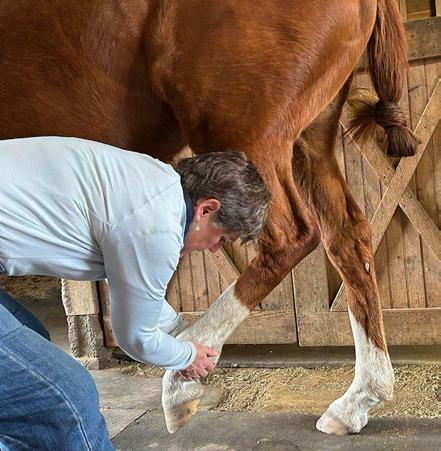
four limbs, take a new set of photos to compare. Palpate your horse’s body to compare the changes in loss of tension and more elasticity.
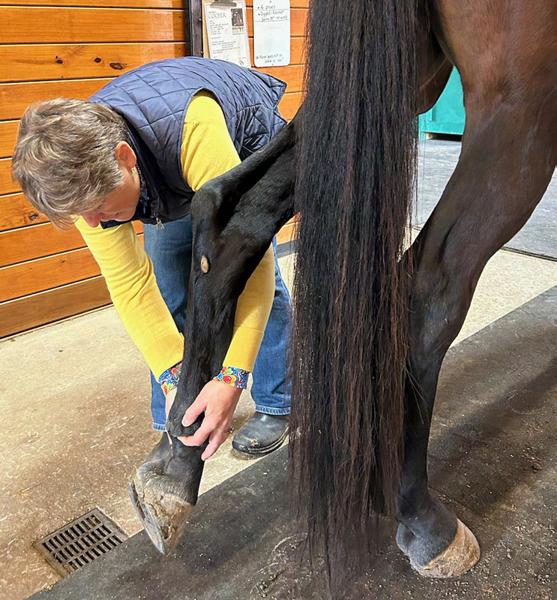
Trish Hechter grew up riding and working with her mother in Mary land who was renowned for working with “problem” horses. In the mid 90’s Trish earned her Reiki 1 and 2 cer�ficates becoming a Reiki Master in 2020.
A�er mee�ng Ryan Moschell, a Cer�fied Hanna Soma�cs Educator® (for humans), in 2015, Trish turned her focus to Equine Hanna Somat ics® and will be a Cer�fied Equine Hanna Soma�cs Educator in 2023. For more informa�on about Trish’s work and clinics educa�ng people how to improve their horse’s posture and mobility, please visit www. HechterEquineMobility.com.
Trish Hechter and Ryan Moschell, CHSE have created a partnership working with equestrians and their horses. Dates are available for their workshops and clinics in 2023.
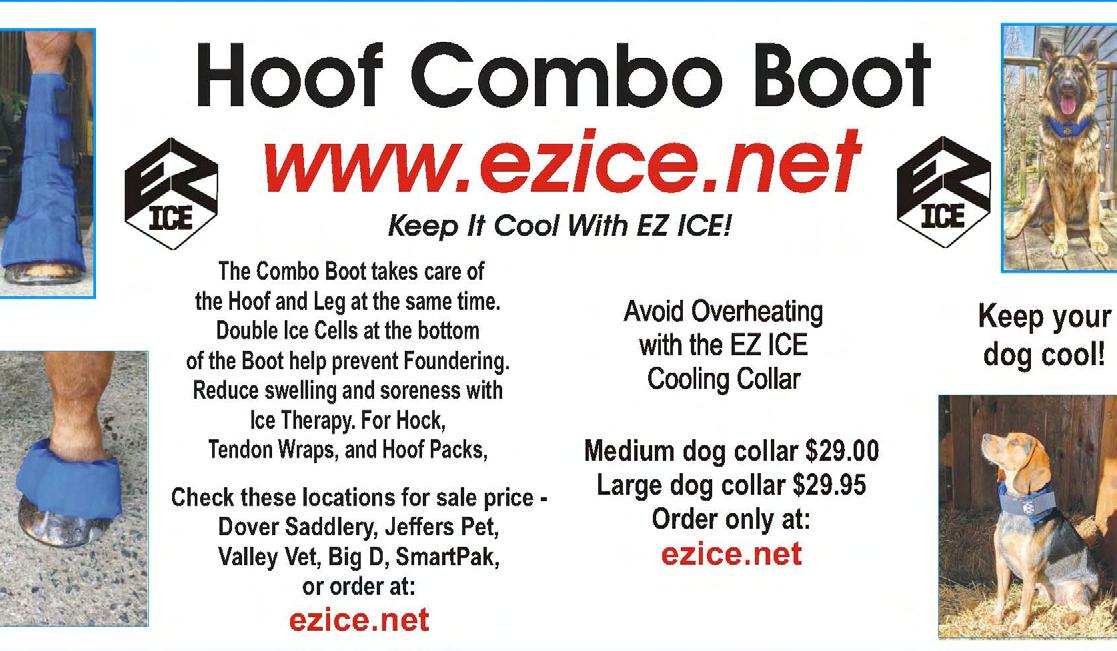
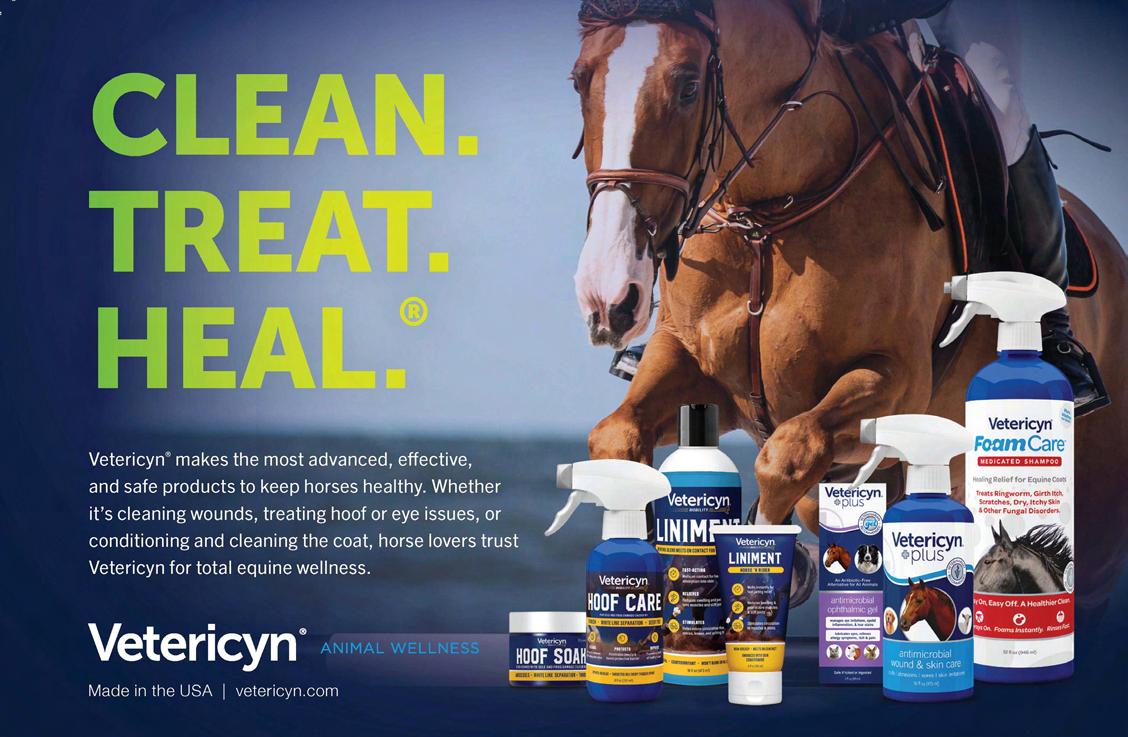
There may be times when your horse says, “Oh you want me to stretch,” moving further forward or back than may be ideal. As he moves into a stretch he may pull his limb back quickly and slap his foot to the ground. SAFELY, follow the movement with your hands as best as you can, breathing slowly to maintain a calm demeanor. Ask for a smaller movement during the subsequent lifts. Repeat a total of three to five times. EHS is about lengthening not stretching muscles.
Some horses who have particularly contracted muscles in their hind quarters will lift their limbs high, jerking forward and back leading people to believe this is bad behavior. Mostly, it is an example of Sensory Motor Amnesia. His muscles have forgotten how to move smoothly due to contractions in his body, it can cause discomfort. When this happens allow your horse’s leg to quiet while your hands safely and gently follow the action, remaining connected to his leg, before asking it to be gently guided.
When retracting your horse’s limbs, the leg moves in a backward direction. Follow the same practices as when you are protracting the limbs while gently guiding the foot and limb back.
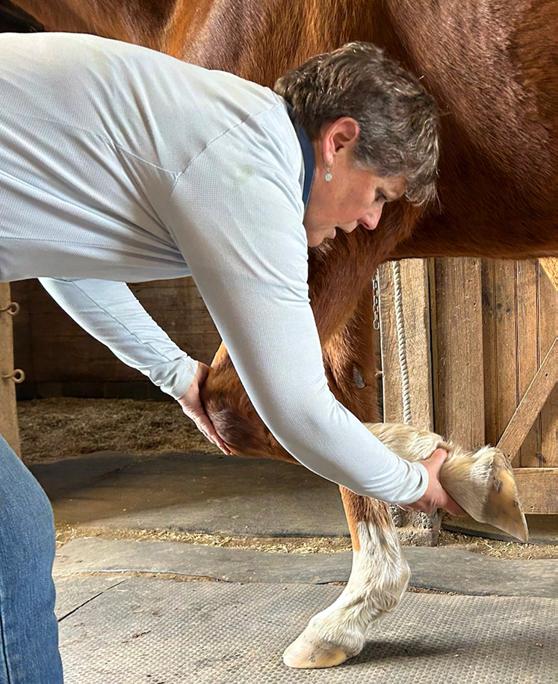
Protraction and Retraction movements balance the muscles being worked within your horse’s body, they are two segments of a unit. When all four limbs have completed one of the movements, protraction or retraction, finish with the component not done first.

Once you have completed the three movements with all four limbs, take a new set of photos to compare. Palpate your horse’s body to compare the changes in loss of tension and more elasticity.
Trish Hechter grew up riding and working with her mother in Maryland who was renowned for working with “problem” horses. In the mid 90’s Trish earned her Reiki 1 and 2 cer�ficates becoming a Reiki Master in 2020.
A�er mee�ng Ryan Moschell, a Cer�fied Hanna Soma�cs Educator® (for humans), in 2015, Trish turned her focus to Equine Hanna Somatics® and will be a Cer�fied Equine Hanna Soma�cs Educator in 2023. For more informa�on about Trish’s work and clinics educa�ng people how to improve their horse’s posture and mobility, please visit www. HechterEquineMobility.com.
Trish Hechter and Ryan Moschell, CHSE have created a partnership working with equestrians and their horses. Dates are available for their workshops and clinics in 2023.
To contact Ryan Moschell and learn more about his work, please visit, www.GetOutOfShape.com. To purchase a video introduc�on of EHS please visit, www.HechterEquineMobility.com/video.
To learn more about Equine Hanna Soma�cs, and to find an equine educator near you, please visit www.EquineHannaSoma�cs.org.
Dirk works to ac�vate and enhance the body’s own way of healing itself. Manual techniques are applied to help restore op�mal func�on of the musculoskeletal system. By the use of manipula�on and adjustments, stretches and releases, and mobiliza�on techniques, it is an extremely beneficial non-invasive therapy for horses.
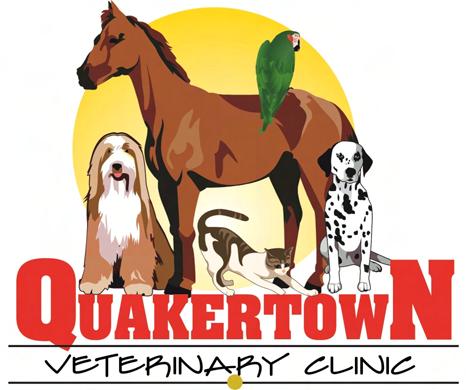
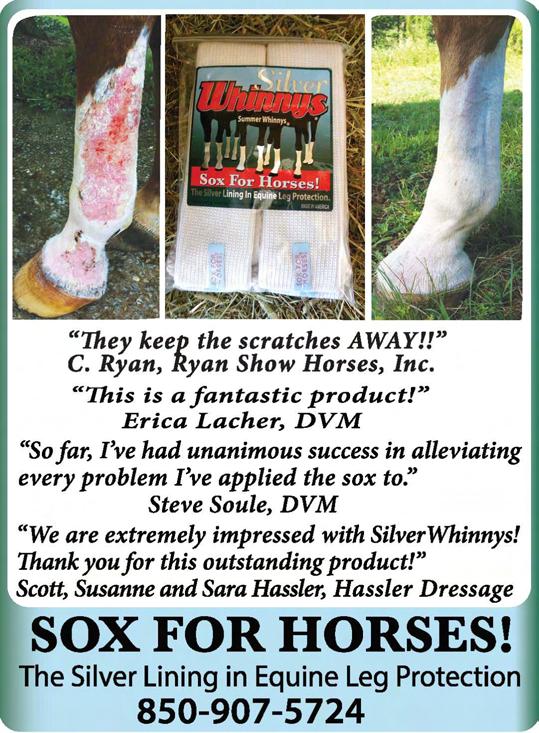
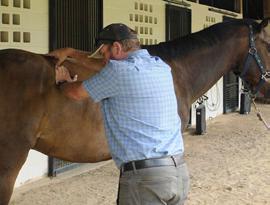
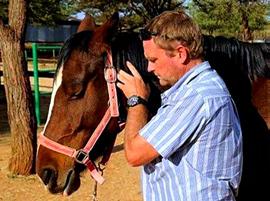
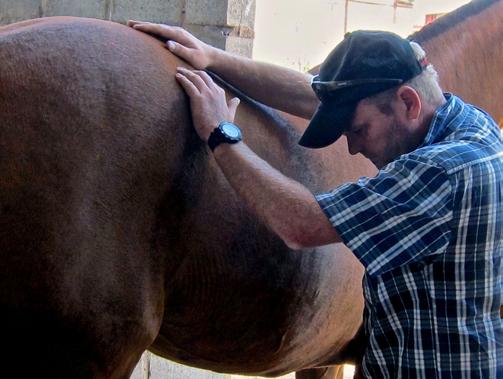
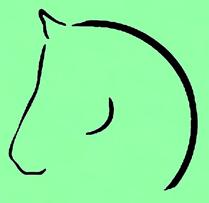
Rider and trainer Chris�an Baier has been educated in horses and equita�on all over the world. In his work to develop an interna�onal rider and trainer educa�on and cer�fica�on system, he realized the equestrian lexicon lacked a prac�cal reference that brought all the classical “arena tracks”—pa�erns and figures used in training the horse in a schooling area—together in a simple way that is easy to understand. The arena tracks guide the rider in how to safely work the horse within a specific space in an organized way. They are also an integral tool in the conscien�ous trainer’s development of the horse’s body and condi�oning. For the instructor, arena tracks are an important tool for communica�ng with the student.
Ul�mately, these classical tracks are at the founda�on of everything we do in an arena with a horse, from the beginner rider just off the longe line, learning basic naviga�on around the ring, to the most experienced rider working a horse at the highest level of interna�onal compe��on. Even jumping courses consist of a combina�on (or varia�on) of arena tracks strung together from start to finish marker!
Here’s a sample exercise from the newly published Arena Tracks by Chris�an Baier.
Canter Adjustability Between Poles focuses on changing stride length at the canter. The horse and rider alternate between riding three short strides and three long strides on a curved line with a long side in between. Should the horse and rider need more time for the change of stride length, there is an option to use the circle in the center.
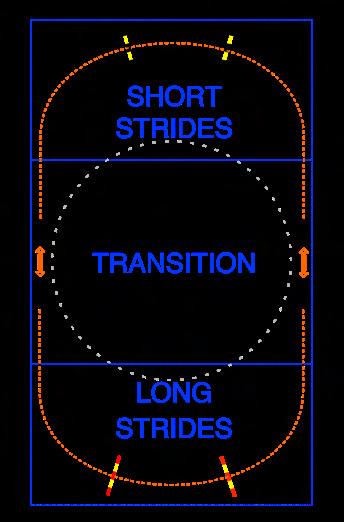
Purpose: Change stride length with precision for the exact number of strides desired while maintaining a relaxed and balanced horse.
An exercise that can be set in most arenas, this one shows the distance between the poles for the three short strides set at 9 meters (30 feet) and the distance between the poles for the three long strides set at 11 meters (36 feet). These distances can be adjusted to suit different arena sizes and types of horses.
Arena Tracks is published by Trafalgar Square Books / HorseandRiderBooks.com h�ps://www.horseandriderbooks.com/store/arena-tracks.html
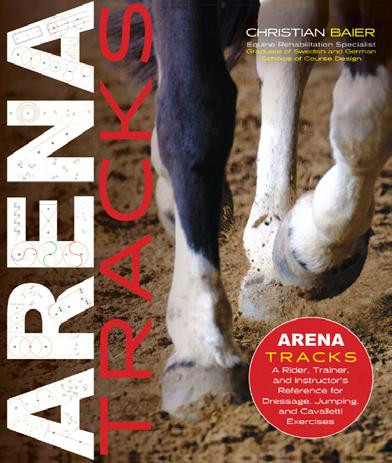
is a profound book-and-card set that invites readers to explore our sacred connection with horses in an entirely new way. The newly revised and expanded edition of the timeless deck from Linda Kohanov and Kim McElroy features two new cards along with a completely redesigned and updated guidebook.
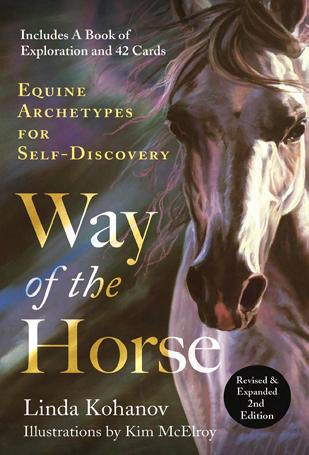
Forty-two beautifully designed cards introduce readers to the hidden world of equine wisdom. Each chapter explores key concepts surrounding the corresponding cards, leading readers on a journey of discovery and exploration. Cards like The Keeper of Mysteries and The Silent Way capture the unique wisdom of the equine spirit. The book reveals the practical meaning behind horse behavior as well as the powerful symbolic and spiritual significance of these amazing animals. Sure to interest anyone fascinated by horses, WAY OF THE HORSE offers profound insights into the human-equine relationship.
LINDA KOHANOV speaks and teaches interna�onally. She established Eponaquest Worldwide to explore the healing poten�al of working with horses and to offer programs on everything from emo�onal and social intelligence, leadership, stress reduc�on, and paren�ng to consensus building and mindfulness. She lives near Tucson, Arizona.
KIM MCELROY is known for her exquisite equine artwork, which reveals the horse’s powerful spiritual and emo�onal presence. She lives in Kingston, Washington.
To Order- www.stmar�ns.com
Currently the whole world is in a clear trend to leave tradi�onal ways and values behind. Our beloved equestrian sport, therefore, is also coming under scru�ny by the masses. While decision makers, lobbyists and government officials debate whether Equestrian sports and the keeping of horses is ethical considering the new ever stricter animal welfare laws and the pressure equestrian facili�es might be on the climate.
Therefore, it is no luxury to improve equine welfare wherever we can, to prove that equestrian sports and the keeping of horses can be ethical and place equine welfare first.
In my more than 30 years of working with horses, I worked the last two decades almost solemnly professionally with rehab horses who had been injured, traumatized or both.
Incredibly successful so, I might add. Many ‘last resorts’ or ‘incurable’ horses found their way back to health and happiness in my hands. What I learned from this massive amount of experience is that there are very simple ways to improve equine welfare, when at the same time, have horses perform better for their humans. The answer is what I call ‘Dressage in hand’. Dressage in hand is a specie appropriate way of training horses which can help them to heal injuries, traumas, or when started with at an appropriate age, make for fantastic lifelong healthy and content leisure and sport horses.
The key here is that horses speak through body language. Almost every horse owner knows that. But what most do not know is that the movements we call ‘dressage movements’ are in fact the language of horses with which they communicate with each other and… their humans. In fact, horses never make random movements, they are always communicating something to someone. Horses also cannot lie; their body shows exactly as the mind thinks or feels. How then does dressage in hand help equine welfare and what is it exactly? Dressage in hand, is literally what it says: You walk next to your horse with the reins in your hand and you ask for all the dressage movements you normally ask under saddle, but now via body language and rein aids. Although this is new to many riders, it is a very ancient practice to prepare and train horses, since thousands of years. It is for instance still practiced in institutions such as the Spanish riding School of Vienna to keep an ancient European practice alive. I, however, have mostly developed and taught it to horse owners all over the world, to improve horse welfare and help horses perform better at what is possible for each horse specifically. Nowadays, most horses have problems of some
Josepha GuillaumeIf you would like to learn more on promo�ng equine welfare through dressage in hand, please have a look at my book and find a wealth of easily applicable knowledge. www.dressageinhand.com
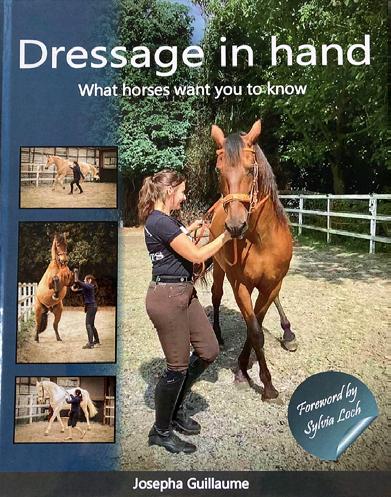
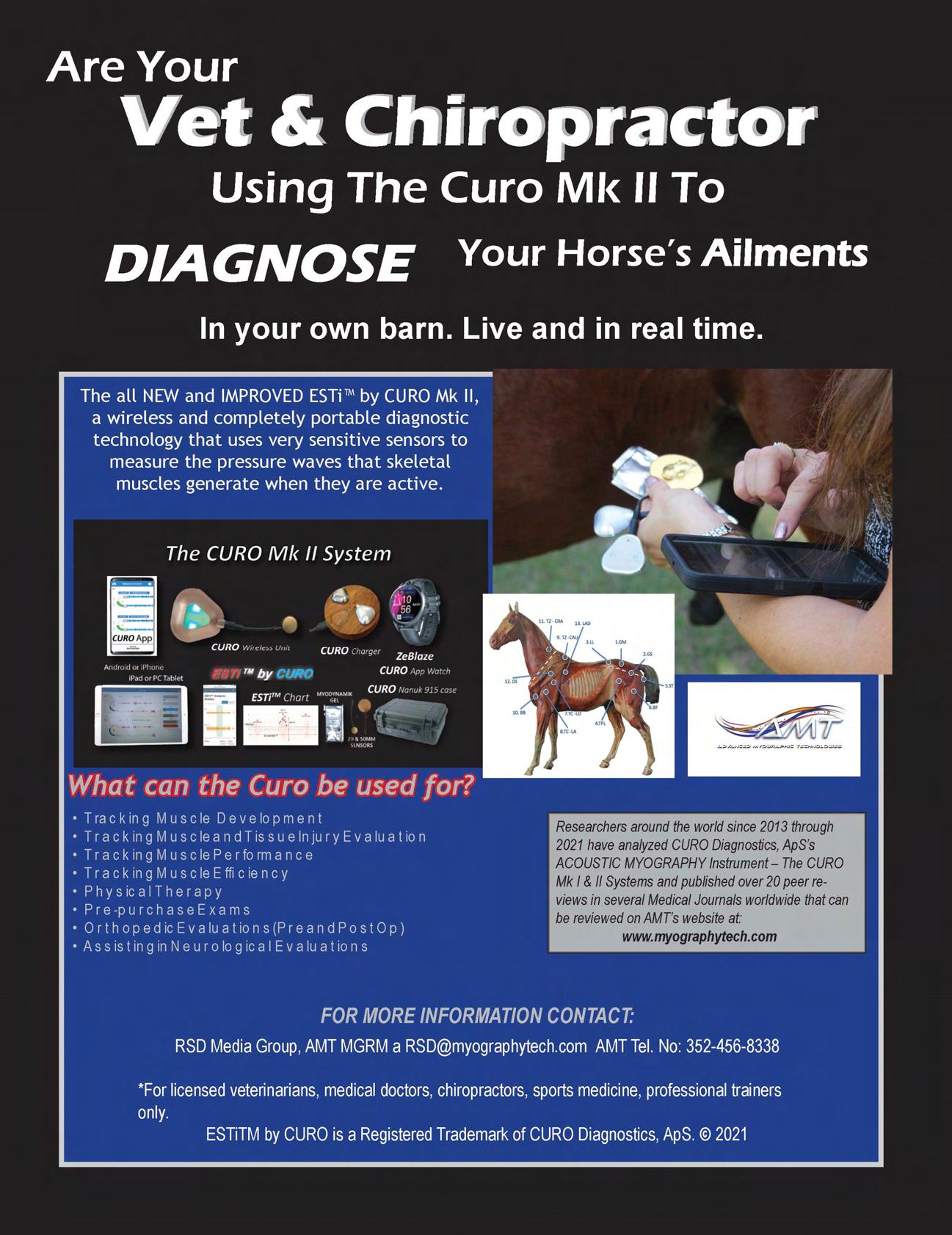
kind, either mentally, physically, or both. These problems mostly stem from too early, and forceful training. Too early and wrong weaning, insufficient herd socializing but also factors such as nutrition, lifestyle, hoof care, saddle fitting (or lack thereof) all play important factors in whether a horse stays content, healthy and able to perform comfortably. Lastly, breeding factors such as general health, hoof quality and human minded character are not always as considered as they should be, which has many horses born with problems, before any human ever touches them.
For all these horses, dressage in hand can help. Asking the movements from the ground can prepare the young horse’s body for carrying humans in a healthy manner without ever any resistance or even one buck when backing starts. It can help rehabilitate injured and traumatized horses, it can keep the senior horse fit and engaged or it can be a great sport to do with unridden horses as there are competitions now you can enter, in hand. Dressage in hand improves the mental and physical performance of any sport horse, which is a good tool to have in your toolkit. We must put the horse first and focus more on preventing injury at a far too young age, as is alas very common within equestrian sports. Next to understanding the equine body language it is also of vital importance to recognize discomfort and pain. Often horses are disciplined as being naughty and unwilling, while they show clear pain signals. Alas, these signals are often overlooked. Therefore, researchers have drafted an ‘equine pain face scale’ with which you can more easily tell, if a horse is in pain. Horses are prey animals, who therefore suffer in silence. Catching pain signals early prevents (lasting) injury due to overtraining and promotes safety for horse and rider, as horses never have to get to the stadium where they can no longer endure pain and explode, causing dangerous situations.
Available worldwide via lulu.com, amazon, etc.
Hardcover and paperback.
Currently the whole world is in a clear trend to leave tradi�onal ways and values behind. Our beloved equestrian sport, therefore, is also coming under scru�ny by the masses. While decision makers, lobbyists and government officials debate whether Equestrian sports and the keeping of horses is ethical considering the new ever stricter animal welfare laws and the pressure equestrian facili�es might be on the climate.
Therefore, it is no luxury to improve equine welfare wherever we can, to prove that equestrian sports and the keeping of horses can be ethical and place equine welfare first.
In my more than 30 years of working with horses, I worked the last two decades almost solemnly professionally with rehab horses who had been injured, traumatized or both. Incredibly successful so, I might add. Many ‘last resorts’ or ‘incurable’ horses found their way back to health and happiness in my hands. What I learned from this massive amount of experience is that there are very simple ways to improve equine welfare, when at the same time, have horses perform better for their humans. The answer is what I call ‘Dressage in hand’. Dressage in hand is a specie appropriate way of training horses which can help them to heal injuries, traumas, or when started with at an appropriate age, make for fantastic lifelong healthy and content leisure and sport horses.
The key here is that horses speak through body language. Almost every horse owner knows that. But what most do not know is that the movements we call ‘dressage movements’ are in fact the language of horses with which they communicate with each other and… their humans. In fact, horses never make random movements, they are always communicating something to someone. Horses also cannot lie; their body shows exactly as the mind thinks or feels. How then does dressage in hand help equine welfare and what is it exactly? Dressage in hand, is literally what it says: You walk next to your horse with the reins in your hand and you ask for all the dressage movements you normally ask under saddle, but now via body language and rein aids. Although this is new to many riders, it is a very ancient practice to prepare and train horses, since thousands of years. It is for instance still practiced in institutions such as the Spanish riding School of Vienna to keep an ancient European practice alive. I, however, have mostly developed and taught it to horse owners all over the world, to improve horse welfare and help horses perform better at what is possible for each horse specifically. Nowadays, most horses have problems of some
Josepha GuillaumeIf you would like to learn more on promo�ng equine welfare through dressage in hand, please have a look at my book and find a wealth of easily applicable knowledge. www.dressageinhand.com

kind, either mentally, physically, or both. These problems mostly stem from too early, and forceful training. Too early and wrong weaning, insufficient herd socializing but also factors such as nutrition, lifestyle, hoof care, saddle fitting (or lack thereof) all play important factors in whether a horse stays content, healthy and able to perform comfortably. Lastly, breeding factors such as general health, hoof quality and human minded character are not always as considered as they should be, which has many horses born with problems, before any human ever touches them.
For all these horses, dressage in hand can help. Asking the movements from the ground can prepare the young horse’s body for carrying humans in a healthy manner without ever any resistance or even one buck when backing starts. It can help rehabilitate injured and traumatized horses, it can keep the senior horse fit and engaged or it can be a great sport to do with unridden horses as there are competitions now you can enter, in hand. Dressage in hand improves the mental and physical performance of any sport horse, which is a good tool to have in your toolkit. We must put the horse first and focus more on preventing injury at a far too young age, as is alas very common within equestrian sports. Next to understanding the equine body language it is also of vital importance to recognize discomfort and pain. Often horses are disciplined as being naughty and unwilling, while they show clear pain signals. Alas, these signals are often overlooked. Therefore, researchers have drafted an ‘equine pain face scale’ with which you can more easily tell, if a horse is in pain. Horses are prey animals, who therefore suffer in silence. Catching pain signals early prevents (lasting) injury due to overtraining and promotes safety for horse and rider, as horses never have to get to the stadium where they can no longer endure pain and explode, causing dangerous situations.

How important is it to make a statement at the beginning and end of my freestyle? How do I do that?
First and final statements (or “impressions” as I like to call them) can help make or break a freestyle. They are the book ends of the story, the parts of a freestyle the audience and judges will remember most. First impressions (i.e. your entrance music) in a freestyle are not at all dissimilar to mee�ng someone for the first �me. It sets the tone and gives an inkling for who you are as a pair and what story you will tell. Will it be nostalgic? Cheerful? Emo�ve?
Final impressions (i.e. your final 30 seconds of music) hammer home the story. The music should reiterate and double down on the story you are wishing to tell. And this music, combined with choreography that highlights you both as a pair should be a top highlight of the freestyle. Awe the crowd and the judges at the end.
When thinking about first and final impressions, big music that has a “theme”, that sets the tone, and showcases the heart of your story. This will be different for every rider, but no less important for each!
Send
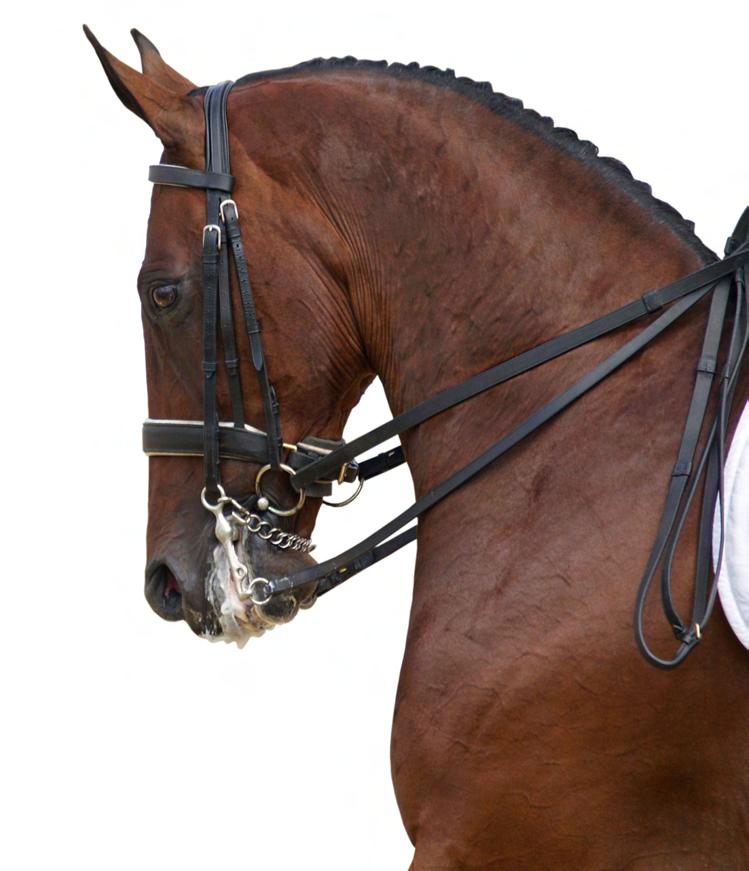
MaryBeth Walker riding aside in the first Queens class at side saddle USET in 2018. She was portraying Mary Queen of Scots and her husband Arthur was portraying her husband Lord Darnley. She was mounted on her friesian mare Bethje Star Sport. Her costume was a reproduction of the type Mary Queen of Scots would have worn including a matching royal blue headpiece. They won the class and went on the compete in the Royal Windsor Virtual Show in Autumn 2020. She was the only non British finalist in the top ten. She won the side saddle costume class and also came in third in the entire class.

Carla Peetros at a horse show in a sidesaddle riding on the offside. Offside sidesaddles have the pommels on the right side of the saddle versus the left. While rare, some riders prefer to ride on the offside.
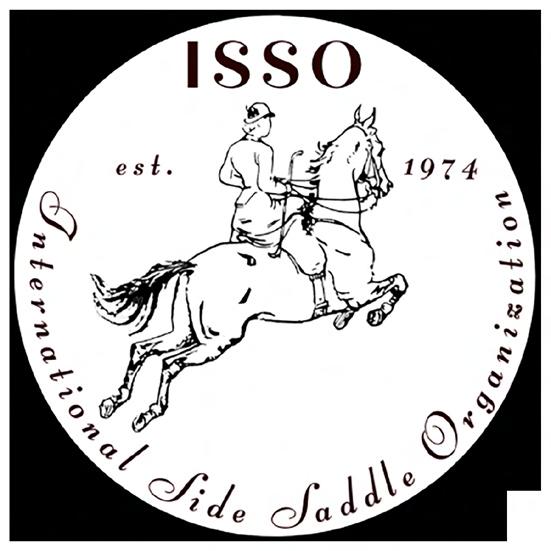
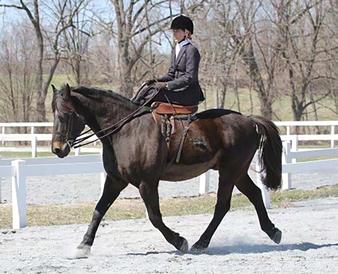
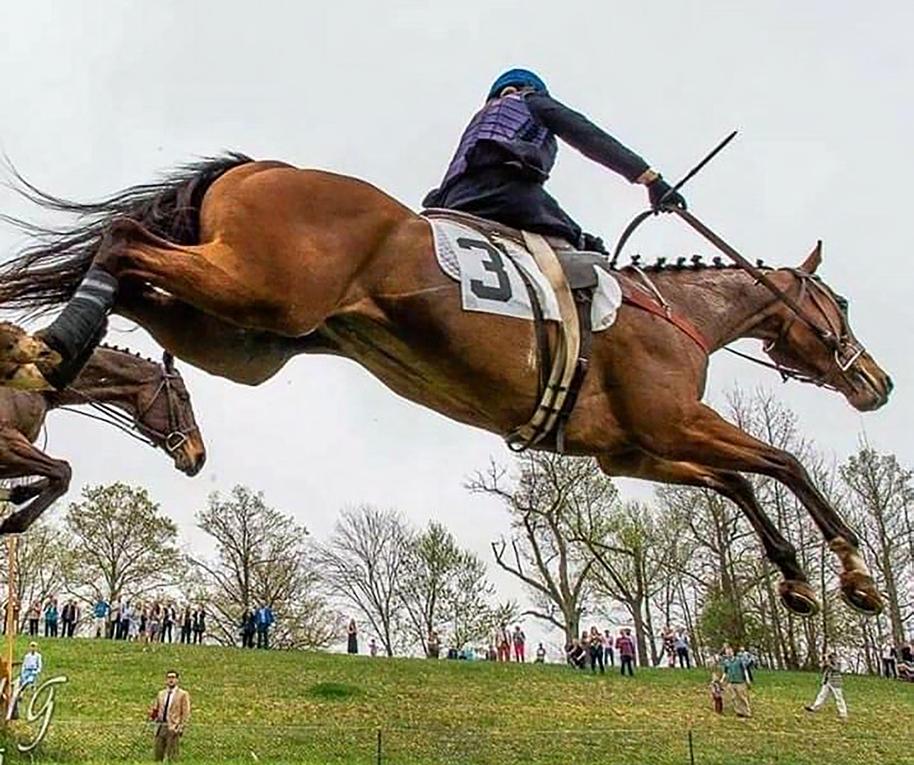
Savannah Holly rides aside in an English habit, and at the 2022 Idaho Horse Expo, represented the English discipline while her friend, Gali, represented the Charra discipline. Savannah Holly rode with all the adults during demonstrations.


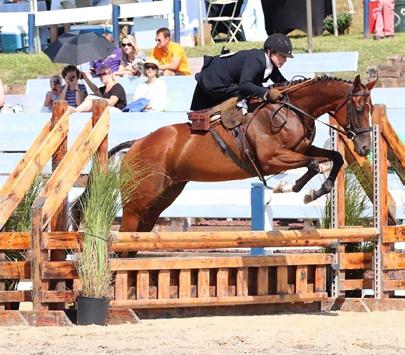
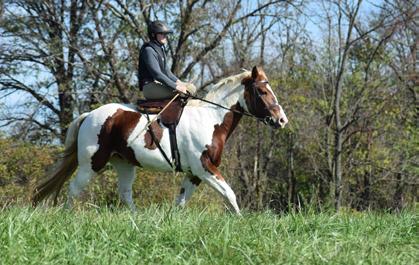
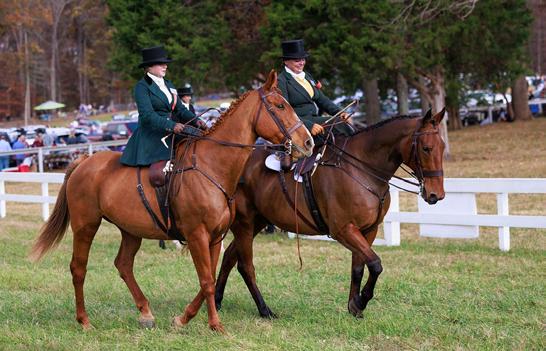
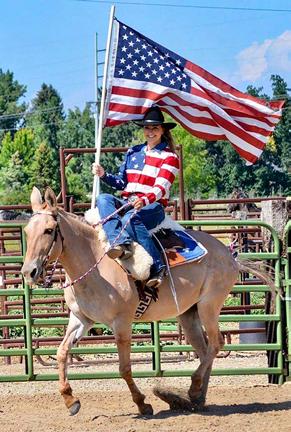
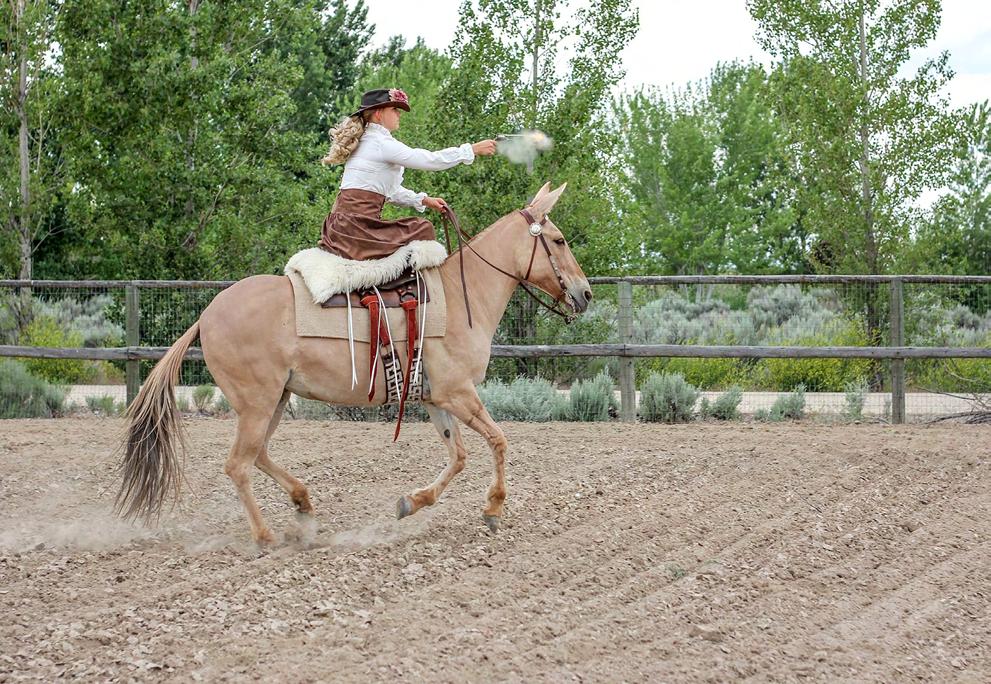

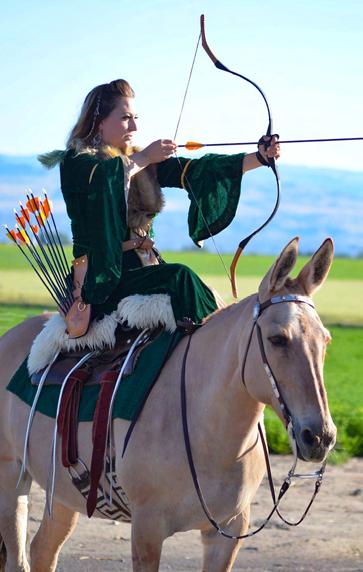



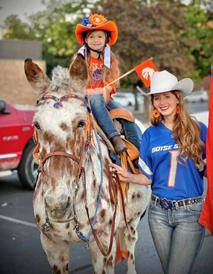


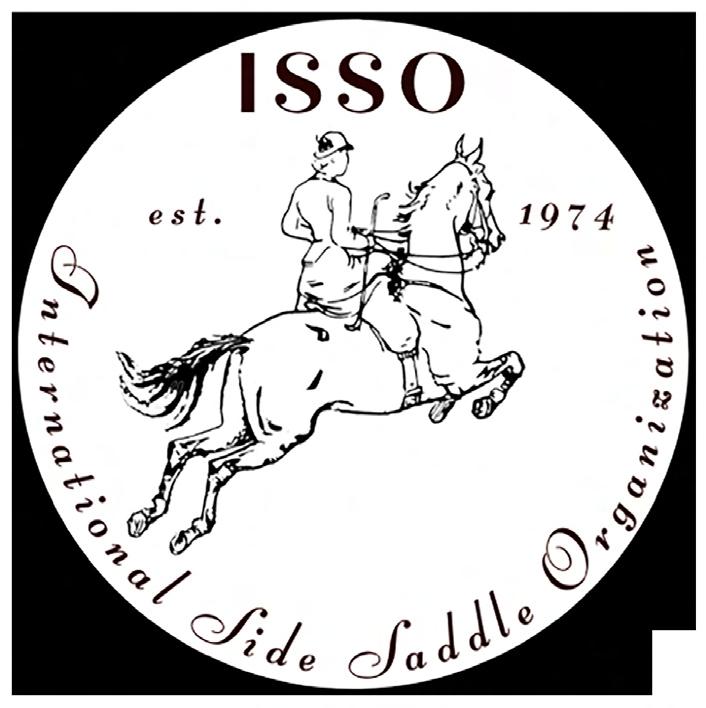
Accredited RWYM coach, Stephany Fish Crossman reviews a rider from a submi�ed photo to help the team improve their ride!
This month we are working with a deligh�ul young lady named Carissa, who came to a clinic with her mom in O’Steen Florida. Carissa is a hunter rider, and enjoys riding her trusty horse, Gracie. One of the chief complaints I got when I asked her what was difficult to do with Gracie was the le� lead canter; she rarely got it, and it was difficult to maintain when she did get it. We dug right in!
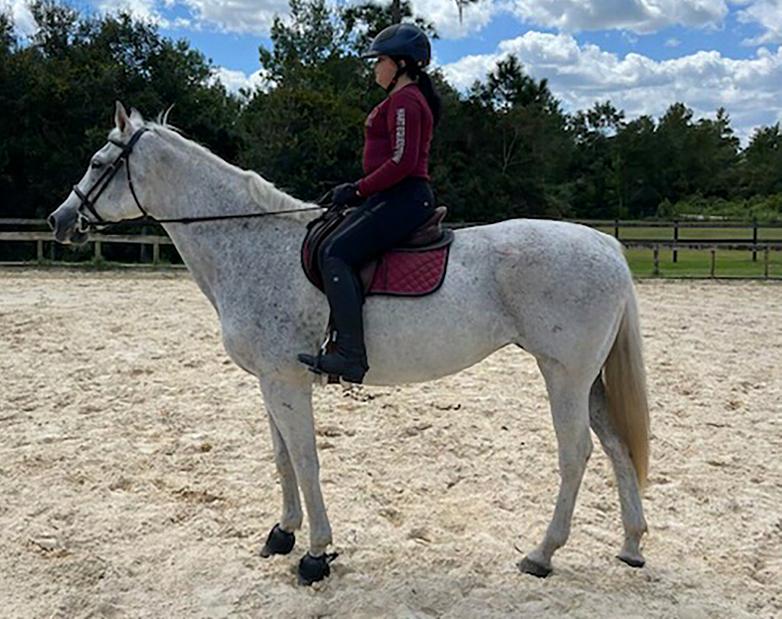
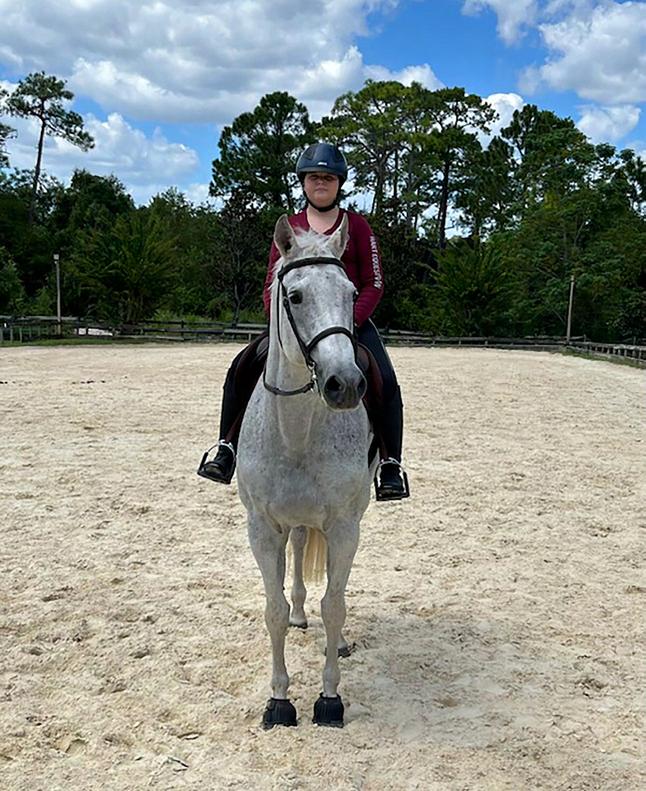
I started by looking at Carissa from the front, the left and the right. From the front, you can see that there is quite a discrepancy between her right foot and her left. This was also visible from the back, but not as much in the left and right views, as you can see from the photos. This is why it is important to look at a rider from all sides when assessing evenness and balance.
Often, if we eyeball the stirrups to determine evenness, we make the mistake of not checking to see where the saddle is on the horse’s back. I go behind the horse to see – does the gullet of the saddle line up over the horse’s spine? If not, we make that adjustment FIRST! Then I go to the stirrups themselves, and measure them against the bottom of the saddle flap. Why this way and not just counting holes, or measuring it against my arm? Leather stretches, and so the holes may not be even anymore, and how do you know that your arms are even?!? When we measure the stirrup against the bottom of the saddle, it always gives us a true reading, even when the saddle is slightly off center on the horse’s back.
In this case, the stirrups WERE even, but they were a bit too long – in the Before pics, you can see that Carissa’s knee doesn’t quite make it to the thigh block at the front of the saddle. I raised the stirrups 2 holes each, giving Carissa the feel of her thigh meeting the block in front all the time. In all cases, but especially when jumping, you want to give the joints of the leg – the ankle, the knee and the hip – the ability to bend and flex. When the stirrups are too long, one or more joints is too busy locking onto the horse to allow the rider to have a smooth ride. By shortening the stirrups, we create bend at each joint, therefore allowing the joints to flex and the muscles in between to hold the rider in place.
What about the picture from the front, you ask? How could she be so uneven if her stirrups were the same? This is an example of a rider pulling the saddle to one side of the horse with their body. It may come from an uneven weight in the foot, or uneven attachment of the thighs; some riders compensate for this by throwing their shoulders to the high side, trying to incorrectly balance themselves.
Along with her left/right imbalance, notice that if you look at Carissa from the side, you can see that her feet are well out in front of her. Another basic tenet of rider biomechanics is this: we want to put the rider in a position that if I were to magically pull the horse out from underneath them, they would land on their feet. Looking at our rider from this perspective, you can see that she would clearly land on her backside.
So, steps to fix our friend Carissa, so she could go canter left? We worked as follows:
• As mentioned, we shortened the stirrups to create better bend in the leg joints.
• Bringing the saddle back to the center of the horse’s back, I asked the rider to maintain this positioning by rotating her thighs in, so that they were flatter against the saddle, and taught her how to engage all 4 sides of her thighs equally right and left. Note that the Left side had a significantly harder time doing this!
• Aligned the rider so that she was closer to a shoulder/ front hip point/ankle line up
• Engaged the core muscles, so that she was more solid in the front to balance and support her back muscles, and to stay stable on top of her new leg position.
• Asked Carissa to lighten her feet, so that more of her balance was in her thighs and less in her feet – we went for a 50/50 balance between the feet and thighs.
• As finding the more attached left side was a really big challenge, we talked about Carissa feeling like she was falling off the right side of the saddle, or to think about her right butt cheek hanging off the saddle.
Now we must put our position into action! The “hanging off the right side” was a proprioception trick – because hanging off the left side feels like “home”, I asked Carissa to make the same mistake the other way. This got her closer to center and allowed the horse to travel forward with more ease. Over time she could overdo it, but that is why following up is always a good idea. When we went to trot the tendency to fall left became more apparent, so we REALLY overdid the “falling right”, for some pretty nice results! Gracie can be a bit sticky sometimes, and we got to see a much easier trot from her that day.
For the final piece, we went to the canter – and got left lead! It was a bit of a struggle, as the tendency to fall into our normal body habit is strong. Carissa hung in there like a champ, and gave it her best effort – each time she cantered left it got a little easier and a little easier. Gracie gave a few humpy strides – “new” feels odd to horses, too!
To sum it all up, remember two things: first, always check your balance left and right – if you see more shoulder one way than the other, or if one knee is lower on the saddle than the other, you may have a left/right balance issue! Our horses try to tell us this – when one lead is significantly harder to get than the other, or if you always land on one lead after a jump, you probably have a left/right balance issue! Second, make sure that YOU are in charge of your balance at all times in the saddle. If someone takes a picture of you from the side, ask yourself if you would land face first, bottom first, or on your feet if your horse was magically removed!
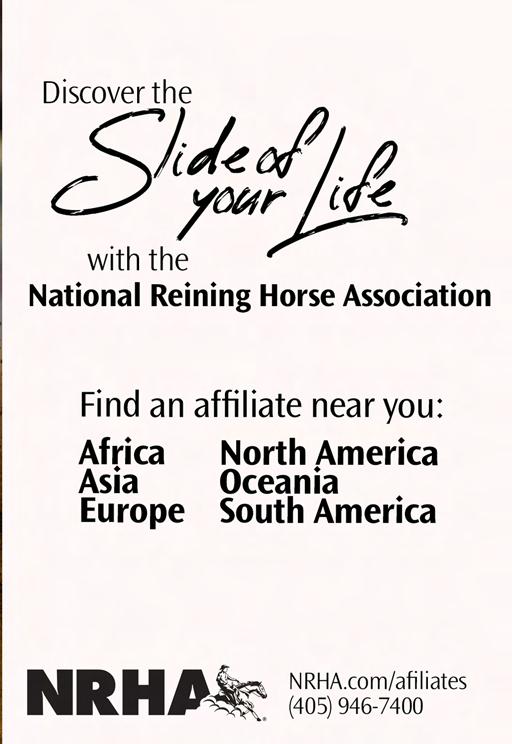
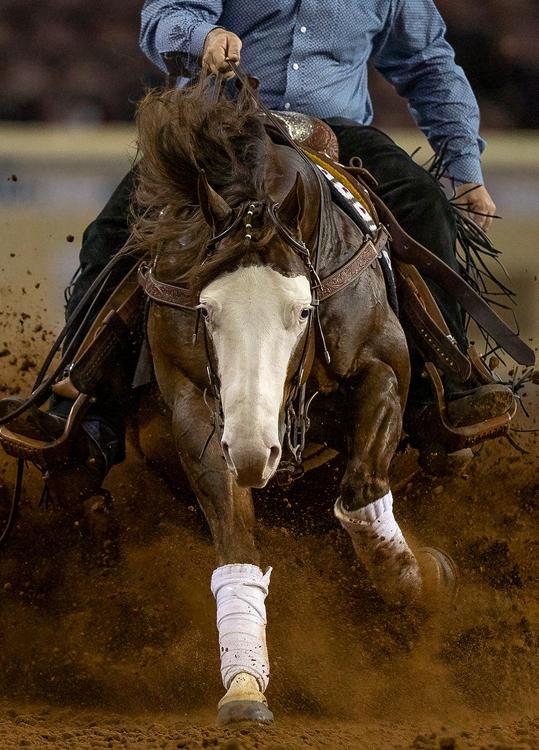



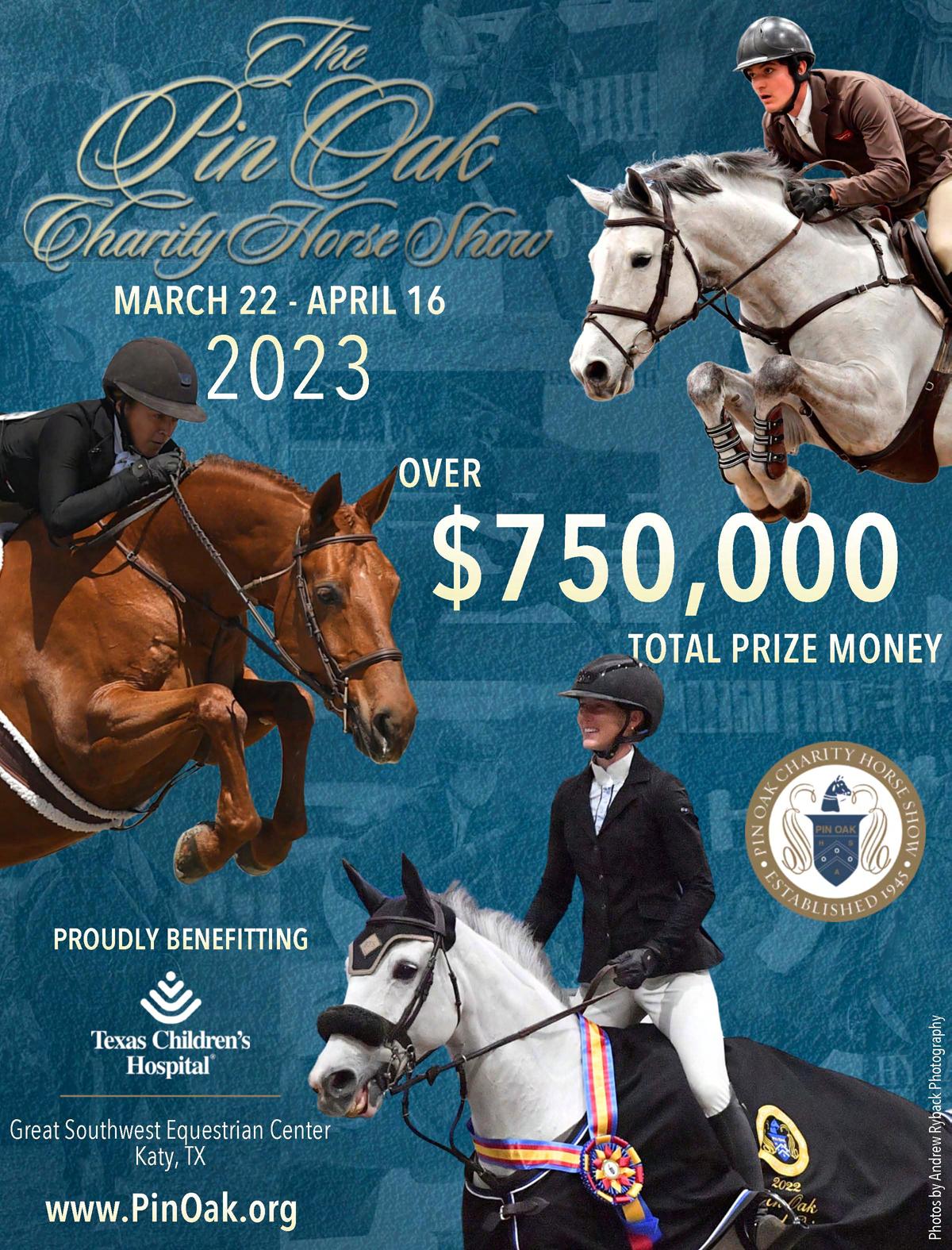
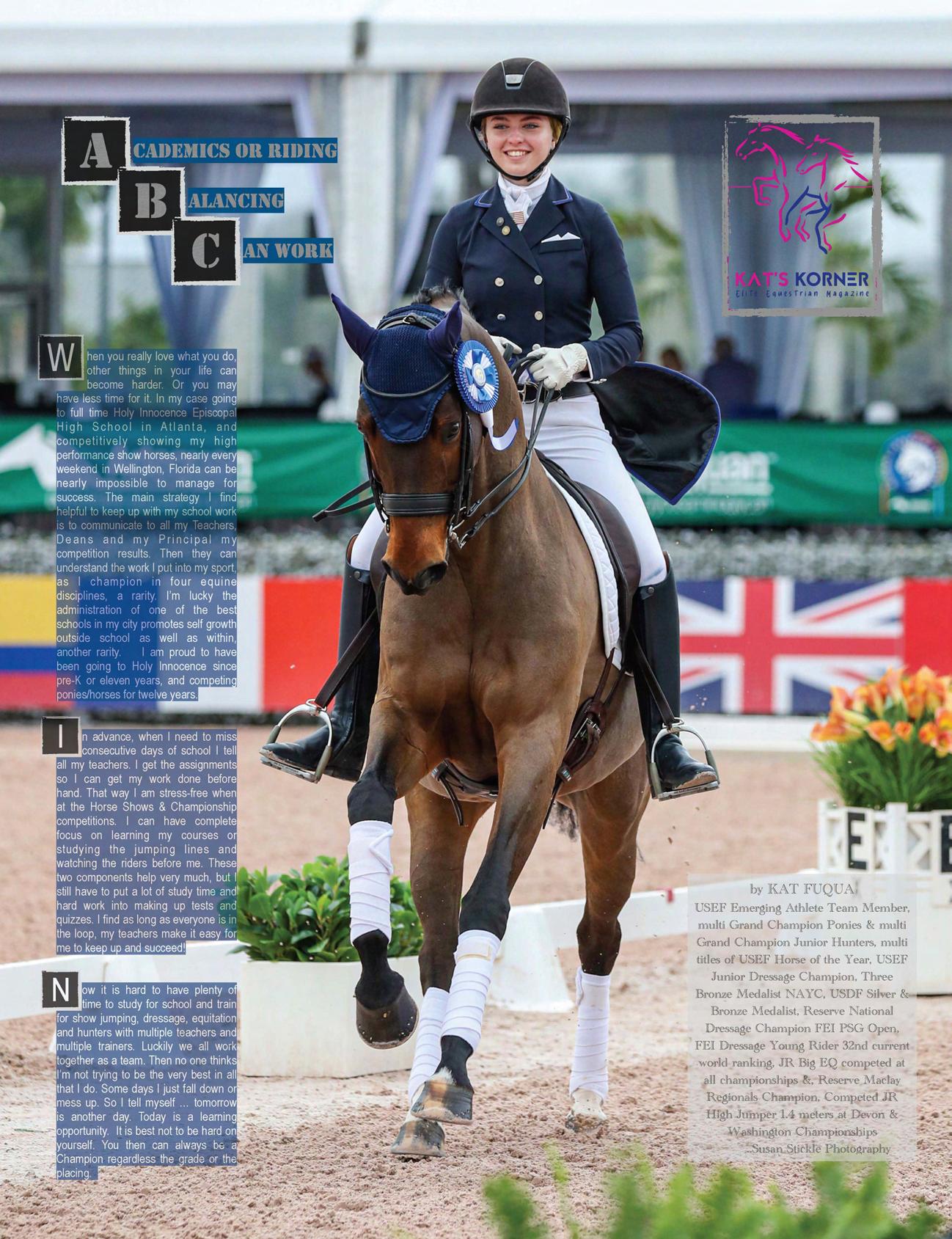
This past summer, from early June to straight past Labor Day, heat scorched the country, smashing thousands of temperature records. We often hear about pets that are left in cars suffocating from the heat but what about horses in trailers?
If a horse’s temperature rises to 106 degrees Fahrenheit for a prolonged period or if it tops 108 degrees for as little as 15 minutes, the damage to the body may be irreversible. There’s not much we can do about the heat, but you can do things to reduce the chances of your horses overheating when trailering.
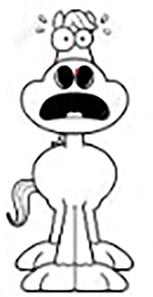
Construction. If you are buying a new trailer, you should add “heat control” to your list. Construction and design play an important role in reducing interior heat, so before you buy, here is what you should consider. Avoid Aluminum floors, non-painted aluminum sidewalls, roofs, and dividers. They not only conduct heat, they retain it, which is why aluminum makes good cookware. However, light-colored pre-painted aluminum, such as outer aluminum skin, will reflect heat. Wood floors have poor thermal conductivity, which means the heat conducted through the floor from the road will be minimal. Stay away from dark colors. They absorb light and heat, so think twice before matching the trailer body color to a dark color on your truck. Matching dark stripes and decals to your tow vehicle are okay if the body color is white or a light color such as silver or gray.
Design: Ventilation is critical in keeping horses cool. Lots of windows and vents will produce good airflow while driving. Tubular, rather than solid dividers, will allow air to circulate more freely inside the stall area. If you get stuck in traffic, the airflow stops, so having two to four fans up high in the rear and head area will keep the air flowing.
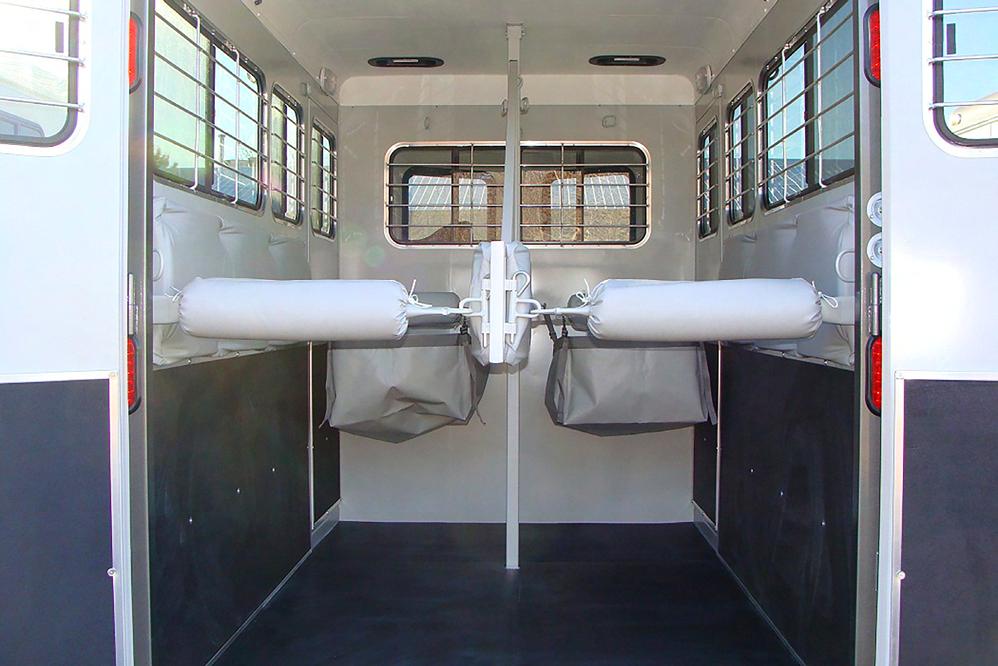
Dual-wall construction reduces heat more efficiently than single walls because the inner wall of a single-wall trailer will be just as hot as the outer wall since they are one and the same. Insulation between the walls will further lower the temperature from outside heat. However, if the trailer walls are insulated, don’t insulate the roof. Since heat rises, you don’t want to trap it. The ideal roof material should not retain heat, such as fiberglass, and be a light color that reflects sunlight rather than absorbs it. However, the fiberglass should have a good thickness and preferably steel reinforced to withstand accidents.
Existing Trailers: If you already have a trailer where the design and construction are not conducive to reducing the outside temperature, there are still things you can do to battle the heat. If you’re good with wiring or know someone who is, fans can be added to provide airflow. The hot wire that works your interior lights will also work the fans. Dual scoop vents can be added to the roof to let the heat escape. An RV service department or local body shop could do the work. If your horse overheats, you will need plenty of water, not only for drinking but for washing him off. There are existing thirty-gallon upright water tanks that will fit in the corner of a tack/dressing room for bumper pull trailers. If you know someone that can weld, adding a shelf to hold a thirty-gallon tank will fit under a gooseneck. And don’t forget sponges and buckets.
Window ventilation

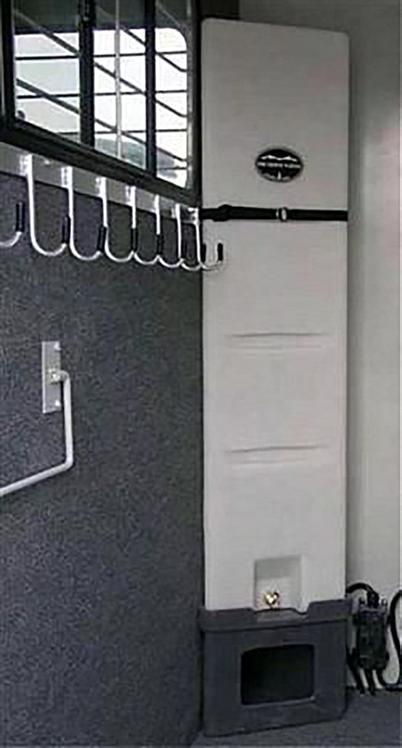

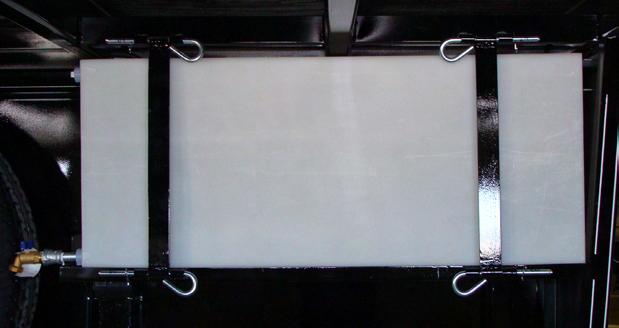
Water tank for a bumper pull
Water tank underneath, 30 gallon
Lastly, plan ahead. Check the weather for the days you’ll be trailering. On those searing hot days, travel in the early morning or later at night when it’s cooler. A few days before a longer trip, adding electrolytes to the drinking water and some water to their grain will help horses to handle the heat. Be prepared for the possibility of being stuck in traffic for hours. Being aware of the heat and how your horses handle the increasingly hot temperatures, will certainly be in their interest and well-being.
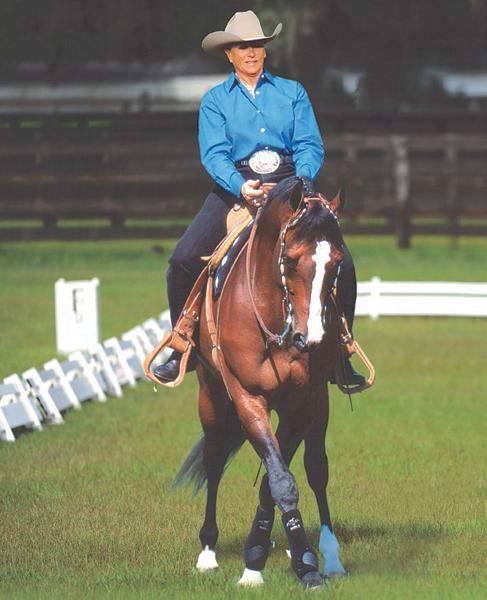 By Lynn Palm
By Lynn Palm
To define a Half Pass, the horse moves forward and sideways at the same time. The horse must be bent in the direction of travel, and the movement is done on a diagonal track.
In Traditional Dressage competition you will find the Half Pass either at the collected trot or the collected canter. In Western Dressage you will find the Half Pass at the collected jog and the collected lope. In Traditional Dressage the Half Pass is required in the 4th level and continues to the Grand Prix level. In Western Dressage you will find it in Levels 4 & 5.
In order to successfully accomplish the Half Pass, you must respect the ladder of lateral work to train your horse:
To create the bend in your horse, it is the same at any level.
• Inside leg aid creates the body of the horse to make an arc.
• The inside rein flexes the head inward, without bending the neck.
• The outside rein lies against the horse’s neck to keep the horse straight and aligned.
• The outside leg encourages the horse to bend the body around the inside leg.
• The outside leg asks for the Half Pass movement, while the other aids keep managing the horse in keeping the bend and staying aligned, not allowing the front legs or hind legs to lead and be crooked.
• The horse bends, stays straight in his body, allowing the legs to swing sideways; therefore creating the lateral movement.
As you advance towards your horse performing the Half Pass, the movement advances by creating more bend through the horse’s entire body, and the steps cover a longer stride laterally in the movement. Lateral movement is a necessity in developing your horse’s correct collection. Half Pass is also a great training movement necessary to perform canter pirouettes.
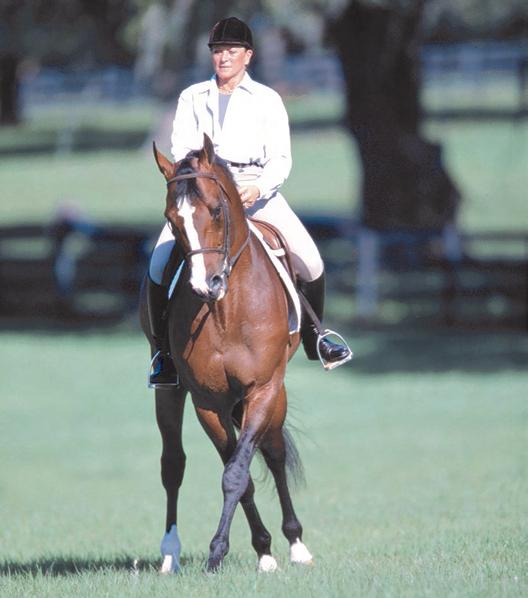
I have DVD’s that will help teach your horse all the lateral movements. In Dressage Principles for the Horse and Rider Volume 2, I show all the lateral movements listed above both in a Dressage Saddle and a Western Saddle! Remember: A horse is a horse. To do the Half Pass movement correctly, it‘s all about the correct position and balance of the horse. The saddle or the breed of the horse do not matter.
������������������������������������������������������������������������������������������������������������������� ����������������������������������������������������������������������������������������������������������������������������
The Half Pass is the most advanced lateral movement you can train a horse to do. I love the Half Pass; not only is it elegant, it’s also so fun to ride.1. Yielding 2. Turn on the Haunches 3. Shoulder In 4. Ravers 5. Travers 6. Half Pass
